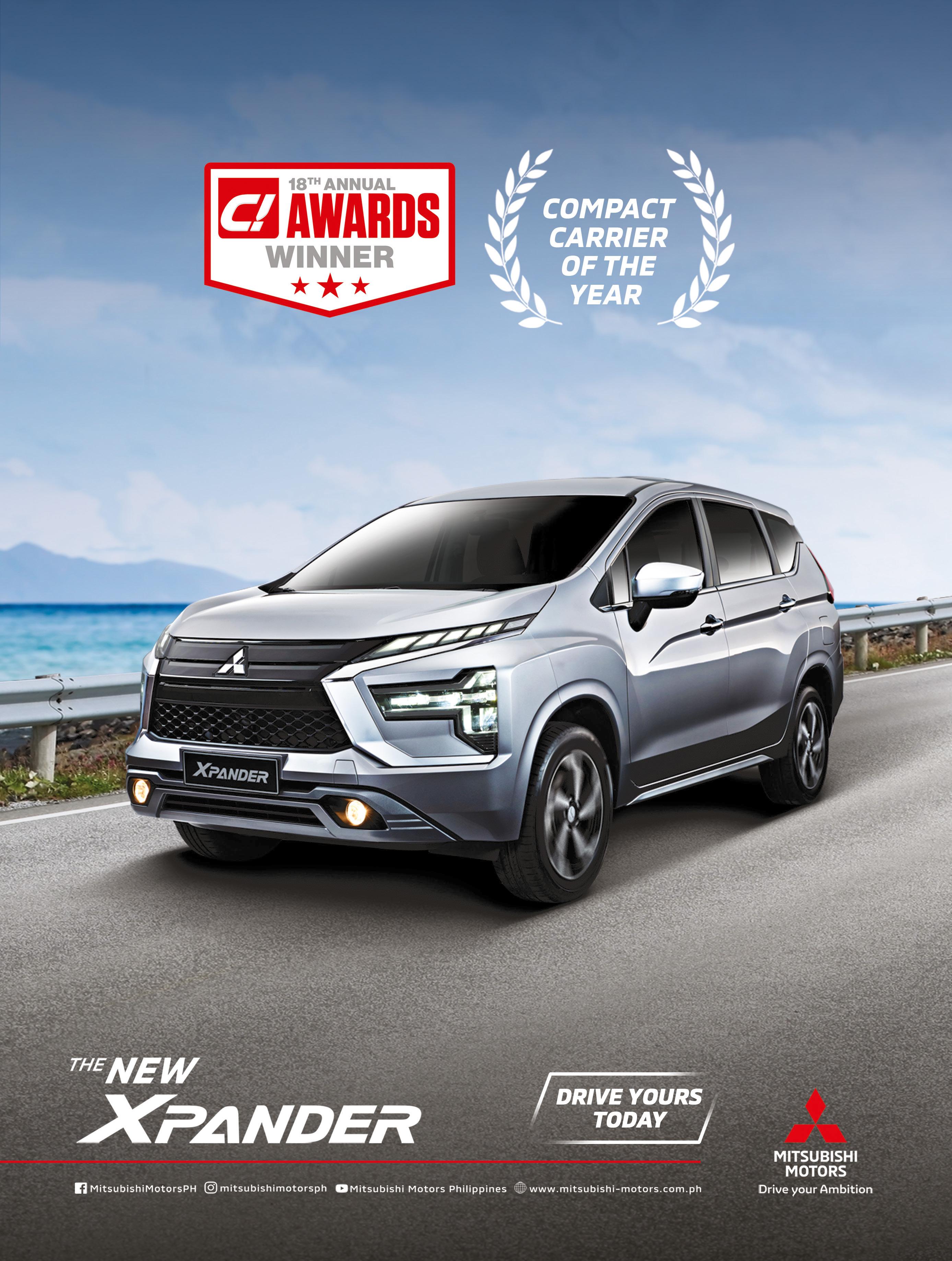











Each day we wake up to is a welcome tray of blessings, but a new year symbolizes a clean slate of opportunity- to make things better, to make things work, for family, friends and colleagues. Also to express gratitude and pay it forward. Here’s a big thank you from the entire C! Magazine team for all the love and support you’ve given us in the past year, we’re raring to do even better this year with bigger ground to cover in the world of motoring and beyond, just for you.
It’s inspiring to see how far the local automotive industry has come; it’s vibrant and buzzing with friendly competition and was practically overflowing with activity when we crossed over to 2023. That’s a very encouraging indication of what to expect this year, with more auto brands kicking into action with a wider portfolio of new and upcoming models we can’t wait to cover and report to you about. Since more of them are intensely vying for your much coveted nod of approval and signature on the dotted line, cars on the broader categories are getting more jampacked with features and amenities only found previously on higher tiers in the product line. Now getting Apple CarPlay and Android Auto on your entertainment system is like being offered cream and sugar for your coffee; it’s almost a given. People are starting to think getting a panoramic sunroof is a right, and not just a privilege. Kidding aside, it’s the best time to be an upwardly mobile young-ish urban professional with an active lifestyle, as you, my friend, are the automotive world’s rock star. Now we can confidently say that electrification finally has firm footing in our country, and we can give comparing our pace and progress to the more industrialized nations’ a rest, since the auto manufacturers are ready to push out as much Hybrids, PHEVs and EVs as we can accommodate, afford and acquire, that it’s prompting more and more commercial establishments to keep pace with the need for more charging stations and infrastructures. It’s also pushing the auto manufacturers to engineer their products
powered by internal combustion engines to be more fuel efficient and perform better all-around to extend their viability in this light. Kudos and congratulations to the Electric Vehicle Association of the Philippines (EVAP), your unwavering push and contributions towards electrification in the country are bearing fruit.

We have weathered the monumental challenges of the past few years, seen them somehow diminish as the last year faded out, and perhaps things have gotten better enough for
to say that it’s business as usual. But in a deeper sense uttering that line now seems a tad inappropriate or lacking at the least. For what we’ve been able to survive, transcend, learn and receive that’s gotten us to this point, it’s got to be better than usual. Happy New Year!
EDITOR-IN-CHIEF“...perhaps things have gotten better enough for us to say that it’s business as usual. ...For what we’ve been able to survive, transcend, learn and receive that’s gotten us to this point, it’s got to be better than usual.”
Ardie O. Lopez
us

 By Ardie O. Lopez
By Ardie O. Lopez
“The BMW i7 is an engaging drive despite it being almost sentient with all the active safety and intelligent driver-assistive features perennially at work in the background...”

 By Chris Van Hoven
The BMW Drive Experience By Ardie O. Lopez
By Chris Van Hoven
The BMW Drive Experience By Ardie O. Lopez



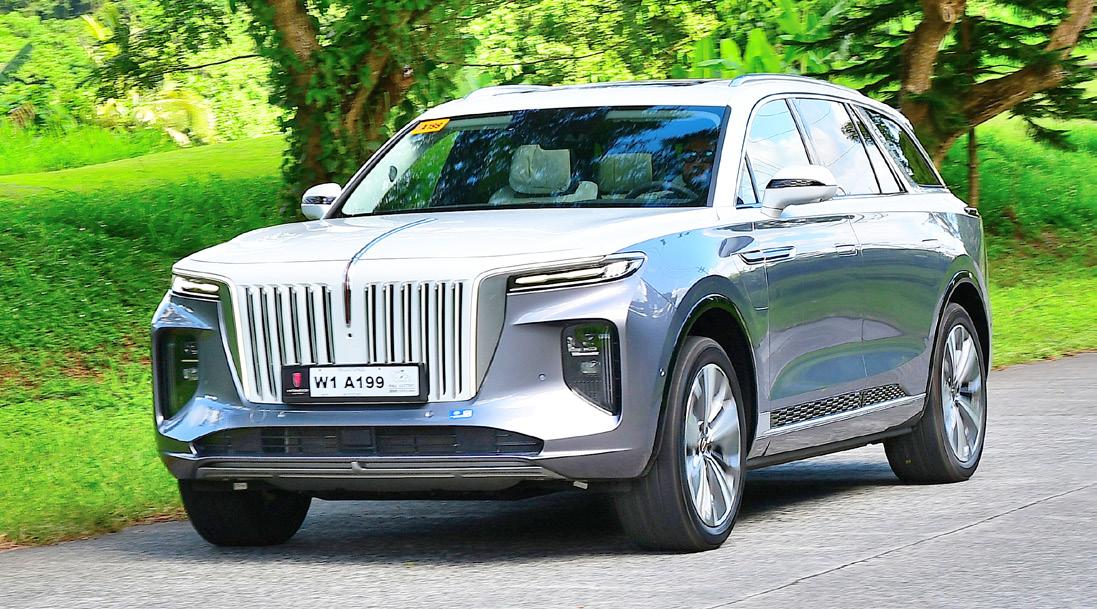



 By Ardie O. Lopez
By Ardie O. Lopez

“The work is challenging, daunting, definitely not for the shy and timid but exhilarating and rewarding for the experiences you get to absorb, immerse in, document and share for all to enjoy.”


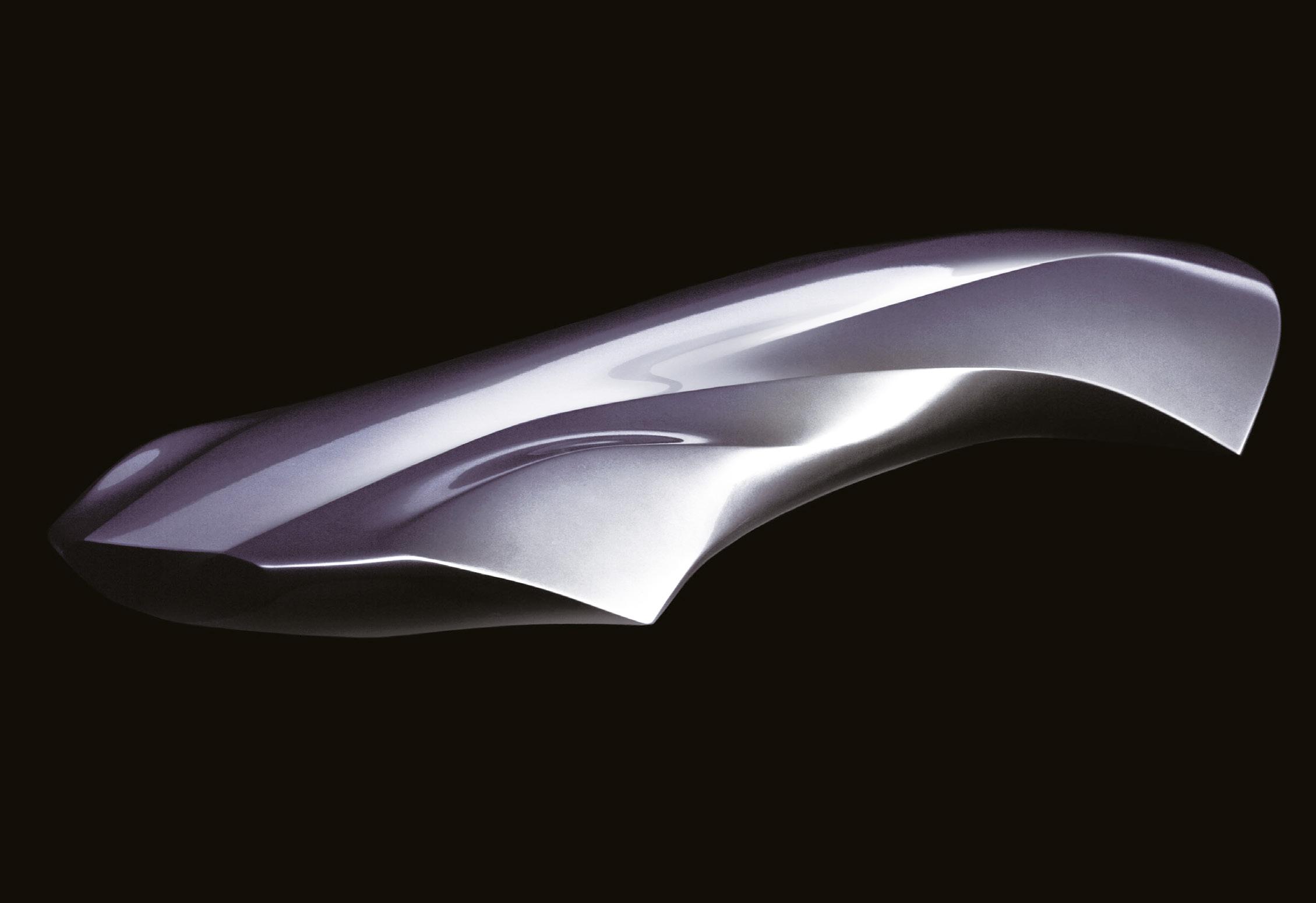 By Wowie Go
By Wowie Go
“Mazda has always been true to its pioneering ways and has time and time again underscored the connection of the driver with their cars.”
 By Francis G. Pallarco
By Francis G. Pallarco
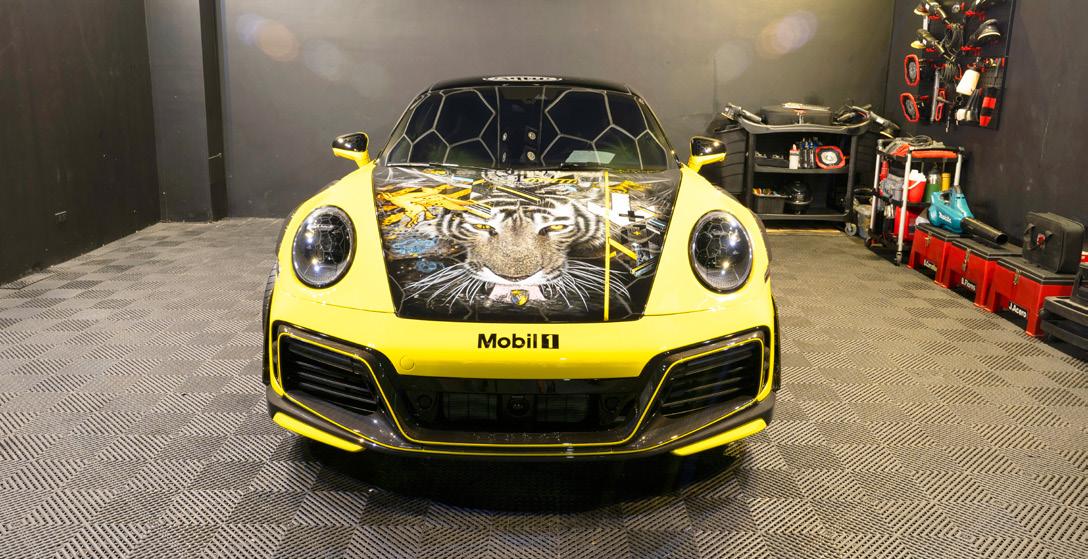










 By John O. Mendoza
By John O. Mendoza
By John O. Mendoza
By John O. Mendoza











 By Ardie O. Lopez
By Ardie O. Lopez

 By Chris Van Hoven
By Chris Van Hoven
 By Wowie Go
By Wowie Go
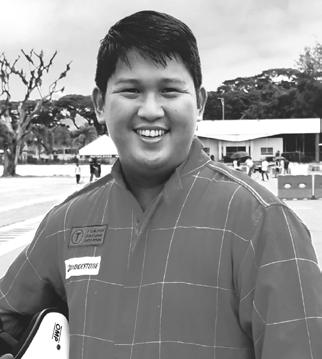

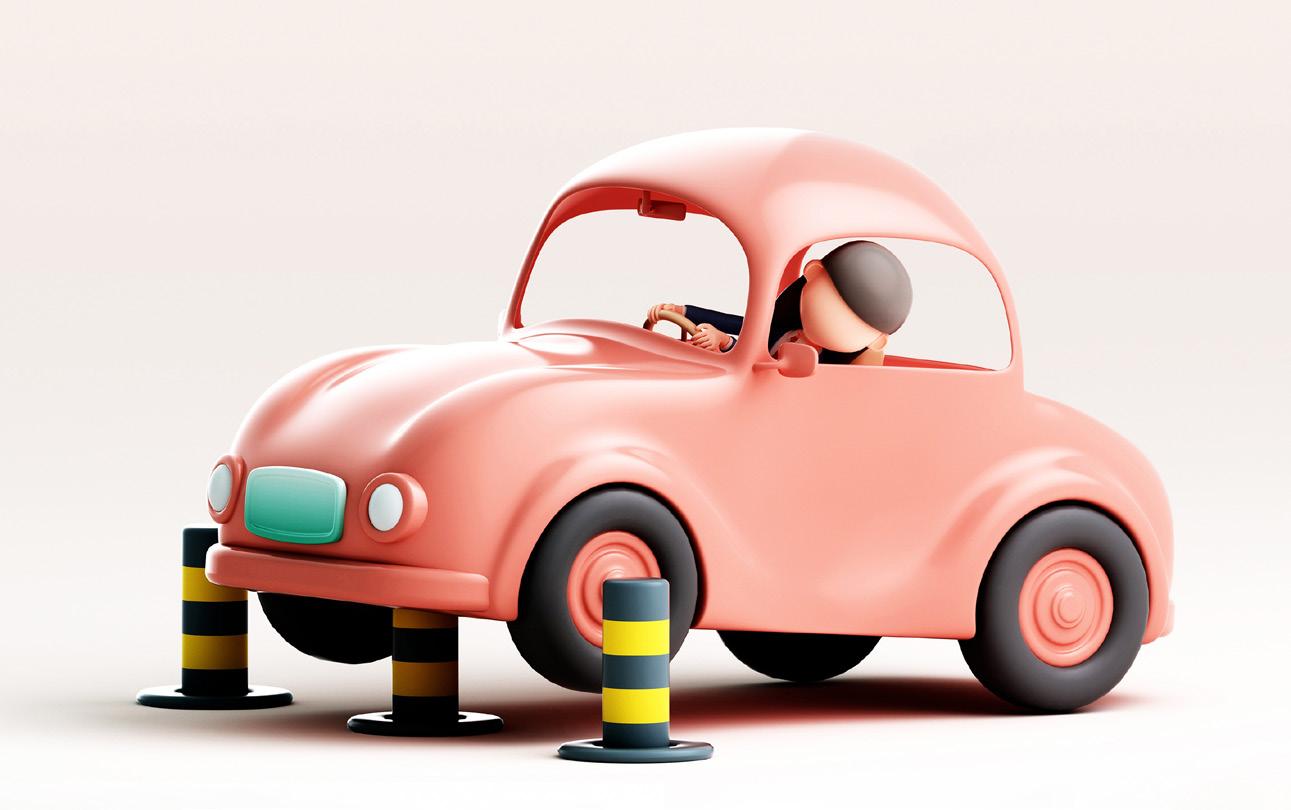 By Georges B. Ramirez
By Georges B. Ramirez







s we say goodbye to another year and welcome in a new one, I can’t help but feel a sense of excitement and anticipation for what’s to come. It’s a time for fresh starts and new beginnings, and for many of us, that means making some changes and setting some new goals for ourselves.
In the automotive industry, the new year is also a time for fresh starts and new beginnings. For car manufacturers, it’s a chance to unveil their latest models and show off the latest technology and features. For car buyers, it’s a time to think about what they want in a new vehicle and start looking for the perfect car to fit their needs, especially as they hit new milestones for the year, like entering the workforce after graduation or welcoming a new baby to the family.
One of the biggest trends in the automotive industry in recent years has been the rise of electric vehicles (EVs). As concerns about the environment and climate change continue to grow, more and more people are looking to EVs as a way to reduce their carbon footprint and make a positive impact on the world. In fact, many experts predict that the new year will bring even more advancements in EV technology, with longer ranges, faster charging times, and more affordable prices. And with
Chris Van Hoven EXECUTIVE EDITORthe growing support of the government, we could see EVs becoming more accessible to a larger number of potential customers, thanks to tax cuts and added incentives.
Another trend to watch in the automotive industry in the new year is the rise of self-driving cars. While fully autonomous vehicles are still a few years away, many car manufacturers are already working on semiautonomous cars that can take over some driving tasks. We’ve already seen technology such as lane-keeping and adaptive cruise control reaching more affordable cars. And since these advanced driver assistance systems (ADAS) are becoming more and more common, many experts believe they will play a major role in the future of the automotive industry.
As we look ahead to the new year, it’s clear that the automotive industry is going through some exciting changes and advancements. Whether you’re a car enthusiast looking for the latest and greatest in vehicle technology, or someone who simply wants a reliable and efficient way to get around, there’s no doubt that the new year will bring plenty of exciting developments in the automotive world. So as we start this new chapter, let’s embrace the opportunities that come our way and look forward to all the exciting things that the future holds. We can’t wait to see what 2023 brings.

“As we look ahead to the new year, it’s clear that the automotive industry is going through some exciting changes and advancements.”







Seems like I’ve been doing a lot of complaining about names lately. In the previous issue, my editorial piece pointed out the inanity of names given by manufacturers to their cars these days and the impact it has towards their ownership. Today, I’d like to take it a step further. Can we take a minute to talk about just how ridiculous the name of our highways sound?
Elsewhere abroad, when you think of motorways you simply think about letters and numbers and you know where you are: Route 66, the M1, Autobahn 7. Over here in our neck of the woods, to determine which highway you’re using, you’ll need to decode the province, town, or city each of the letters stand for: CCLEX, CLLEX, CTBEX, CALAX, and so on. Mind you, I’ve only just enumerated the ones that start with the letter C. We haven’t even gotten to the rest of the alphabet yet.
This isn’t exactly a new development. I remember back when I was still in college over a decade and a half ago, as a branding exercise for an advertising class, we were each tasked to create fictitious government projects which we needed to create an entire campaign around. We were still a decade away from the North Luzon Expressway (NLEX) being connected to the South Luzon Expressway (SLEX), so at the time I figured it would be a very good idea to use it as my ambitious new project. Knowing our government’s penchant for making clunky and sometimes senseless abbreviations, I named it the North Luzon Southern Extension project. Suffice it to say, my professor was the least bit amused to see
the banners that I made for the fake highway that read “NLSEX.”
I know it sounds incredibly juvenile and you’d be faultless to think that the government probably has safeguards in place to prevent project planners with the same mind as me from conjuring up sets of words that will spell out something vulgar like I did, but lo and behold we have the Taguig Intermodal Terminal Exchange currently being erected. Now, I wonder what those letters spell out?
Kidding aside, what’s a real shame is that we already have coded names for our roads and highways. Did you know that the stretch that connects NLEX, SCTEX, and TPLEX is actually called E1? Or that their southern counterparts are called E2? Two characters: a letter and a number. It’s simple, elegant, and uncomplicated. You will see these signs plastered on the side of the road from time to time but very little emphasis is ever given to these designations and no explanation on what they stand for.
The only reason I believe we’re forced to put up with these confusing names really boils down to one thing: branding, which I find incredibly ludicrous. To start, these private companies that put up these highways already have a captive market; we were going to drive their roads anyway. The only thing it does is make it difficult for drivers who are already borderline illiterate to know where they’re going. In a country where you’re allowed to stand up and look closely at pictures of road signs on the wall of the exam room just to be able to answer your driver’s test, do we really need this extra layer of confusion?
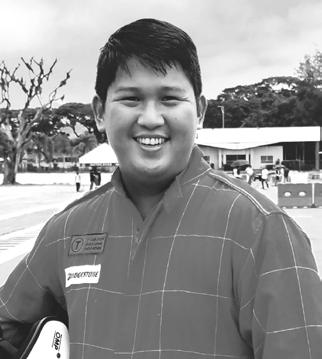
“The only reason I believe we’re forced to put up with these confusing names really boils down to one thing: branding.”









You may recollect the longrunning sibling rivalry between Porsche and Audi. Its battlefields have gone from on-road, off-road, and endurance and have carried it into the new realm of electric vehicles.
Porsche has a more extensive selection of electric vehicles to choose from. I left out the Turbo and Turbo S, which should be lumped with the Super Cars, and chose the Porsche Taycan GTS even if the Taycan 4S is all-wheel drive as the results were closer to the Audi RS e-Tron GT Quattro. The Porsche GTS puts out 595PS and 849Nm of torque, a range of 512km, and sells at $135,550.
I remember Audi’s monster station wagon, the RS6, that put out 579 PS, and as an instructor, I was so impressed. It outaccelerated the R8 then, and today the RS6 shattered that with a jaw-dropping 600 PS. If that wasn’t enough, the e-Tron GT Quattro has a max output of 646 PS! Let me say that this is in launch mode; otherwise, its output
Georges B. Ramirez SENIOR EDITOR
is 598PS. Shocking, really, but even more surprising is the 830Nm of torque! Its range is 139 km less at 373km, and at $145,395, you would dig just a bit deeper. However, only the Audi has the e-pedal or single-pedal driving. They are both allegedly easy to drive and control, but I will reserve my comments on usage after I have a chance to test these beasts.
As you can see, it is pretty close. If you consider a used Audi RS e-Tron GT, it would match up well too. But, I could not resist using the Quattro. I wouldn’t be surprised if we didn’t get a monster station wagon version soon. I certainly am a fan.
Come to think of it, the rivalry is very healthy as they are siblings, and it pushes them to improve faster; eventually, when at the top, the rivalry continues to test them. Never let them sit on their laurels, so to speak. And even if Audi has sports cars and Porsche has four doors, and both have SUVs, they focus on their market in a slightly different way which works for them. For this, I changed my title from sibling rivalry to synchronicity.
“The rivalry is very healthy as they are siblings, and it pushes them to improve faster.”
Ardie O. Lopez
EDITOR-IN-CHIEF
Chris Van Hoven
EXECUTIVE EDITOR
Wowie Go MANAGING EDITOR
Georges B. Ramirez
SENIOR EDITOR
Francis G. Pallarco
TUNER EDITOR
Monica N. Legarda
SENIOR COPY EDITOR
Angel S. Rivero
Miguel C. Bichara
Isabel N. Delos Reyes
CONTRIBUTING EDITORS
Michael L. Lhuillier
EDITOR-AT-LARGE
John O. Mendoza
WHEEL2WHEEL ASSOCIATE EDITOR
Kevin C. Limjoco
FOUNDING EDITOR / PRESIDENT /
EDITORIAL DIRECTOR
Mayette L. Asis
VICE PRESIDENT
Mary Jane O. Salazar
ADVERTISING TRAFFIC MANAGER
Malyn L. Bautista
Hiroshi D. Paderagao ACCOUNT MANAGERS
C! Publishing and Media Group, Inc. PUBLISHER
Michael L. Lhuillier CHAIRMAN
Paolo M. Puyat-Martel MANAGING DIRECTOR
Carl S. Cunanan
Kevin C. Limjoco
Michael L. Lhuillier
Paolo M. Puyat-Martel BOARD OF DIRECTORS
Mayette L. Asis VICE PRESIDENT
Merline B. Urdas SENIOR ACCOUNTANT
Mary Ann M. Benito CREDIT AND COLLECTION OFFICER
Paredes Garcia and Golez LEGAL COUNSEL
C! Publishing and Media Group, Inc. 10 Nathan St. White Plains Subdivision, White Plains, Quezon City, 1110 Philippines Tel: (+632) 7728 3720 to 21
Yu / Nora Liquido / Lyka-Mae De La Cruz-Andres
Tony Si / Felipe Estrella / Sab Delos Reyes / Carlo Ablaza / Raymond Rodriguez / Angelo Barron / Paolo Ella
Chris Yu / Willy Tee Ten / Froilan Dytianquin / Saul Babas / Cameron Arciaga / Jelene Sulit / Michael Dennis Uy
Lawrence Dimaunahan / Akira Utsumi / Norminio Mojica / Dominic Busran / CJ Yucoco / Mark Parulan
Elgie Nunez / Jasper Castro / Nadinne Capistrano / Elijah Sue Marcial / Edmund Araga / Rommel Sytin
Ira
Lawrence Dimaunahan / Germain Alilio / Dino Santos / Stacey Vasquez / Tine Liwanag / Ann Tayao
Cherrey Lou Villaester-Alvarez / Mia Dollentas / Angel Sardoma / Michael Breen / Takeshi Hara / Yosuke Nishi
Alfred
Distributed by Alphastream Marketing, Inc. No.5 Everite St., Calumpang, Marikina City, Philippines, Tel: (+632) 7945 5089
Copyright © 2023
The Editors and Publishers of this magazine give no warranties, guarantees or assurances and make no representations regarding any goods or services advertised in this edition. No part of this magazine may be reproduced, in part or in whole without written permission of the publisher.
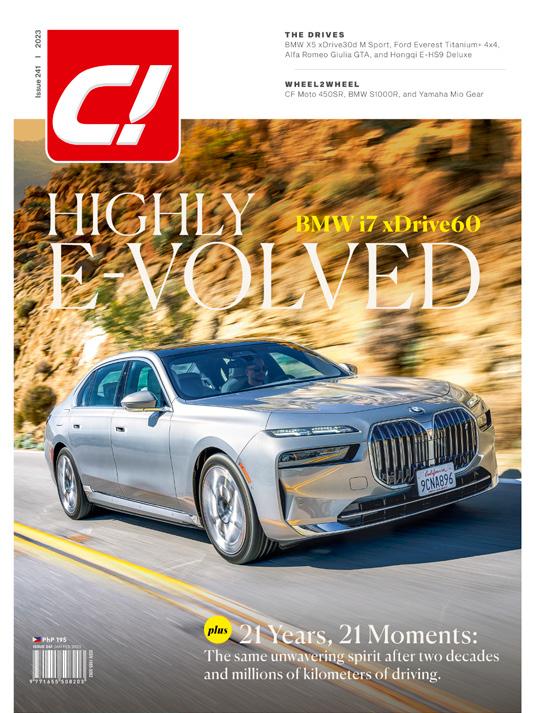
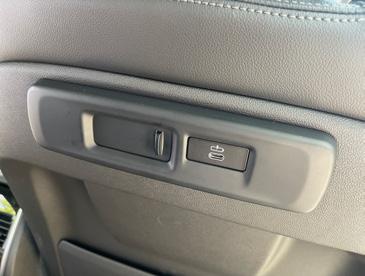






THE LONG-STANDING and most desirable mid-size luxury SUV standard in our Philippine market has consistently been the BMW X5 model series since its launch in 1999. The Lexus RX series periodically upset it over the years and only in the past couple of years has the model series been temporarily dethroned by the all-new Land Rover Defender 110 principally because it had offered more capacity and more real-world utility at a more affordable price point combined with its iconic pedigree. That changes now since the Defender has

three sizes (90, 110, and 130) to build from which is great but what isn’t great are the new significantly lofty prices and packaging.
Even with BMW’s own sensational fully electrified iX xDrive40 in play with more luxury, pace, and interior space, the current 4th generation X5 in xDrive30d M Sport trim still manages to drive with pride and deep abilities. Depending on your budget and needs, every BMW X5 through the generations are genuinely awesome and desirable. The lifecycle impulse of the popular crossover is said to occur in late 2023 with worldwide release by 1st quarter 2024. So even if there will be a new look and new features coming, anyone who buys this current model will have a lifetime of driving enjoyment and satisfaction with potential all-weather fuel range of well over 1,000 kilometers.
The Ultimate Driving Machine is always best experienced behind the steering wheel, regardless of what family member you choose in the BMW model range. In this X5, you literally sense the crossroads occurring between the future and the present in every component you see and feel. The X5 uses the outstanding Cluster Architecture (CLAR) modular platform that incorporates steel, aluminum, and carbon fiber. The 12.3-inch instrument cluster is fully digital, and it is supported by an additional 12.3-inch central infotainment display with new software, crisp, clear graphics and easy-to-understand menu structures accessed via the familiar iDrive controller. Thankfully, default controls are

still tactile with knurled knobs, modernized climate-control buttons, and complemented with generous amounts of soft materials.
Compared to its predecessor, the X5 (G05) is 36 mm (1 inch) longer, 66 mm (3 inches) wider, and 19 mm (1 inch) shorter in height. The sporty front bucket seats and rear seats are wrapped with ‘Vernasca’ leather with contrast stitching upholstery. Rear passengers have more legroom than before as well as new charging


points and better climate control through the updated B-pillar vents and the central control vents. The ‘Tetragon’ trim is attractive, nice to touch, and complements the ambient lighting.
I don’t mind that this xDrive30d M Sport model does not have height control, soft close doors, and a panoramic roof but I wish it did have a standard wireless smartphone charger to support the iDrive 7.0 system that has standard wireless Apple CarPlay and Android

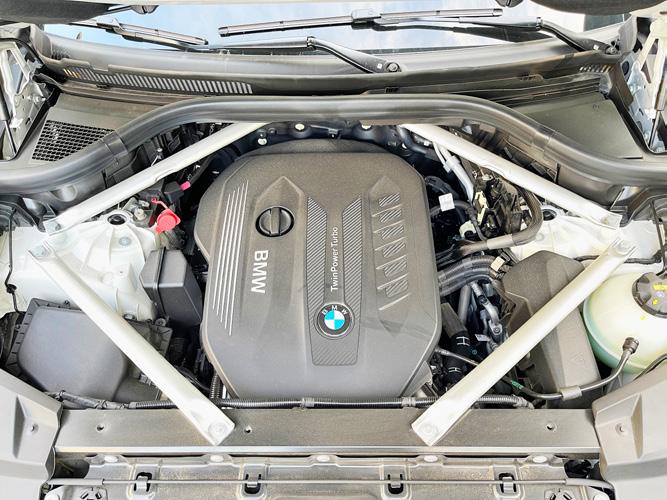

Auto smartphone integration, as well as a more premium audio system like Bowers and Wilkins or Harman Kardon for the surround sound system in place of the satisfactory 205-watt 10-speaker HiFi Sound System.
Under normal driving conditions, the Auto Start Stop function would be welcome to save fuel and carbon generation, but in congested Philippine driving conditions, I switch it off even if the system works very seamlessly now. The M aesthetic and aerodynamic treatments are not as obvious as before but they certainly work to keep the X5 running efficiently and planted. The enormous mixed wheels with tenacious rubber, appropriately powerful brakes (calipers painted bright red with M logos) and the large dual exhausts combined are all purposeful yet subtle. You would think the X5 with this packaging would be louder and too eager, instead it drives sublimely, quietly, and with absolute precision and class.

The standard new LED headlights are better than before, however once you experience BMW’s laser lights on multiple models, you would want the same level of evening illumination. If you don’t need pronounced off-road ability, but instead want a mid-sized all-surface luxury vehicle with a sporty and spirited inclination that can joyously cradle 5 adults with baggage over 90% of the roads in our archipelago, then this early 2023 BMW X5 xDrive30d M Sport is the very best in the business.
Plus: Reestablished segment standard, monumental driver enjoyment, achingly desirable with incredible athleticism, M treatments, ambient lighting, sophisticated and luxurious. More affordable with superior on-road dynamics compared to the competition. Minus: No Bowers and Wilkins or Harman Kardon surround sound system, no wireless smartphone charger, no Skylounge panoramic glass sunroof, no BMW Laser lights, does not have the uprated 282 bhp / 479 lb-ft 48V Mild Hybrid powerplant.
Cornering Brake Control (CBC), Hill Descent Control (HDC), Dynamic Damper Control, electronically controlled rear differential lock, Brake Energy Regeneration. • Wheels: 20”x 9J Front and 20” x10.5J Rear Mixed 10-Spoke Orbit Grey with Burnished Face (Bright Turned/Diamond Cut) Alloys • Tires: 275/45R20 110Y Front and 305/40R20 112Y Pirelli P Zero RFT • Weight (kerb): 2085 kg. (4587 lbs.) 0-100 km/h (0-62 mph): 6.4 seconds • Top Speed (mph): 234 km/h (146 mph) • Fuel Mileage: 6.2L/100km (Overall) • Price as tested: PhP 5,990,000.00
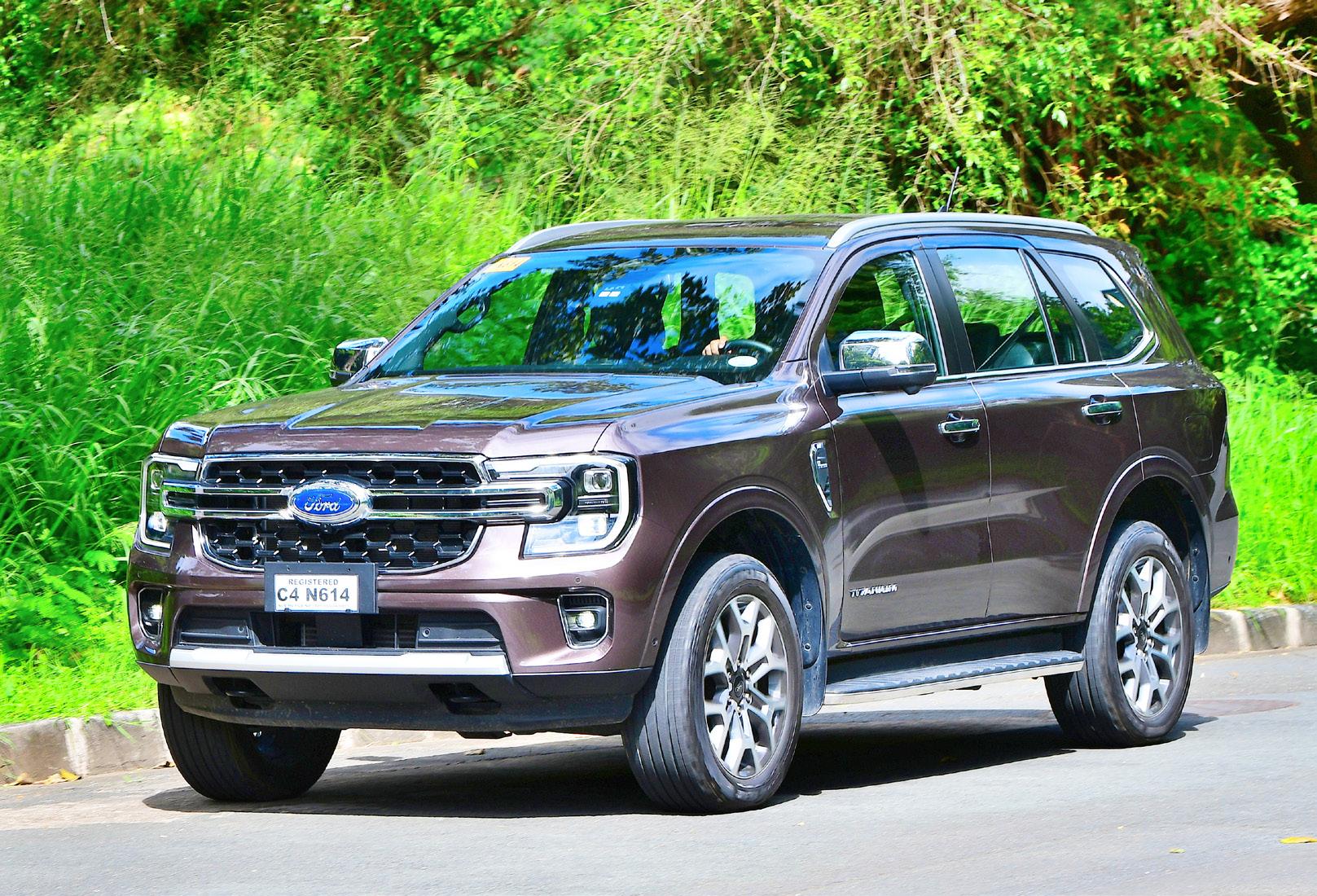
MY PERSONAL HIGH HOPES for the next generation Ford Everest to be the definitive very best in its class was thwarted by its initial domestic packaging. For my second round of product immersion, I retested the same locally available top-spec Titanium+ model in its unique and attractive Equinox Bronze variant-exclusive color. Now with more time of real-world in-country testing, most of my assessment has remained consistent however I will note that a few new model features have brightly risen to the occasion.
First, settling some dimensional confusion. Both the next generation Everest and Ranger received significant chassis and drivetrain
upgrades that improved both their comfort, capacity, and off-road abilities. Each in their own particular improvements which makes both updated models their very best versions of themselves. However, as I shared with my last review of the Ranger Wildtrak 4x4, the bulk of these upgrades are applied to functions that unfortunately may not be used as exhaustively as in other markets. I am very pleased that these new features exist but for our market, they cannot solely define the models.
For example, the 50 mm longer wheelbase and 50 mm wider tracks on the Everest did improve interior capacity but nowhere nearly as profound as we had expected. Because we at C! test vehicles for a living, we are by vocation more sensitive to changes. For the “every person” though, if not informed in advance, the majority may not perceive the minute nuances beyond being drawn to the new obvious electronic screens and aesthetics. We had quite a few folks, who own the last generation Everest in top form, step inside and they could barely recognize the proportional size improvements in the cabin.
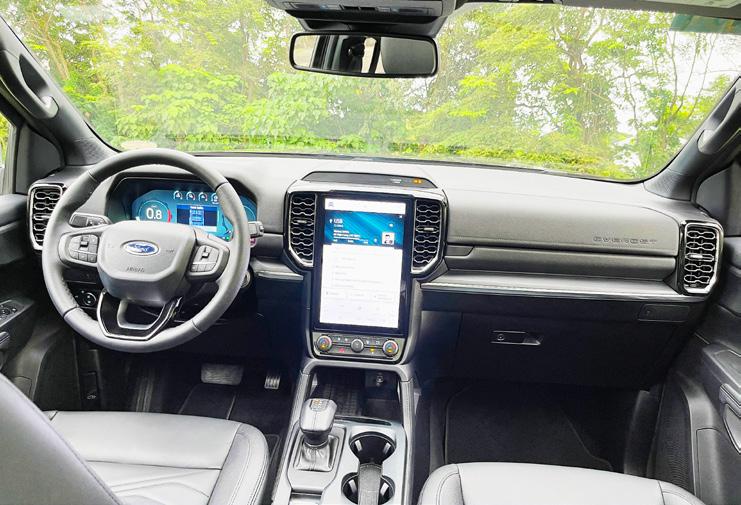

Moreover, these same current customers expected better designed seats with more color and material options. The older Sonybased 10-speaker SYNC3 infotainments systems also sound exponentially better than the new 8-speaker SYNC®4A system. The lovely huge screen actually makes that aural difference even more irritating.
Just like the Ranger Wildtrak 4x4, the current top variant Everest Titanium+ 4x4 gets the revised Bi-Turbo engine and recalibrated 10-speed automatic gearbox. Amazingly, despite losing some precious horses (-4 bhp) in the process of achieving pronounced NVH refinement and better engine efficiency, both top variants had clear dynamic performance improvements, which is a relief. I still pine for the new 3.0-liter V6 twin-turbodiesel producing 247 bhp / 442 lb-ft of torque and the intelligent 4A transmission mode but I am willing to accept the current drivetrain setup for practical reasons. The new Everest and Ranger do perform better than before using the mostly carried over overachieving 2.0-liter Bi-Turbo engines. What frustrates me is that Ford Philippines came so close to importing the very best in class models. Thankfully for both the end users and for Ford, all they have to do is add some items in the available parts bin. For the high retail prices though of the top-spec models, these features should have come as standard; the 12-speaker Bang & Olufsen™ audio system, 9 airbags (two more than what we get now), 12.4-inch instrument gauge (with more graphic configurations that include classic analog tachometer and speedometer instrumentation) and ambient interior lighting.
Again, much like the new Ranger Wildtrak, the off-road ability of the Ford Everest Titanium+ 4x4 is best-in-class where it feels peerlessly planted, effortless, and confident. The wealth of new gadgetry combined with focused engineering makes the midsize 4x4 SUV the most accomplished in its class offroad. On-road the ride is choppier than before as it runs on 10 mm less tire width, 255 now compared to the previous 265 but ironically on better compound tires. I expected much flatter handling and posher ride compliance after the wheelbase stretch and updated suspension. Thankfully the NVH is remarkable. The steering is more precise and definitely looks and feels better than before. The new brakes are more powerful than before and work better with all the active safety measures.
Words: Kevin C. LimjocoThe new cabin has the most soft-surfaces and contrasting finishes in its class which will definitely attract new buyers especially those who are purchasing their first mid-size SUV. The new cabin is the most sophisticated and most comfortable for the model series ever with abundant charging points that include secure wireless smartphone charging and a wealth of cup/drink holders. Cabin volume remains essentially the same though the third-row seats do have a touch more legroom than before which is important. The cool new short-throw back-lit e-shifter is great. For extra traction on 4L, the electronic rear differential lock can be activated but through the Sync4 infotainment touchscreen,



I wish there was a dedicated physical toggle for this function.
The 2023 Ford Everest Titanium+ 4x2 variant may look the same and it costs P316,000.00 less however it loses a lot of essential standard equipment along with the 4x4 drivetrain (with its Terrain Management System) which includes the comprehensive safety suite (Advanced Driver Assist Technology), the stronger Adaptive Matrix LED Headlights (though the LED multi-reflector system is already better than its predecessor), smaller TFT instrument cluster from 12 inches to 8 inches, no Electronic Locking Rear Differential, it uses a 6-speed automatic instead of the 10-speed, and it uses the single turbo version of the 2.0-liter engine that produces 168 bhp @ 3500 rpm and 299 lb-ft @ 1750-2500 rpm which is actually less fuel efficient among other deleted features.
Without a doubt the new generation Ford Everest model family will be a resounding success for Ford Philippines. I reckon their issues at this point in time are making deliveries rather than sales. I am confident that the new Everest will be even more successful that its predecessor. I certainly desire more standard equipment that I feel would make the top-spec models even more desirable to more discerning buyers, but despite all that, I recognize the essential improvements and huge equipment upgrades.
Plus: Superior to its predecessor, excellent C-Clamp signature adaptive matrix full-LED headlights and rear LED lights with LED front fog lamps, strong LED puddle lights, overall most attractive mid-size ladder-frame SUV in the market, quietest and most complete interior packaging, best off-road ability in its class, panoramic roof, most comprehensive active safety equipment, best brakes in its class, powered third row and trunk, largest infotainment screen at 12 inches in portrait form featuring SYNC®4A with Wireless Apple CarPlay® & Android Auto™ Compatibility and wireless smartphone charger.
Rating 9.5/10
Minus: Price. The active safety measures can be way too aggressive, the standard 8-speaker system does the large screen an aural disservice, no optional 12-speaker Band & Olufsen audio, no 4A transmission mode, no Ambient Lighting, no 12.4-inch instrument screen option yet, limited instrument screen configurations, no 3.0-liter V6 turbodiesel option yet.
Specifications — 2023 Ford Everest Titanium+ 4x4


Engine: Inline-4, 1996 cc, dohc 16V, Direct Injection Intercooled Bi-Turbodiesel, 10-Speed AT • Max power: 207 bhp @ 3750 rpm • Max torque: 369 lb-ft @ 1750-2000 rpm 0-100 km/h (0-62 mph): 9.3 seconds • Top Speed: 205 km/h (128 mph) • Fuel Mileage: 8.3 L/100km Overall Price as tested: PhP 2,495,000.00 (Titanium+ 4x2 variant PhP 2,179,000.00)
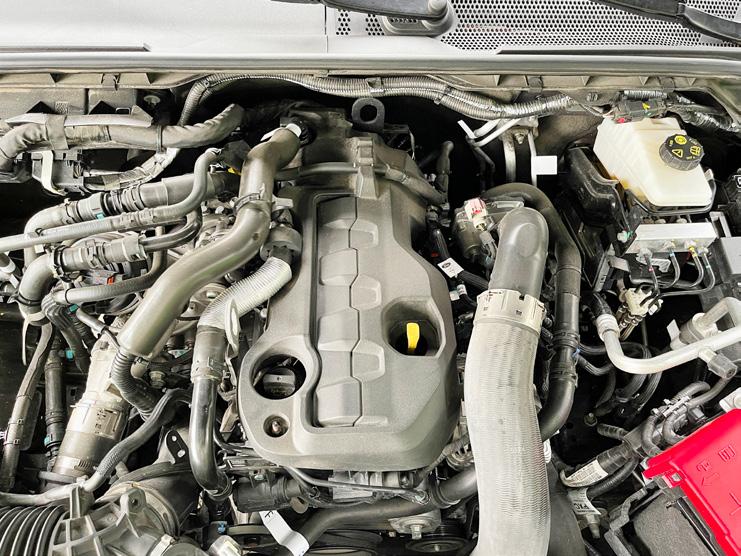

 Words: Kevin C. Limjoco
Photos: Isabel N. Delos Reyes
Words: Kevin C. Limjoco
Photos: Isabel N. Delos Reyes
I HAVE CALLED quite a few large vehicles “land yachts” over the years but the all-new fullsize 7-seater Hongqi E-HS9 Deluxe AWD SUV sets a new standout level. Seemingly inspired by the design cues from Rolls-Royce and Bentley, the fully-electrified behemoth looks even better in person, and more importantly performs astoundingly better than expected.
The Hongqi brand has been around since 1958, building the state vehicles for the Chinese leaders and their domestic market ever since. It has been regarded as the pride of China’s national automobile industry, and an iconic symbol of the China automobile business. Now driven by national innovation development strategies, Hongqi also currently produces a variety of potent gasoline-fueled luxurious sedans, crossovers, and SUV’s set for international export sales, but the brand intends to enter our Philippine market specifically with their crown jewel, this fully electrified E-HS9 model in three AWD variants.
The entry Executive model uses an 84-kWh battery with equally powered front and rear motors (215 hp / 221 lb-ft, 429 hp / 442 lb-ft of torque in total) with a realistic range of approximately 380 kilometers, has the least standard equipment of the three variants but
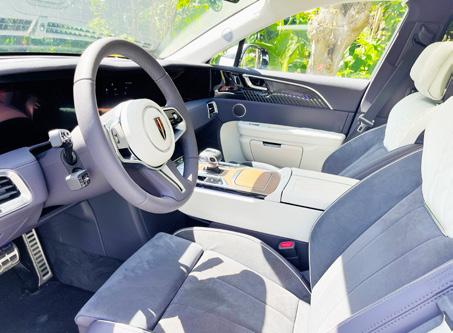

still has strong equipment levels in comparison to its direct premium ICE equivalents in our market, and was debuted to the public in last year’s 10th Philippine Electric Vehicle Summit held by the Electric Vehicle Association of the Philippines. The elegant EU-spec Hongqi E-HS9 Deluxe model tested here in two-tone Glacier White and Silver Grey exterior with Alcantara®/quilted PVC in charcoal Grey/ White interior shares most of the dynamic and luxury equipment (99-kWh battery, 551 hp / 553 lb-ft, 441-kilomter range) with the topspec Flagship model, but it does not have the adaptive suspension, more airbags, does not use Nappa leather instead of PVC, and does not have the captain seat middle row (seats 6 instead of 7).

All three variants share the same proportions, essential components, panoramic moonroof, expansive electronic technologies like the six smart screens, soft-close doors, hidden door locks, powered third-row, interior lights, Level 3+ autonomous driving system, and high-level build quality. The length is 5209 mm, width is 2010 mm, and height is 1731 mm on a 3110 mm wheelbase. Approach angle is 22.5 degrees while departure is 22.4 degrees. The boot with the third row fixed has a 438-liter capacity which swells to as much as 1814 liters with both the second and third rows folded flat. Three full-size golf bags can fit lengthwise with the third row folded without compromising the second-row comfort levels of backrest incline and legroom. The very comfortable seating

has variable settings to optimize maximum comfort for all occupants. The third row has its own device charging ports, climate control and genuinely can accommodate two adults with reasonable legroom.


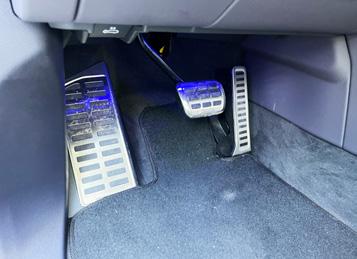
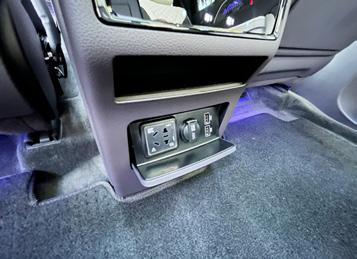
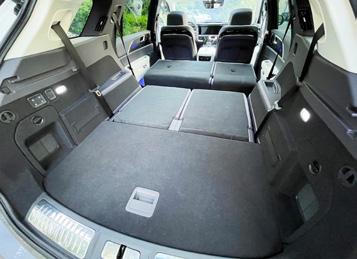
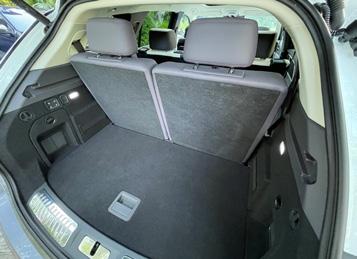
It weighs a whopping 2580 kg with a drag coefficient of .34 cd., but drives like a much smaller saloon. The Hongqi E-HS9 features the Quectel AG15 module integrated with the Qualcomm® 9150 Cellular Vehicle-toEverything (C-V2X) chipset solution. It is the industry’s first production vehicle that has achieved 100% validation of driving assistance warning in multiple LTE-V2X communication scenarios and has now become the world’s first commercialized vehicle to feature LTEV2X technology as well.

The Hongqi E-HS9 Deluxe has multiple charging options from a 150/108 kW CCSplug/Combo 2 that can charge a completely depleted battery in 30 minutes, non-contact charging which can fully charge the vehicle in 8.4 hours, to the standard Type 2 (Mennekes - IEC 62196) 1-phase 32A (7.4 kW) 230V / 1x32A 7.4 kW household wall socket charger that will charge in 12h:15m. Keep in mind that these charging figures are when the 99-kWh battery is completely depleted. In most realworld scenarios, you would be topping up the vehicle at the end of the day like you would a cellphone. In fact, the Hongqi E-HS9 can also function as a power source by disconnecting the rear right charging cable, flip up the small cover on the charge handle, and you will find an external plug to power a night’s tent facilities on an out-of-town trip with the family.

The Hongqi E-ES9 is a genuine AWD SUV despite its massive 21” x 9J alloys wrapped with 265/45R21 108W XL Michelin Pilot Sport 4 tires that look like it should remain only on-road. Even without the flagship’s adaptive suspension, the Deluxe model, also like the Executive model, use fully independent and robust aluminum suspension, double wishbones in front and multi-links at the rear. The powerful brakes are all vented with the front being managed by 4-pot calipers while the rear are handled by single sliders.
The E-HS9 has multiple drive modes that manage every setting and supported with different acoustics and interior ambient
requirements. The exterior lightshow is one of the very best in the business too, and all crisply unique. From the redline on the hood, to the “Wings of Hongqi” greeting lights. The signature front and rear lights are also brilliant. The standard 12-speaker audio system doesn’t have to work hard to create aural pleasure in such a quiet cabin either.

There are a lot features and new technologies to get accustomed to, which are entertaining and very linear. Yet the greatest experience is how it drives with locomotive thrust and shocking agility. We enjoyed every moment with the Hongqi E-HS9 Deluxe. The retail pricing has not been set yet, but it will be very competitive and it should earnestly lure buyers away from the default premium brands. It will be significantly cheaper to run and maintain for sure as well, without producing emissions.
Plus Massive presence, a genuine standout, spacious, the new supreme luxury alternative, brilliant light treatments, sophisticated, excellent range and dynamic performance.

Minus Not officially sold in the Philippines yet, CarPlay and AndroidAuto connectivity not applied yet, better with adaptive suspension and even better audio system.
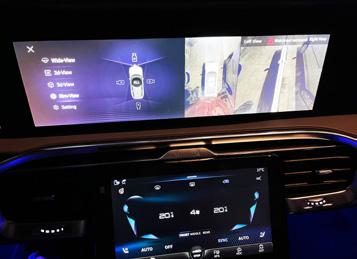
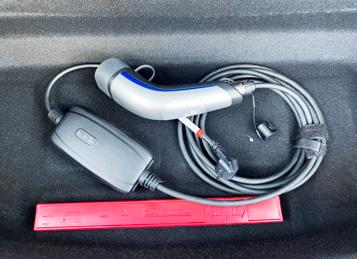
Specifications — 2023 Hongqi E-HS9 AWD Deluxe
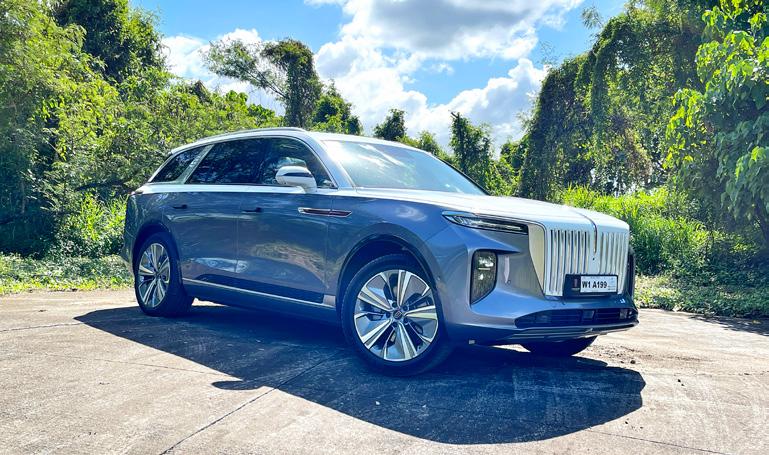
Engine: Dual Permanent Magnet Synchronous AC motors, front motor 218 hp / 221 lb-ft @ 0-15000 rpm, rear motor 333 hp / 332 lb-ft @ 0-14500 rpm, 99-kWh liquid-cooled lithiumion battery pack, 400 Voltage, 1-Speed Direct Drive. • Max power: 551 bhp (411 kW Total Combined System Power)

Max torque: 553 lb-ft (750 Nm Total Combined System Torque) • 0-100 km/h (0-62mph): 4.9 sec. • Top Speed: 200 km/h (125 mph) Governed
Fuel Mileage: 2 L/100km equivalent overall, 441-kilometer heavy duty range (465-510 kilometers / 289-320 miles range possible) Price as tested: PhP 6,000,000.00 to 8,000,000.00 (approximate range)
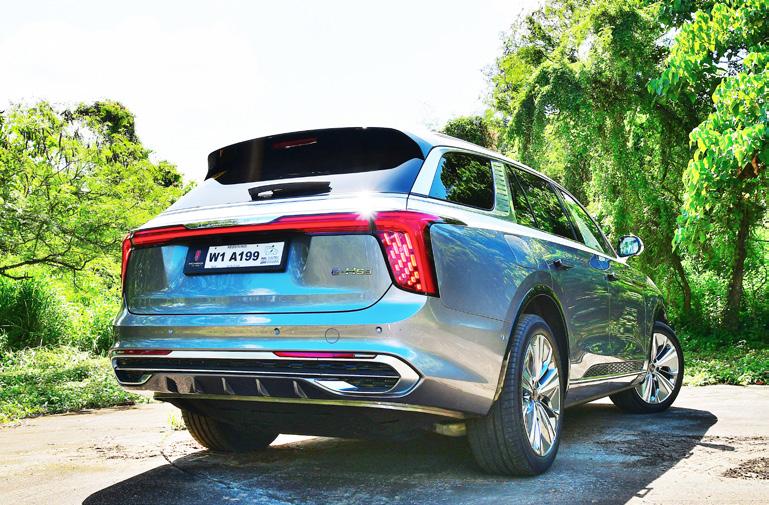
WHEN THE BMW M3 Competition-beating standard Alfa Romeo Giulia Quadrifoglio simply isn’t enough to satisfy the soul, 500 extremely lucky and wealthy owners were able to acquire the very limited special edition GTA and GTAm (in a 50-50 even production split) variants to quench that that thirst. This Trofeo White colored Alfa Romeo Giulia GTA seen here (the two other colors: Montreal Green and Etna Red, are meant to evoke the colors of the Italian flag) and driven in the Philippines is # 180/500. What makes this particular unit even more unique is that it is a fusion of the two variants.

The Alfa Romeo Giulia GTAm essentially is the more extreme variant that weighs a full 220 pounds (100 kg) less than the standard Giulia Quadrifoglio and differentiates from the GTA by losing its rear seats but gains a rollcage and an Alcantara® upholstered
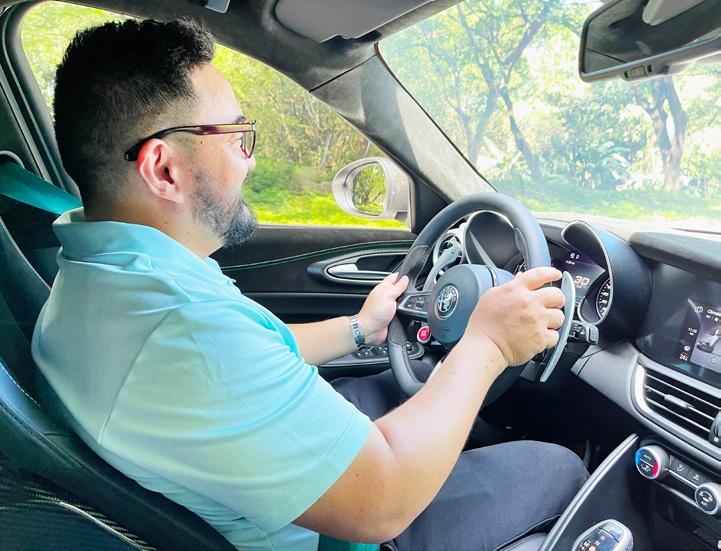
basin, no rear safety belts, the front doors are opened with “pull loops” instead of a handle, the more aggressive front racing seats use 6-point SABELT seat belts, thinner windshield glass, and the glass side windows and rear windshield use Lexan polycarbonate while attaining the more aggressive carbon fiber accoutrements that includes the 4-position 155 DTM-inspired rear wing and a front splitter that can extend by as much as 40 mm.
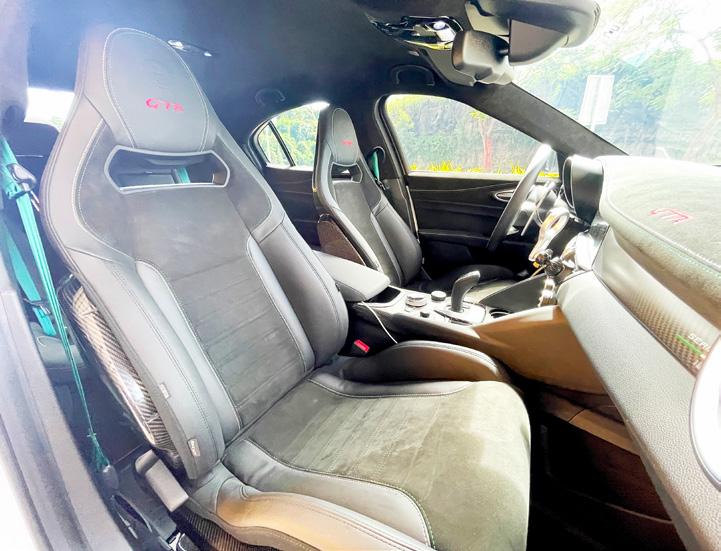
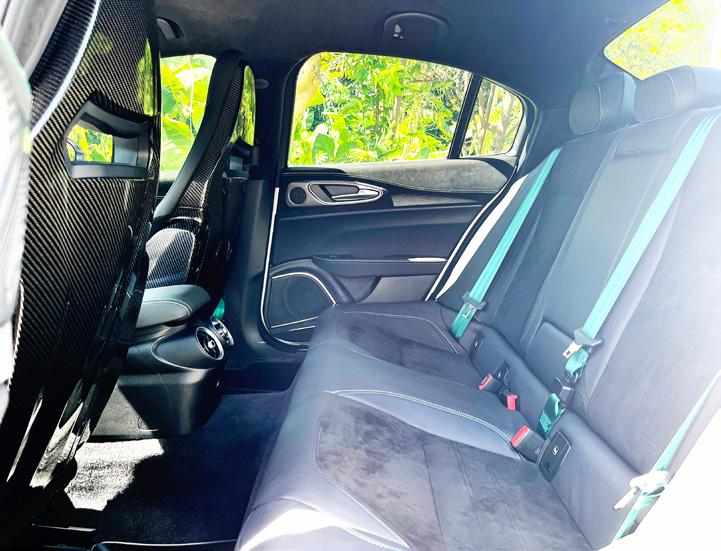
The lone Philippine-spec GTA (the initials stands for “Gran Turismo Alleggerita” or “Gran Turismo Lite”, invented in 1965) here weighs 132 pounds (60 kg) more than the GTAm but it does not compromise the super sedan’s enhanced abilities, in fact, the bespoke packaging is even more desirable as it shares all the great bits of the stripped car, which I will expound on in a few moments, but retains the comfort and practicality of a proper rear seat with matching green seat belts with the front carbon fiber sport bucket seats, functioning rear glass windows, a proper rear glass window, proper front door panels, and it has the full GTAm aerodynamic measures. A regular GTA would have a much smaller rear trunk lip spoiler and a less aggressive front spoiler yet it would have still produced 100 % more downforce than a standard 505 bhp Giulia Quadrifoglio. With the GTAm aero, this GTA produces three times the downforce of the standard Quadrifoglio and twice more than if it had the standard setup.
You will notice that the new carbon fiber aero side wings have Sauber Engineering written on it. That is because the Swiss firm with 27 years of experience in Formula 1, armed with their very own wind tunnel, played an active role in the design, prototyping and manufacturing of the aerodynamic components of the Giulia GTA/m.
The GTA and GTAm also benefit from a special new air extractor capable of increasing the car’s ground effect, thus guaranteeing excellent road holding at high speeds. Alfa Romeo Racing ORLEN Formula 1 drivers Antonio Giovinazzi and Kimi Räikkönen had active roles on the Balocco Proving Grounds in Italy with the aerodynamic component developments as well as Teodoro Zeccoli and Andrea de Adamich. The results are the extensive use of carbon fiber on the new front bumper, side skirts, fenders, hood, boot, roof, diffuser, fully faired underbody, new air extractors capable of increasing the car’s ground effects, wheel arches, rear arch inserts and spoilers for truly incredible precision, agility, and stability. The four doors are made of aluminum. The carbon fiber driveshaft from
the Giulia Quadrifoglio is carried over, while the interior also gets generous carbon fiber components from the steering wheel, to the front seats, trim, and much more.






Aiding the decrease of weight and improved aerodynamics are increased front wheel tracks by 25 mm and the rear by 50 mm, riding on glorious F1-inspired single center-lock mixed
clover-designed alloys wrapped with extremely tenacious Michelin Pilot Sport Cup 2 tires managed by appropriately massive carbon ceramic brake discs with Brembo® calipers.

The last dynamic improvements are: the sensational titanium Akrapovič central exhaust system, ECU tuning, improved polished piston cooling flow, redesigned reinforced
connecting rods, increased engine and transmission circuit cooling, retuned adaptive dampers, new bushings, new springs, retuned ESP (traction and stability controls), larger turbo compressor wheel for extra boost rpm, bespoke valve springs and tricked-out oil cooling. The result of the engine upgrades on the Ferrari-developed twin-turbo 2.9-liter V6 increased peak horsepower from 505 bhp to 532 bhp while torque remains the same at 442 lb-ft (600 Nm). With the weight loss and power gain combined with the enhanced aerodynamics, superior brakes, and retuned suspension, the GTA is a super saloon to keep, share and enjoy for a lifetime.

The Race Mode setting on the DNA (Drive Mode Selector) disables traction and stability control while activating the overboost function. When set on the less aggressive modes, the GTA is actually quite docile. It is definitely tauter than the standard Giulia Quadrifoglio and I did wish that it came with the rocking 900-watt 14-speaker Harman Kardon audio managed by the 8.8-inch infotainment system so you can also enjoy the brilliant and intoxicating Italian thoroughbred when you are not driving aggressively. It never felt crashy and too compromising like many supercars and hypercars.

The owner of GTA # 180 also gets a special Bell helmet in unique GTA livery, a tailormade Goodwool car cover with his name and Philippine flag, special tools, as well as a custom-fit racing suit, gloves and shoes. The Philippines’s single Alfa Romeo Giulia GTA was sold by Alfa Romeo /Abarth reseller, Petromax Enterprise.
Plus The definitive limited-edition luxury sport sedan. Ferociously dynamic yet can be driven responsibly every day. Generous amounts of desirable equipment, uniqueness, and a sea of Alcantara®. Charismatic and life-defining. The full GTAm Sauber Aero Package. Minus SOLD OUT, only 500 units produced. No 900-watt 14-speaker Harman/ Kardon audio system to save weight.
Rating 10/10
x10.5J Rear Mixed Center-lock Cloverleaf Alloys Tires: 265/30R20 94Y Front and 285/30R20 99Y Michelin Pilot Sport Cup 2 • Weight (kerb): 1580 kg. (3476 lbs.) • 0-100 km/h (0-62 mph): 3.5 seconds Top Speed (mph): 307 km/h (192 mph) • Fuel Mileage: 16 mpg City / 25 mpg Highway • Price as tested: SOLD OUT

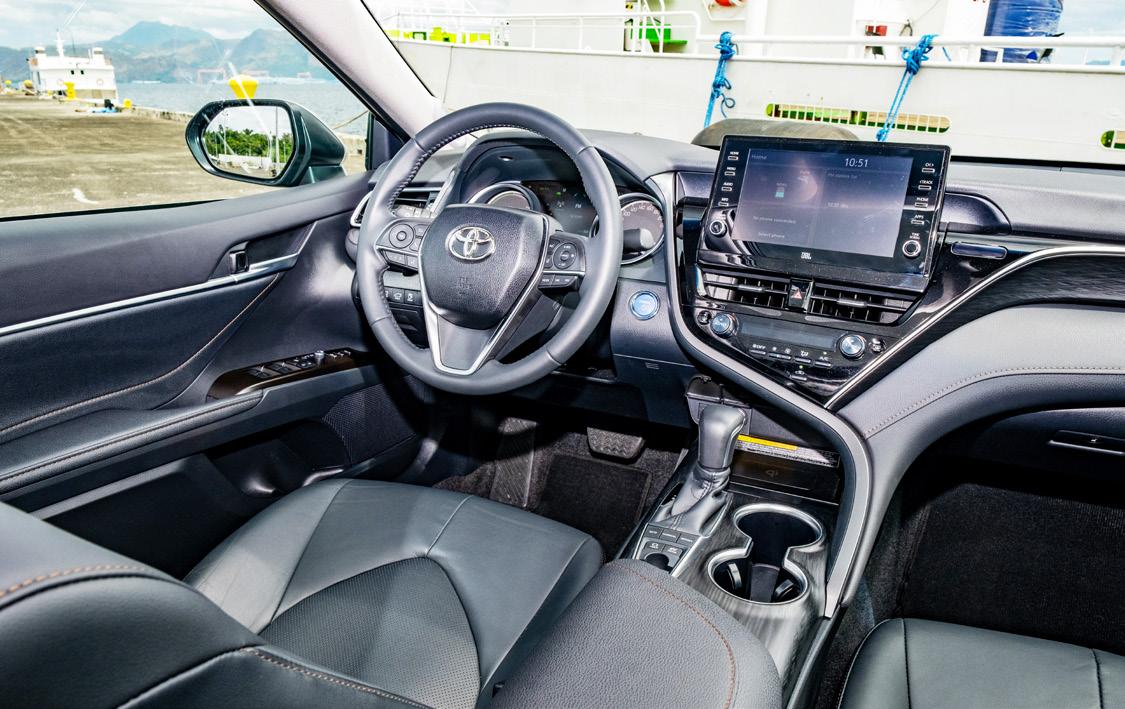

AS UBIQUITOUS AS the brand is, Toyota has always held themselves in very high regard. You can tell by the history of their cars’ names that they have a habit of naming their creations after things that are regal or royal: The Crown, the Corolla, the Corona, the Cressida, all of which are iconic in their own right and are categorized as what can only be described as “worldbeaters.” But perhaps none is more fitting to the convention as their beloved Camry.
To those that are uneducated, there’s actually a deep meaning to the name of their premiere
executive sedan. The name Camry is actually an Anglicized word derived from the Japanese word Kanmuri, which is a Shinto headpiece that’s ornately decorated, and is specially designed for use by the Japanese Imperial Family and government officials on special occasions. As such, naming the car after this exclusive royal headpiece suits it to a tee.
‘Til late, old heads tend to sneer at the recent as well as the current iteration of the Camry, dismissing it as a downgrade from the also-Toyota-owned Lexus line. But what they fail to realize is that the Camry has actually grown to get past the shadow of its more illustrious (and expensive) cousins. There is indeed a market for a top-of-the-line Toyota car for the discerning type, and now with the company selling the Camry as a hybrid electric vehicle, it’s making an even more compelling argument for it.
From the outside, the car looks very unassuming. Save for the HEV badges and the Toyota logo with a special blue glow, you’d
mistake it to be any old fully-gasoline powered Camry–which is actually a good thing. The subtlety of the Camry HEV’s design is what makes it truly classy. It’s the kind of vehicle that can speak for itself and not have to yell out about how important it is. The Camry’s imposing size and breadth–4,885mm in length to be exact–can only be accentuated by the flowing unobstructed lines that go around the body. No garish chrome moldings necessary.
On the inside, it’s the same story. The hallmark of the vehicle is its enormous leg room and fully decked out leather interior. The overall tone of the cabin is a lot darker than is desired, but the texture, fit, and finish of the materials that they’ve chosen makes it feel like the extension of an executive office or a lounge. Both seats in front come equipped with 8-way power adjustable seating and a 3-zone automatic climate control air conditioner. At the center of the dash is a JBL infotainment system complete with 9-speakers tucked inconspicuously around the interior.
And indeed, buyers of the Camry will be happy to know that the attention to detail in front is just as meticulous in the rear seats, as it should since the vehicle has a reputation for being a chauffeur-driven vehicle. Backseat passengers are afforded the same generous legroom, material accents, and plush leather seating as those sitting shotgun.

However, that isn’t to say that the vehicle is not worth driving for yourself–in fact, very far from it. The Camry, along with all of its brethren in Toyota’s HEV line, has some of the smoothest acceleration from a standstill thanks to its electric system taking the majority of the initial load. The car is whisper-quiet when it starts rolling and it’s not until you’ve gotten going for quite some time or if you’ve pressed the accelerator pedal spiritedly that
its 2.5-liter inline-4 engine comes roaring to life. And it gives you the right kind of kick you’re looking for, too. The Camry V HEV’s combined output is 208 bhp at 163 lb-ft. of torque, more than enough power to zoom past slower traffic on the highway.

It’s worth pointing out that despite the Camry V HEV having the same specification of engine as the regular version, the HEV’s engine works slightly differently. Toyota proudly touts that their HEV line’s gas engine has a different kind of combustion cycle than what’s commonly seen on a conventional car, one that it has perfected over the last two decades. Called the “Atkinson Cycle,” its motions differ from your normal Otto-cycle engine in that it uses variable length piston strokes and delays the intake valve closing for
as long as possible to maximize the amount of work done per cycle. However for a long time–since the 1880’s to be exact–this was seen as unfeasible since complex mechanical linkages were needed to do it and the efficiency itself sacrifices a lot of power in the process. Well, fast forward to the 1990’s and Toyota engineers figured out how to address the shortfall of power of the Atkinson cycle using their very own variable-valve timing technology and an electric motor with the Prius, and the rest of the auto manufacturers followed suit.
The result of this decades-long refinement is an enjoyable drive whether it be a drive around the city or a long trip to a far-flung place. The smoothness of the journey only gets better with the help of the Camry V HEV’s Toyota Safety Sense (TSS), which is a package of some incredibly useful driver aids and safety features. The vehicle’s Lane Departure Alert and Lane Tracing Assist is a handy feature that’s helpful but not overly intrusive. The car corrects the position of the steering wheel gently and much more smoothly than in other vehicles. The Dynamic Radar Cruise Control is also incredibly easy to operate, though it isn’t as intuitive as other newer systems currently available. Other features included in the TSS are the Pre-collision system, which measures the distance between your vehicle and whatever obstacle is directly in front of you with the use of a front-mounted camera, and the automatic high-beam which adjusts the intensity of your headlights depending on your environment and dims it the moment it senses on-coming traffic. Most of the vehicle's safety systems can be easily accessed through the center display on the instrument cluster as well as the convenient heads-up display that's reflected on the windshield.
Plus Excellent acceleration, very smooth driving experience, and the transition from Electric to Internal-Combustion Engine is nearly seamless.

Minus Price, the lack of color options externally and internally, and the 360-degree camera isn’t as clear as current vehicles in the market.
At this point, we already know that the Camry, even in its basic form, pretty much deserves the name that’s been given to it. It’s distinguished, practical, powerful, and chic all rolled into one. With the addition of this Hybrid Electric variant, Toyota has managed to cement the Camry’s place as the standardbearer for its class. Those who are in the market for an efficient, fully-stacked, midsized executive vehicle would be hard-pressed to find another vehicle that can go toe-to-toe with it.
Specifications — 2022 Camry 2.5V HEV Engine: Inline-4, 2487 cc, dohc 16V, Direct and Port Fuel Injection, Atkinson-Cycle, E-CVT / Permanent-magnet synchronous AC motor, 1.6-kWh Nickel Metal Hydride (6.5Ah 244.8V NiMH) battery pack • Max power: 208 bhp @ 5700 rpm • Max torque: 163 lb-ft @ 1500-4000 rpm • 0-100 km/h (0-62mph): 8.1 sec. • Top Speed: 192 km/h (120 mph)
Fuel Mileage: 5.1 L/100km Overall • Price as tested: PhP 2,417,000.00



Travel weary and a bit anxious, I finally set foot in the posh Ritz-Carlton Rancho Mirage hotel after barely making that flight from San Francisco and Manila. To not dwell on that experience, let’s just say I powered through two cancelled flights from Manila (due to a severe storm), then practically sprinted from immigration straight to boarding in San Francisco, checked-in with just enough time for a shower and a coffee, to make it to the start of a spectacular 3-day BMW 7 Series launch and drive which I was not by any means going to miss. Big whew.
I certainly was looking forward to learning about the torrent of innovations and the actual experience from the rollout of three important nameplates under the BMW 7 nomenclature, actually with a bonus of seeing the sublime BMW XM as well, but I had a mission to dive-in and immerse in what I anticipated as a pivotal EV release. I was there mainly for the BMW i7 xDrive60.
As BMW’s first ever fully electric luxury sedan, on their flagship series at that, I shared my heightened expectations with many. The 7 made an indelible mark on its debut in 1977 as the sportiest sedan in the luxury class, already bearing then, advanced digital engine electronics. Just on its second generation in 1986, it bore Germany’s first 12-cylinder engine and the first-ever Xenon lights. There were more significant engineering and technological developments in performance and features as the series progressed through the years, but as this 7th generation 7 crossed over to full electrification with the i7 xDrive60, it goes beyond defining the standards of premium luxury within the electrified lifestyle with a comprehensive approach.
The BMW i7 elicits fascination at first glance and piques interest as to what awaits inside its exclusive cabin. Its look is carried over the entire 7-Series sedan range, and is decidedly statelier than its predecessor due in no small part to its dimensions that make it longer by 130mm, wider by 48mm, taller by 51mm, with a wider track by 47mm up front and 4mm at the rear. It certainly has a commanding presence. With a
...as the series progressed through the years, but as this 7th generation 7 crossed over to full electrification with the i7 xDrive60, it goes beyond defining the standards of premium luxury within the electrified lifestyle with a comprehensive approach.
more upright and somewhat angular but sleek form, its profile would usher one’s view towards the striking fascia. Undeniably, the prominent kidney grille serves as the focal point, especially when its illuminated framing is on. It is harmonious with the rest of the front-end elements, mainly the split headlights. What BMW calls the Crystal Headlights Iconic Glow is actually the illumination effect of the daytime running lights encrusted with specially designed Swarovski crystals that are mesmerizing with a brief lighting sequence when activated. These sit atop the actual headlights under tinted lenses to help emphasize the i7’s impressive gaze. A parting visual of the i7 leaves me wishing the rear end was a bit more adventurous and thematic with the rest of the car’s design, but nevertheless it works comfortably.
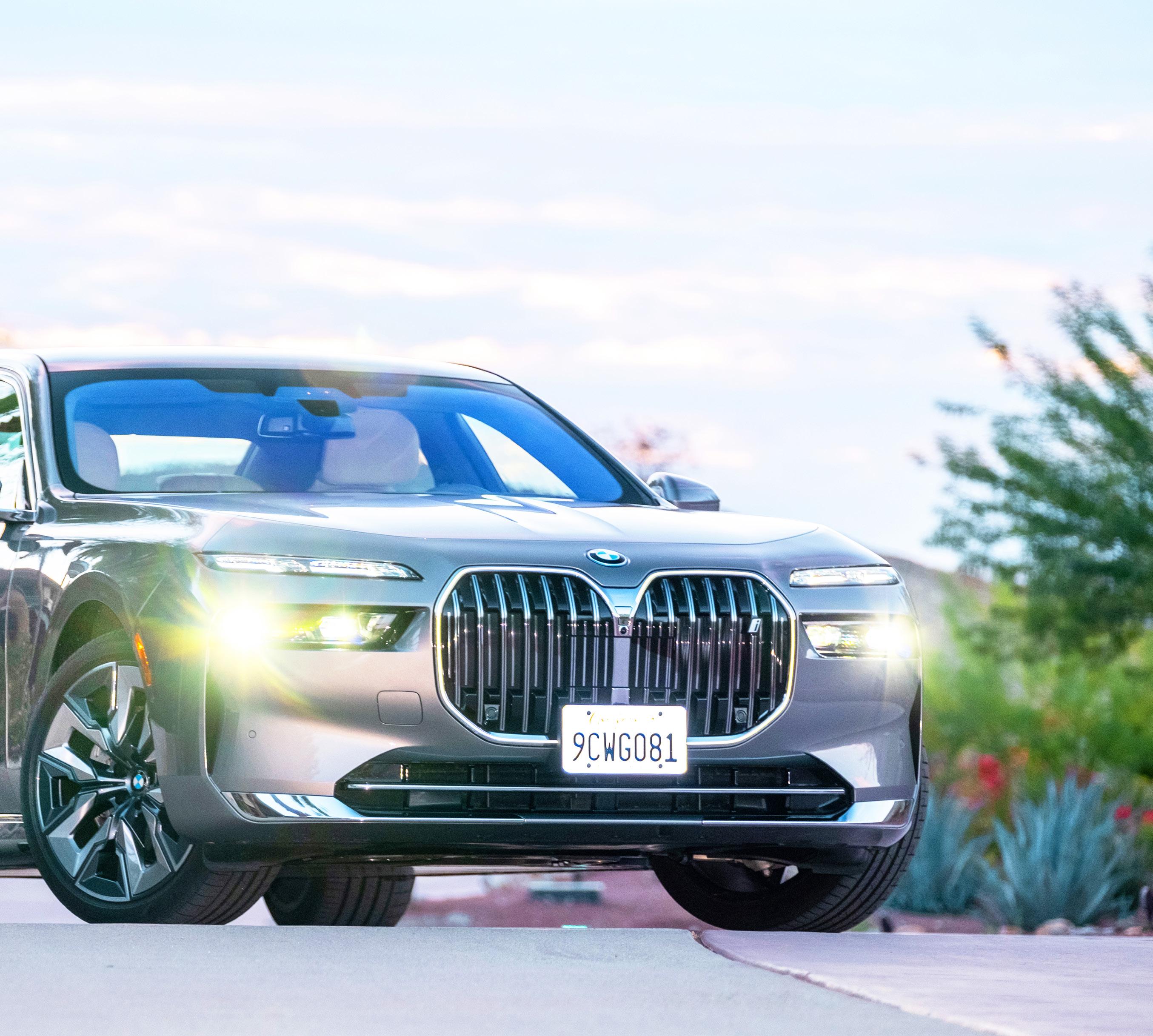
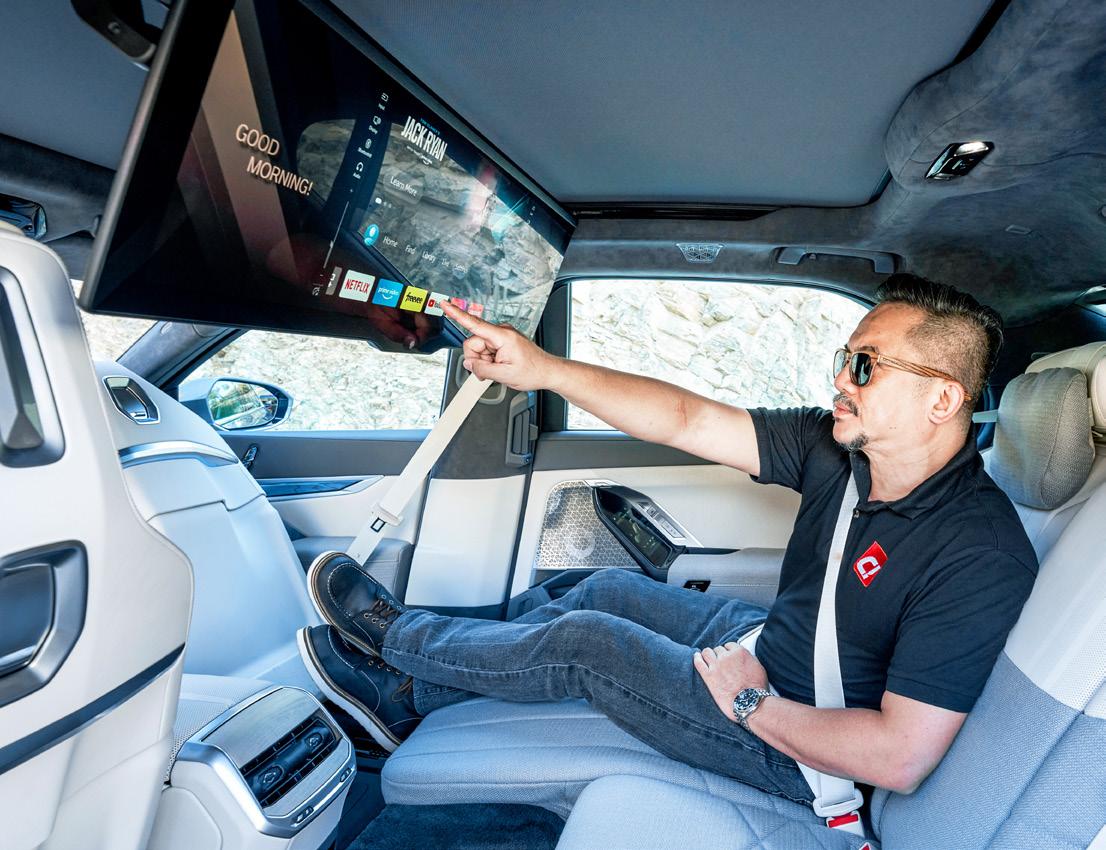

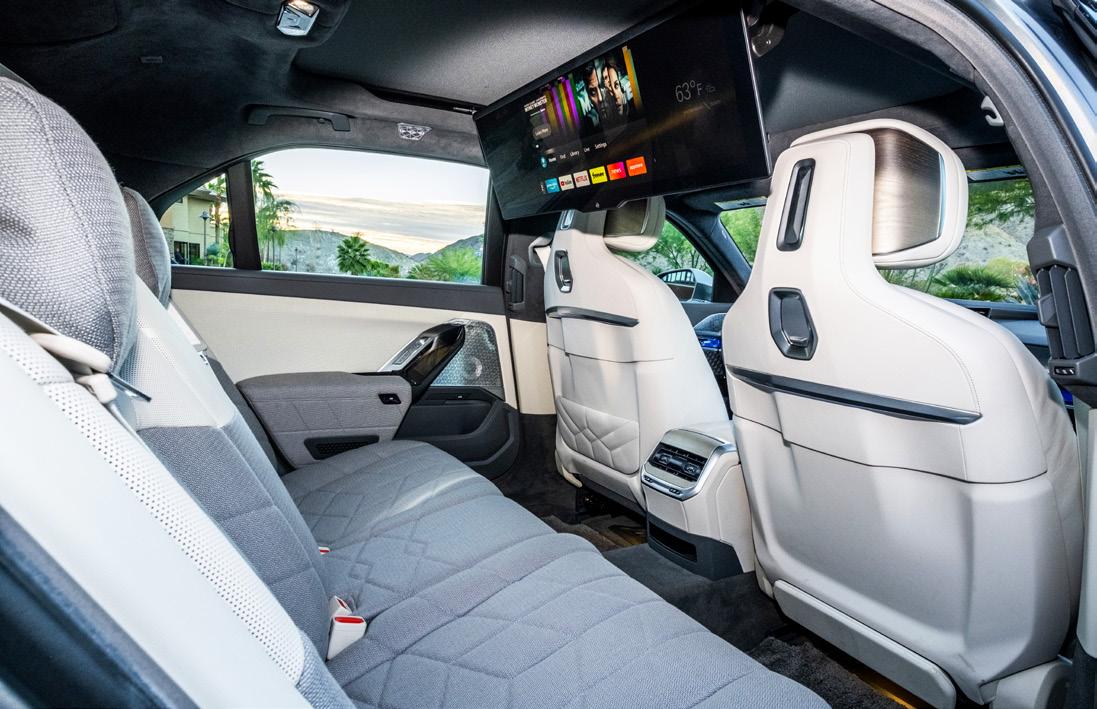

During our deep dive session, it took a while for the term “progressive luxury” to sink in with me. As it turns out, it’s BMW’s holistic approach towards delivering exceptional levels of premium luxury responsibly, and with a passion for exceeding the norm in all aspects including high performance and sustainability, right up to earth-friendliness. Yes it may sound over-reaching, so let’s take this up inside.
Indeed, the expanded dimensions directly correlate to the spaciousness of the impeccably designed and crafted cabin. I sink into one of the most comfortable driver’s seats I’ve ever strapped myself into, and a quick scan of the interior gives off this muted neo-Zen feel that’s swathed in luxury. The two-toned Vegan leather in grey and cream work well with the brushed aluminum accents, but my eyes quickly gravitated towards the expansive curved display which combines a 12.3-inch virtual instrument binnacle with a 14.9inch touch-screen which as one, is the main driver’s interface. You can almost zoom out to your entire city’s view under navigation, tweak climate control, but it’s also the car’s command center for its superb infotainment system that at top spec is equipped with a 36-speaker Bowers & Wilkins surround sound system that peaks at nearly 2000 watts of power (more on this later). With the i7’s MyModes control that include Theater and Art modes, you get to change the interior ambience that affects the mood lighting, the displays’ color and wallpaper themes, to automatically lifting the rear area’s sun shades, sliding the panoramic moonroof shut, and more. There’s so much to unravel, and we haven’t even gotten to the back seats.
With the i7, you are faced with the dilemma of choosing between the pleasure of the drive, and well, a privileged passenger’s guilty pleasures. At full option, you get Executive Lounge Seating that allows you to recline almost to airline business-class levels, legs fully outstretched, but the i7 has the edge, pampering you with a variable mode massage function. All this while watching your favorite flick on its flip-down ultrawide aspect 32-inch 8k resolution Theater Display, that combined with the stunning quality of its B&W surround sound system, will provide for the most immersive and enjoyable in-car (factory installed) entertainment setup to date. And with 5G eSIM connectivity, you can view Netflix, YouTube and other streaming services on the road in absolute comfort, and independently of your digital devices. Tech driven convenience is also a given with iPhone-like touch screen controls integrated into the i7’s armrests so incar commands are just a finger’s swipe and tap away.

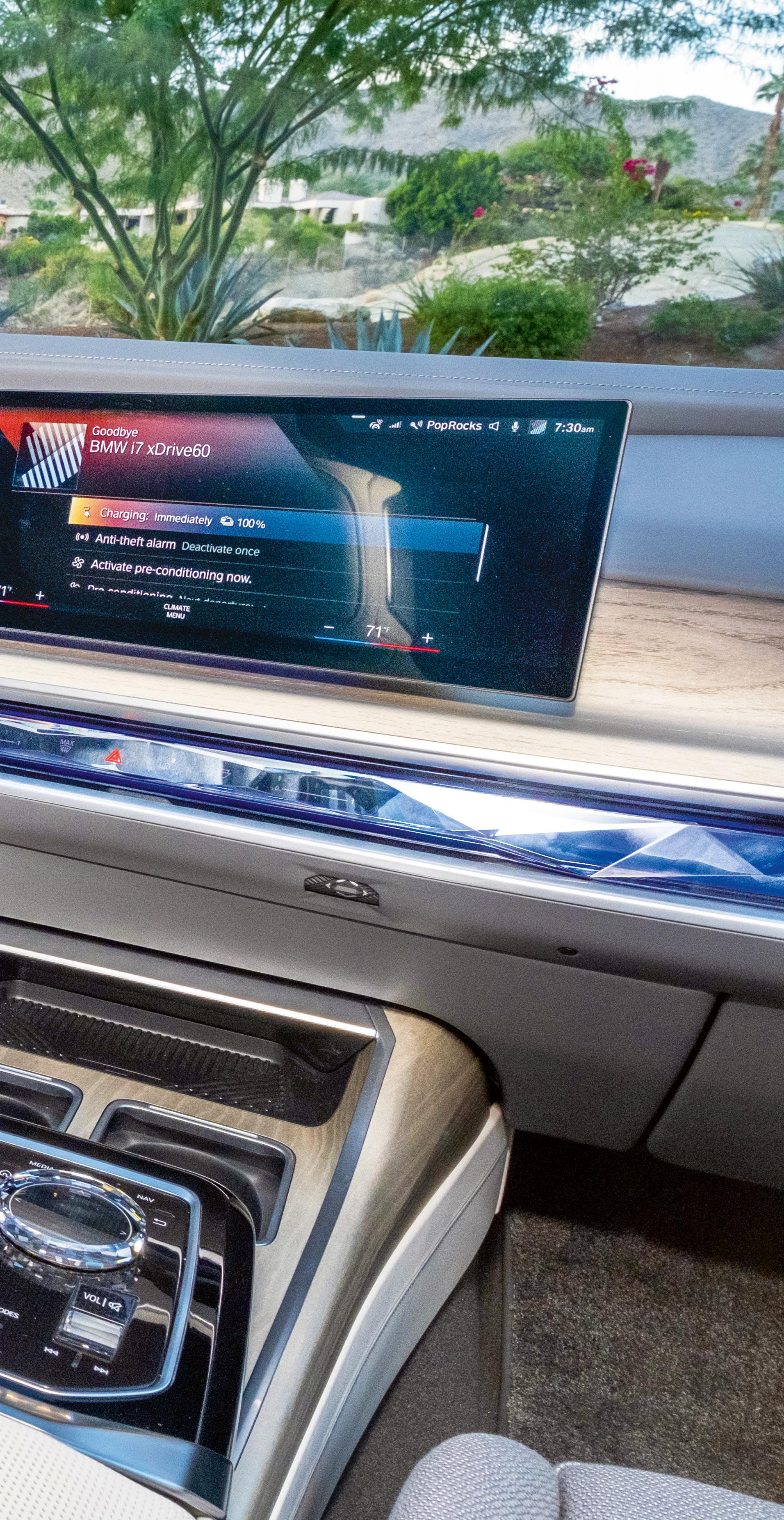

PLUS: Loaded with features that push the envelopes of luxury and smart performance in its class.
MINUS: AC vents on dashboard are more stylish than functional.

Hard-wired into BMW Group’s DNA is the relentless drive to achieve better efficiency in all areas of vehicle development. May it be sustainability, technology, or performance, the goal was never about meeting standards, it was about surpassing them. As the latest release of BMW’s flagship nameplate, the 7-series is the culmination of that drive- and the i7 xDrive60 spearheads it.
Equipped with two synchronous electric motors as part of highly integrated E-drive units at the front and at the rear, the BMW i7 xDrive60 has a maximum output of 400 kW/544 hp, and 745 Nm/410 lb-ft of torque. Larger than your typical full-sized sedan, the i7 effortlessly sprints from 0-60 mph in only 4.7 seconds, and has a top speed of 149mph (240kmh). As impressive as these specs are, it’s how the i7 achieved them that’s remarkable. Locking in the median between superb aerodynamics and aesthetics, the i7 manages to be the sophisticated stunner yet achieve one of the lowest drag coefficients (0.24) in its class, slicing through the air with outstanding power-to-weight ratio along with all of its other outstanding facets, pushing up all the right digits and ultimately melting any concern about range anxiety with a real-world tested 590-625 kilometers range- all this while transcending the WLTP (Worldwide harmonized Light vehicle Test Protocol) standards by gunning for what’s beyond it.


Efficient dynamics, as I’ve learned later on while behind the wheel, is not all about how the vehicle performs, but also in a large part how it sets the stage for its driver to drive efficiently and arrive at his travel objective with the most optimal results in a stimulating manner. Of course, technology is central in this regard, and the i7 is brimming with it from the cutting edge. The BMW i7 is an engaging drive despite it being almost sentient with all the active safety and intelligent driver-assistive features perennially at work in the background: over 30 sensors that utilize ultrasound, long (300m) and short-range radar, the world’s best automotive cameras, and a 5G connection for fast data exchange with the BMW cloud to allow you to drive and change lanes hands-free at freeway speeds to your exit ramp to the destination you plotted.
Admittedly, I was (mindfully) testing my nerves along with the car as I took on a hefty serving of tight twisties on a hill climb in Palm Springs. The i7 was exceedingly nimble and tenacious while maintaining its calm demeanor. It’s amazing how it seemingly shrinks in dimension the more you push it; how reactive the steering is to deliver a light and effortless response to scalpel-sharp in an instant. From a driver’s perspective, the level of technology the i7 is equipped with allows it to be more consenting of a human need to enjoy the drive thoroughly. Efficiency is also about delivering exhilaration by letting you to push your boundaries without compromising safety.
The i7 was exceedingly nimble and tenacious while maintaining its calm demeanor. It’s amazing how it seemingly shrinks in dimension the more you push it; how reactive the steering is to deliver a light and effortless response to scalpelsharp in an instant.


There’s a lot more to highlight especially in the area of sustainability, like avoiding the use of magnets (rare earth materials) in their electric motors, smarter batteries- but perhaps in the unlimited real estate of the digital space.
As I contain my fascination over the immense amount of innovation and the almost obsessive drive to achieve what BMW has set out to with the i7… efficiently, I ponder about how much of this can cascade to the majority of automobiles from the premium luxury level, as what’s been achieved on this 7th generation of the 7, with the i7 at the forefront, is nothing short of tremendous- it’s pivotal. The BMW i7 xDrive60 is virtually an advanced species in the evolution of electrification for automobiles.
As we embark on our third decade of existence, let’s take a quick look back at all that we’ve done in the last 21 years. Two decades, millions of kilometers driven, the same uncompromising spirit. We are C! Magazine.
We know vehicles are more than just numbers and figures, but we also know that you want to know exactly how each car performs in comparison to its model evolution and immediate competition. Which is why we were the first magazine in the country to use instrument testing.




The genesis of C! starts off at the circuit in Subic with an editorial team that had thousands of kilometers of track time. That said, it's only natural that motorsport is in our blood. Over the years, we’ve promoted and participated in hundreds of different racing events from autocross, circuit, to off-road events.
With the globalization of Formula One in the 2000s, C! was able to partner with them to be able to bring Filipino gearheads the latest news. We were able to give our readers their fix of motoring news from the other side of the world — and vice versa — thanks to our partnership with EVO UK.

C! was instrumental in the creation of several motoring laws in the country such as the Philippine Lemon Law, the Tax Reform for Acceleration and Inclusion Law (TRAIN), and the Electric Vehicle Industry Development Act (EVIDA).


There was a time when test drives were only allowed with deposits or confirmed sales. We were the first to encourage and support consumer test drives for car buyers, paving the way for more accurate assessments from motoring journalists and consumers alike.
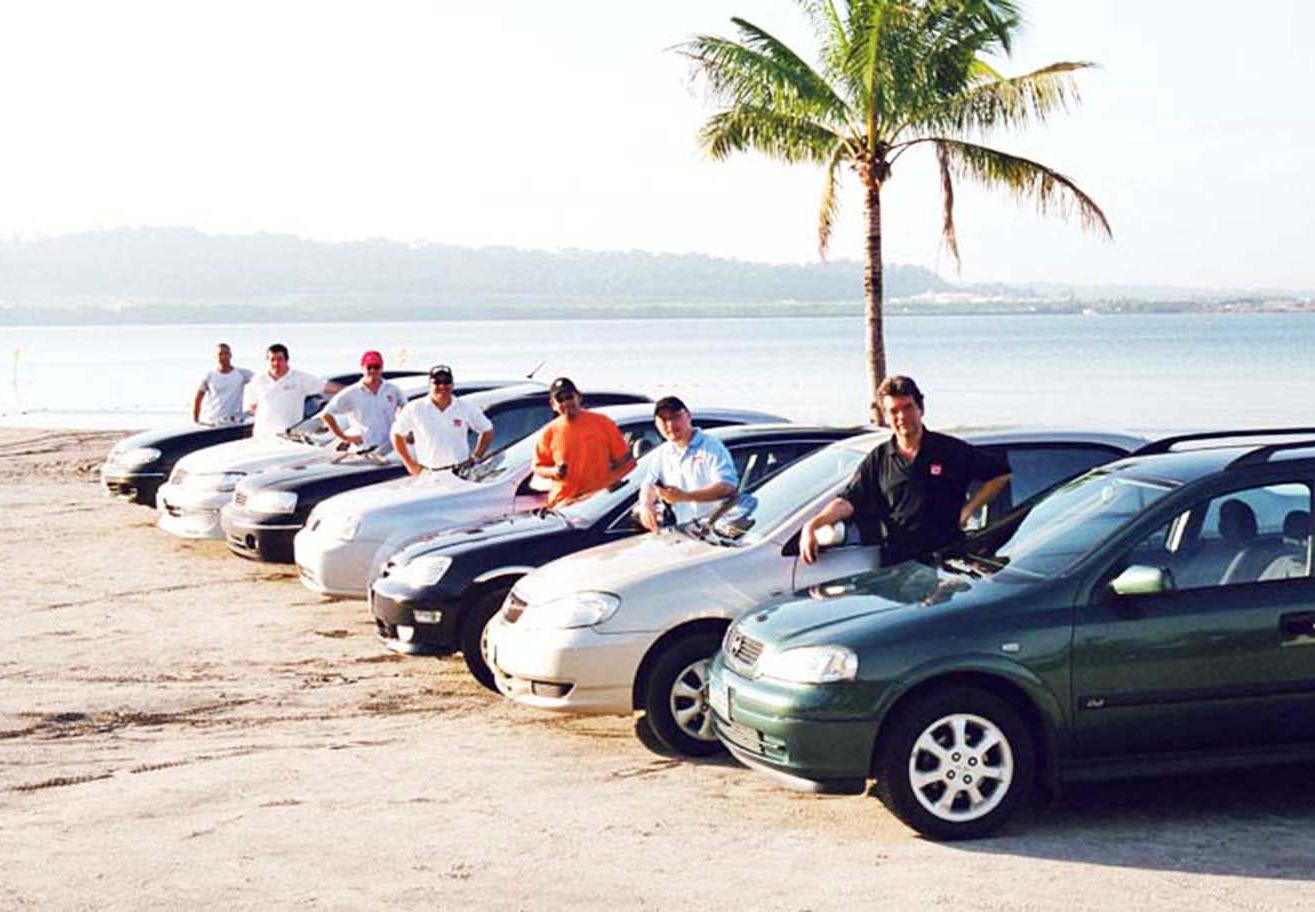
C! has a readership that spans the entire globe. As one of the pioneers of automotive journalism in the county, we’ve also pioneered exporting our domestic content for international distribution.


Since the foundation of the C! Publishing Group, we’ve grown a large but refined portfolio of publications that cater to other interests as well. We were the first to produce a dedicated horological magazine with Calibre and diverse expansive content creation with Manifesto.
C!

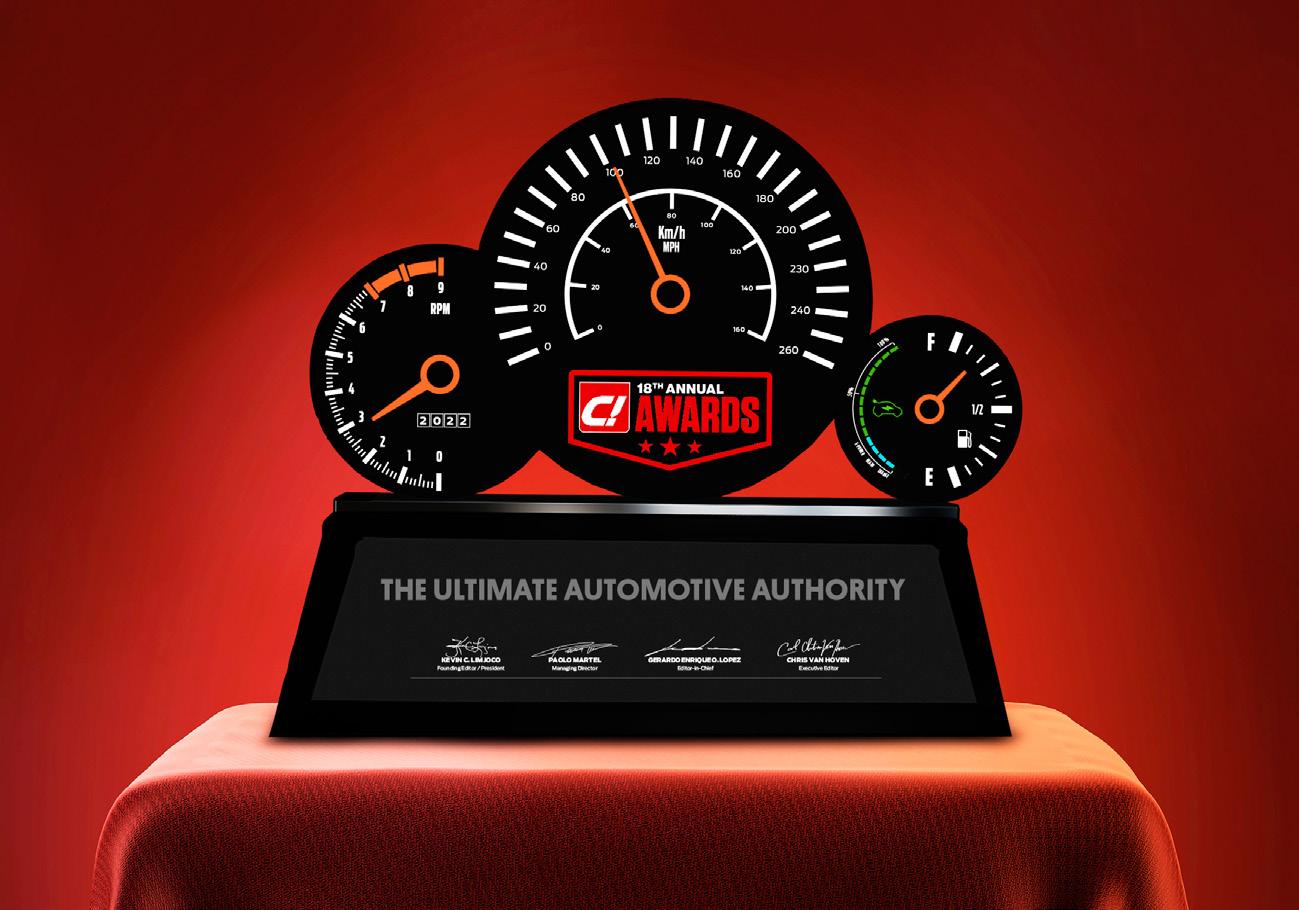

Our uncompromising approach to automotive journalism has made us the most internationally awarded automotive media group in the Philippines.




guide in the Philippines. Every year, we go out and find

We're proud to be one of the first premium automotive digital content creators in the Philippines, starting with the C! official website in 2004. We were one of the first to produce YouTube videos and podcasts. We also produced C! original content that we distributed in free DVD's in our special issues.


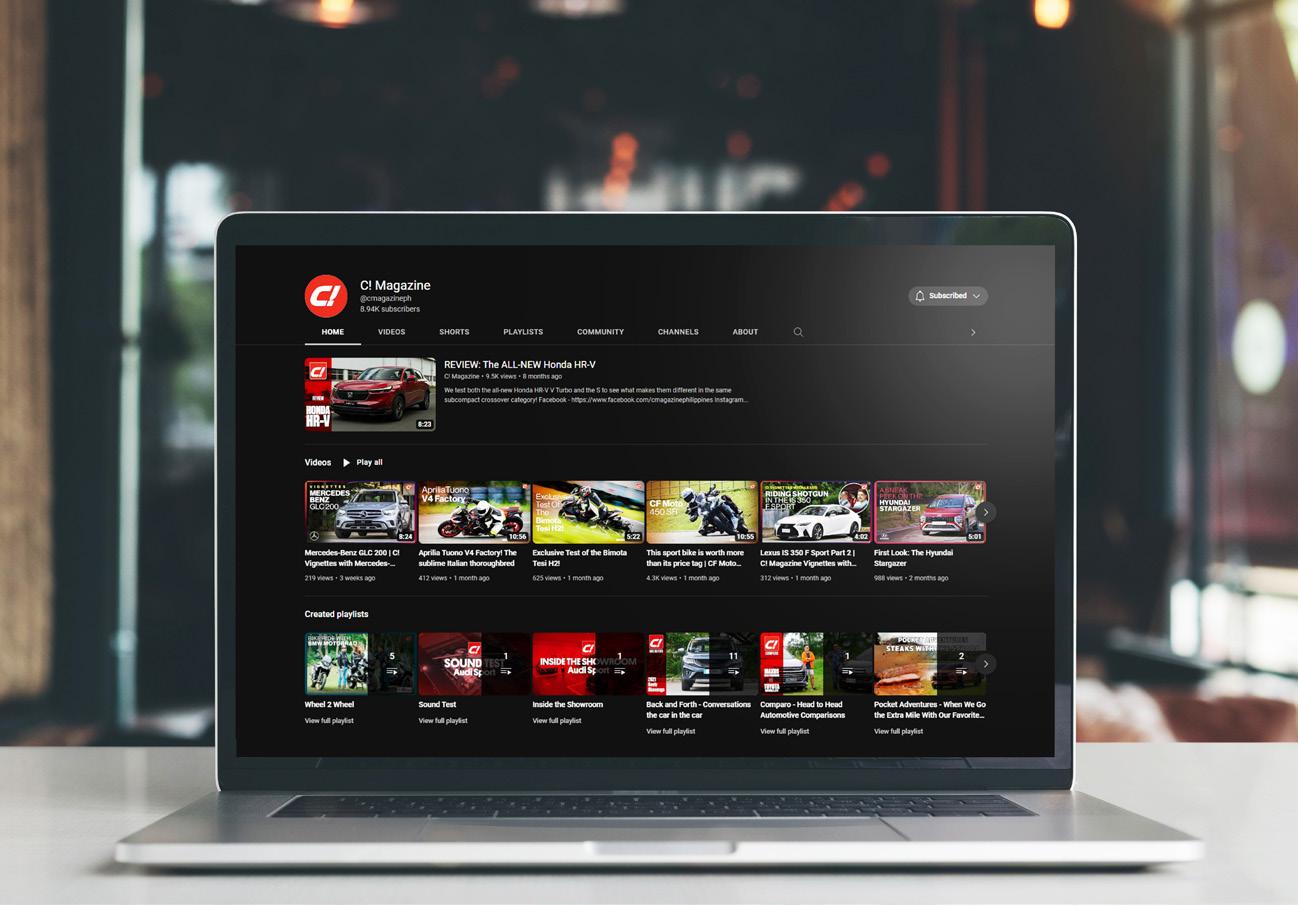
Two decades in and we’re still flying to different parts of the world in search for the ultimate in automobiles! We maintain the most expansive and consistent international content production for cars in the country.

In keeping with our motorsport roots, we were also the very first publication to create our own motorsport experiences with the C! Tarmac and C! Rally programs.


We had the amazing opportunity to drive the storied Gumpert Apollo race car in the picturesque streets of Monte Carlo.A month after we tested the Apollo, it made its racing debut in the 2005 German Divinol Cup and finished third.

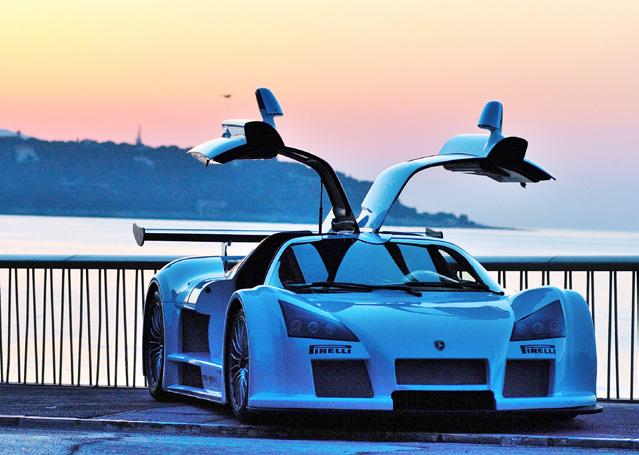


C! and Horacio Pagani have always had a special relationship. When we flew to Italy to test out their Pagani Zonda C12S, we were honored and humbled to see the Philippine flag flying at full mast. We've tested every single hypercar model since then, thanks to Horacio Pagani himself.

In 2006, we had the honor of participating in the AMG Ultimate Experience Asia in the Sepang International Circuit in Malaysia. There, we were able to put the MercedesBenz SLK55 AMG to its paces with the guidance of Formula One great Jean Alesi, and long-time F1 Safety Car driver Bernd Maylander.

The genesis of BMW’s M-line of vehicles, we had the pleasure to review this classic 1979 BMW M1 (E26) which was pretty much kept in captivity for many years. C! was actually the first to drive the vehicle after being mothballed for over a year! The Giugiaro-designed mid-engine sportscar had only 2,700 kilometers on its odometer making it an extremely fresh example.
One of our most memorable tests in the past were of two iconic Italian sports cars: the Lancia Stratos HF and the Dino 246 GTS. Two cars with long histories to their name.


Spanning two decades and six generations, the Honda Civic Type R is a vehicle that has gained the respect of almost every automotive enthusiast in the world. We recently had the honor of driving the 2023 Civic Type-R here in the country before anybody else did.


As February is just around the corner, it's time to once again gear up for Valentine's! While couples, as well as eligible bachelors and bachelorettes, make reservations and arrangements for their significant others, the question has to be asked to our beloved editorial team: What's the ideal love mobile?

If I were to pick an ideal car for a date, it’d have to be established early on that it’s not about me at all, but about making my date feel absolutely special on that day starting with the ride I’d drive her around in. My choice would be the Mercedes-Benz GLC 200. Aesthetically it’s understated, but it communicates premium pedigree but without having to be too loud about it. It has to be posh but not ostentatious. Date night would have to be preceded by spontaneous fun all day, so I should be able to drive it to spots where a sedan might not cut it



— by the beach for a picnic and some snapshots, up a remote view deck for afternoon drinks and more snapshots — well you get the idea.

Sure, other standard SUVs can do that but without the plush ride comfort and the premium trim of the GLC, right down to the scent of the full leather interior. So it’s smelling, looking and feeling good as we’re cruising, and the music playlist curated just for her would sound great as well with the GLC’s superb audio system. It’s about setting the stage for some subtle sensory indulgence.
Then of course it should have the precise handling and assertive power to deliver the kind of fluid but spirited style of driving I’m at home with when we’re done for the night, but not about to miss out on those pleasurable bursts of speed here and there — the joy of the drive itself. The ideal date car would have to be all that, and have her pining for a repeat of the experience, and perhaps something more. In that regard, the Mercedes-Benz GLC would slot right in.



1,285,000.00

If you think about it, the Suzuki Jimny makes for an excellent date ride for any couple. With the 2nd row seats folded down, that leaves you with a go-anywhere

two-seater with plenty of luggage space for an outdoor adventure to remember. The Suzuki Jimny is compact and easy to drive, plus it’s got a true 4x4 system that makes it a legitimate off-roader. Load up some camping gear or some scuba equipment, and you and your lucky partner could be spending a weekend to remember at any location of your choosing, whether up in the mountains or down at the beach. The fact that the Suzuki Jimny comes in eyecatching colors is an added bonus guaranteed to make any date fun and memorable.



I guess you can say I’m old fashioned. When it comes to going out, I like to be the one that picks my date up and drives her to our destination. So for me, the ideal date car has got to have all of the things one needs to set the mood. Afterall, when you’re going to pick someone up,

it’s usually the car that’s the first place you’ll be in.
In that regard, it’s really hard not to love the Geely Azkarra. You’ve got miles of room that’s lined with supple nappa leather, a panoramic sunroof up top, and cabin lighting that you can change 42 different ways. Not to mention, the vehicle is also a mild hybrid fitted with a whisperquiet 1.5-liter turbocharged gas engine and 48V electric motor that you can barely hear over your deep, deep conversations cruising down the avenue. Put on some nice lounge music through its 8-speaker sound system and you’re one smooth operator!







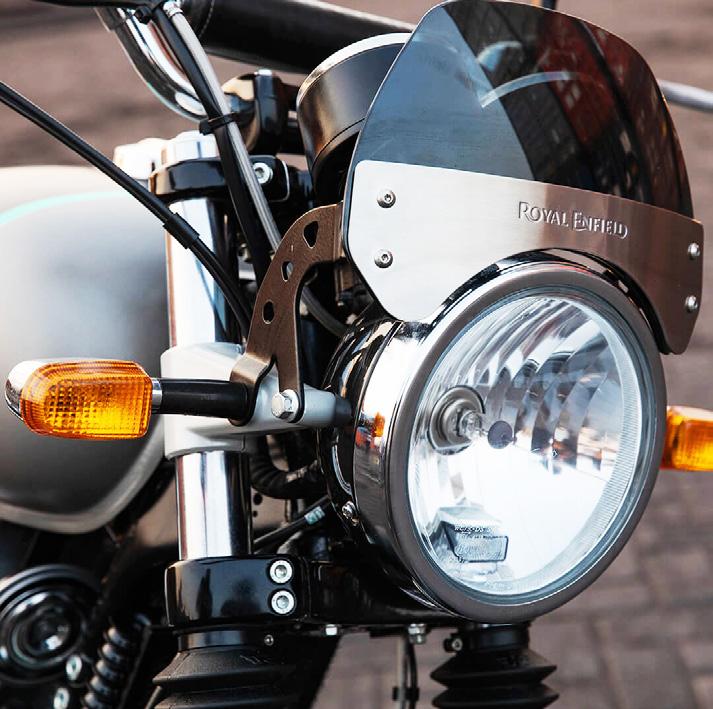

MOTORCYCLE - MODERN CLASSIC

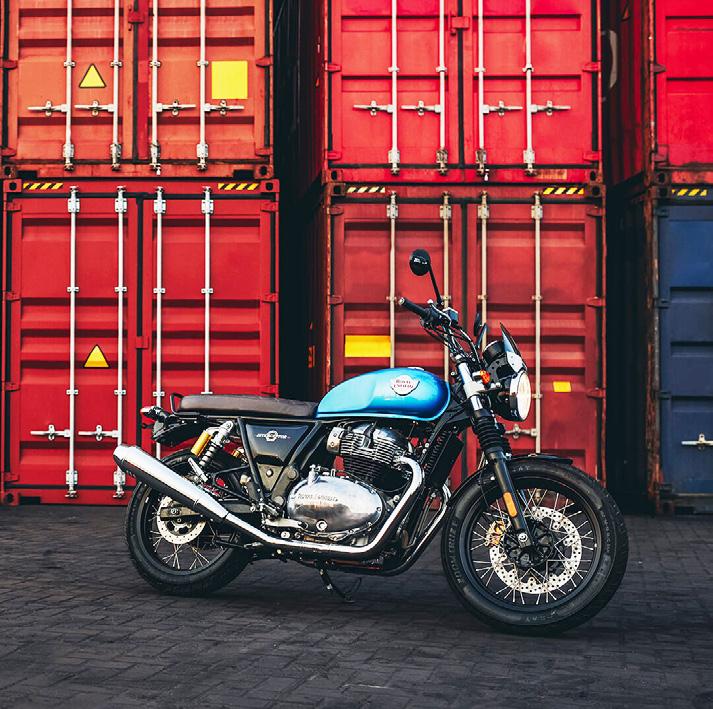
Price — PhP 423,000.00 to PhP 436,000.00
Ah the month of love will soon be upon us and for most of you 2 wheel fanatics, you’re probably thinking of which bike is best to take on your much anticipated journey of love.
Of course, you’d want something easy. Something that wouldn’t scare your date’s wits out so no fast bikes here. You would want a bike with a low seat height for both the pilot and the pillion. Something with a flat seat is ideal.
To make this escapade more memorable for your date, you’d want something with style and character. Definitely no run-ofthe-mill bikes.
My choice for a perfect date night bike is the Royal Enfield Interceptor 650. It’s easy, slow, characterful and has a flat seat with a generous amount of cushioning. It’s something that you can install a rack on for extra luggage if you decide to go for an overnighter or to simply to pack stuff for a picnic. Your date will definitely enjoy having people with their eyes glued on you as you ride by.
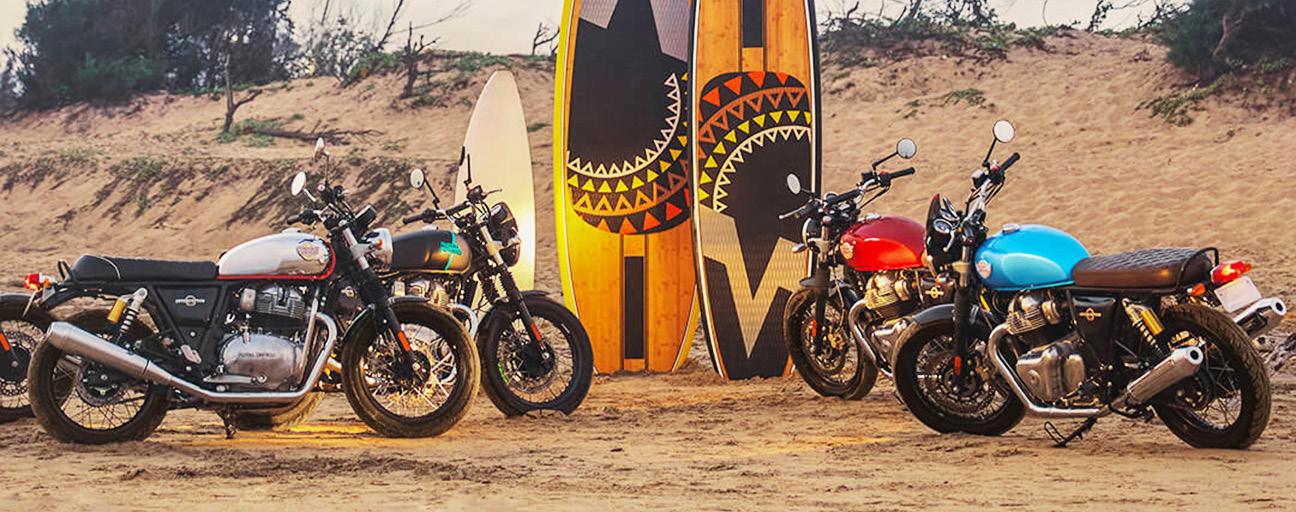


The ideal date ride should be able to express one’s individuality, offer a decent amount of performance and most importantly, must be fun to drive. This is why my pick for the ideal date ride would have to be the Mazda Miata Club Edition


M/T. With a drop-dead gorgeous exterior and a convertible roof, it would look great whether it's rolling to a posh restaurant at night for a dinner date or going up to Tagaytay on an early morning drive for a sumptuous breakfast.

I mean, why only go out for a few hours when the date could extend to an adventure filled road trip on a scenic two-lane blacktop over the entire weekend? Being a Club Edition variant, it gets supportive Recaro seats and 17-inch BBS Wheels. But the best part, aside from the company of your date of course, would have to be Mazda’s responsive 2.0-liter engine that puts out 180-plus hp, the six-speed manual transmission and the sharp driving dynamics of the Miata and you have the makings of an ideal date ride.

The 7-seater SUV category has always been one of the most popular, highly contested segments in the industry, and with good reason. With such a huge aspect of our culture rooted in family, the “family car” becomes an extension of the family itself. Throw in the unpredictable weather, driving, and road conditions that our country is known for, and the 7-seater SUV quickly becomes the default — and best suited — option as a family mover.
7-seater PPVs (pickup-based vehicles) like
the Toyota Fortuner and Mitsubishi Montero Sport consistently rank as some of the bestselling vehicles in the market month after month for this very reason, which encourages manufacturers to drive prices up slowly. Once upon a time, getting a mid-tier 7-seat SUV for around PhP 1.5 to 1.6-million was a realistic target, but that’s since been moved closer to the PhP 2-million mark, with some compromises in features thrown in. And that’s why the competition brought in by Chinese manufacturers is good for the automotive industry. Offering products that are featurepacked while undercutting similar Japanese-
branded vehicles in the same category, some of the Chinese brands that have entered the market have produced exceptional offerings — some that not a lot of people know about.
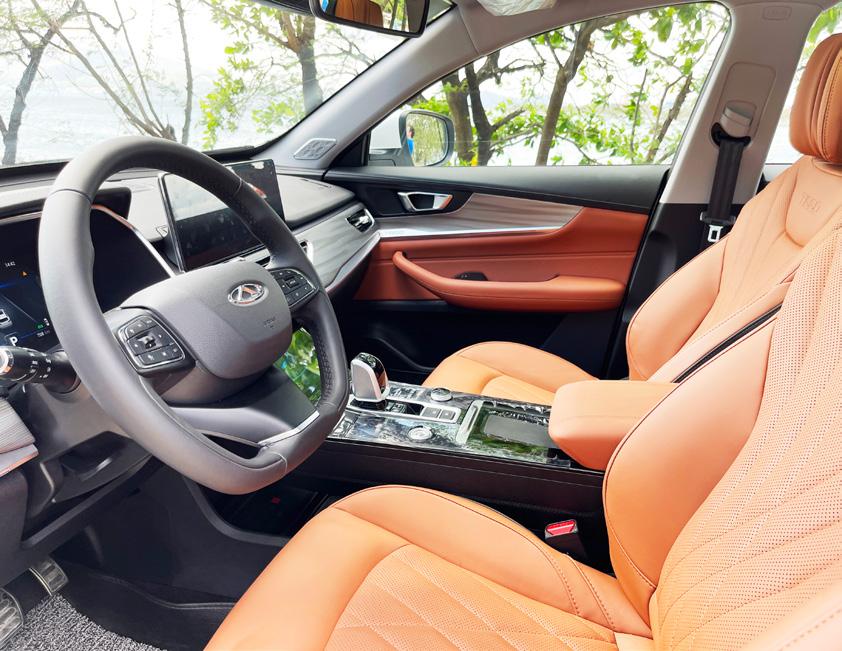
One of those brands is Chery. Founded in 1997 as a large state-owned enterprise with headquarters in Wuhu, China, Chery Automobile Co. Ltd. began their exports in 2001; and by 2003, they were recognized as being China’s largest automobile exporter. By 2011 Chery’s volume of exports accounted for 25% of its annual production. Then in 2012, Chery went into a 50:50 joint venture with the Jaguar Land Rover Group (the

first Sino-British joint venture for high-end automobiles in China). Today, Chery Auto and their official Philippine distributor, the United Asia Automotive Group, Inc. (UAAGI), offers one of the most competitive 7-seater SUVs in the market — the Chery Tiggo 8 Pro, offered in three trims — the 1.6T, 2.0T AWD, and the Tiggo 8 Pro PHEV.



When it comes to value for money, all three trims of the Chery Tiggo 8 Pro are almost untouchable. The 1.6T variant is a great example. Lauded by numerous motoring reviewers, the Chery Tiggo 8 Pro 1.6T offers a features package that seems almost too good to
be true for the price. Starting with its exterior design shared by all three variants, the Tiggo 8 Pro boasts a classic SUV look, with a bold front grille, sleek headlights, and muscular lines running along the sides. It features a panoramic sunroof, LED and daytime running lights, scrolling signal indicators, and 18-inch alloy wheels. On the inside, you’ll see softtouch plastics, luxurious two-tone leather seats, large LCD displays, and a comfortably sized steering wheel that feels great to the touch. Safety is where the Tiggo 8 Pro truly excels, however. It features a comprehensive ADAS (Advanced Driver Assistance Systems)
safety suite that includes lane departure warning, lane keeping assistance, traffic jam assistance, cruise assist and adaptive cruise control, front collision warning, autonomous emergency braking, traffic sign recognition, blind spot detection, intelligent high beam control, a 360-degree camera, and so much more. All these safety systems combine to earn it an impressive five-star safety rating from the China New Car Assessment Program (C-NCAP). It’s even impressive mechanically, with a fuel-efficient 1.6-liter 4-cylinder turbocharged engine producing 194 bhp and 214 lb-ft of torque mated to a 7-speed dual clutch transmission. Braking is handled by ventilated discs up front with solid discs at the rear, while keeping the car comfortable through road irregularities are independent MacPherson struts up front and independent multi-link coil springs at the rear. Finally, Chery offers one of the most generous warranties in the industry with their 7-year/200,000-kilometer bumper-tobumper coverage. In short — these are specs and features you’d find in a luxury SUV that costs five times more than the 1.6T’s sub-PhP 1.7-million asking price.
And this is the entry model variant. The driving rewards go higher as you climb the product ladder. For those looking for a more performance-oriented appeal, the 2.0-liter all-wheel-drive variant produces 251 bhp and 288 lb-ft of torque, with a 0-100 km/h time of 6.5 seconds to go with its all-wheel drive, goanywhere capabilities. While the PHEV variant is a recent winner of our 18th annual C! Awards in the mid-sized SUV category for being the most affordable and most versatile fullfeatured Plug-In Hybrid in the market, with a pure EV range of 95 kilometers, and an even more upscale cabin with dual 12.3-inch screens and an 8-speaker Sony entertainment system.
With its unbeatable feature list at the variant’s respective price points, it’s honestly quite shocking that we’re not seeing more Tiggo 8 Pros on the road. Perhaps it has a lot to do with Chery’s previous awkward entry in the market (under a different distributor), and a general wariness of new brands in particular, but the Chery we have today is a far cry from the time they offered the QQ in our market, both product-wise, and distributor-wise. The current lineup is comprised of well-built, wellfinished offerings, and UAAGI’s after-sales consumer support commitments are as serious as they come. Those who take the risk and give the Tiggo 8 Pro a shot will find themselves truly rewarded.

"When it comes to value for money, all three trims of the Chery Tiggo 8 Pro are almost untouchable."

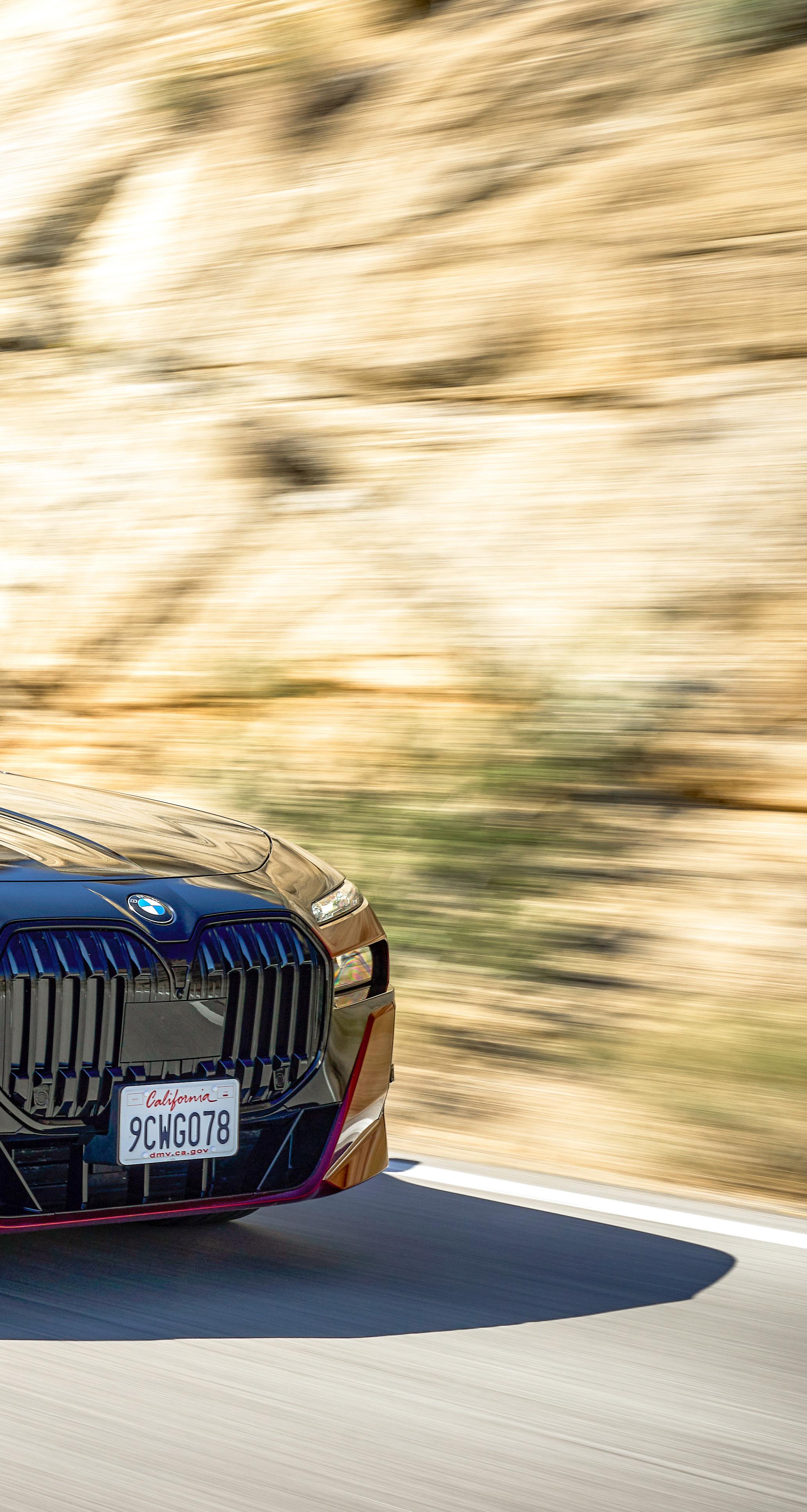 Words: Ardie O. Lopez
Photos: Author and BMW Press
Words: Ardie O. Lopez
Photos: Author and BMW Press
This wasn’t my first overseas coverage after the worst of the pandemic has simmered down, but this particular international launch from BMW was extra special.
As I tried to ingest the massive amount of information the keynote speakers were firing off at a high bandwidth, it sure felt like I'd been put in stasis for a couple of years and then was given an espresso i.v. drip to wake up and see how the world has advanced the whole time. It was a series of deep dive presentations on the all-new BMW i7, the 7, and the X7 offered with three types of drivetrains in three levels of electrification: as a 48v Mild-hybrid with new internal combustion engines (ICE), a Gen 5 PHEV, and Gen 5 BEV (Battery EV). The features and technology presented that the vehicles were equipped with weren’t exactly at sci-fi level, but how BMW re-imagined, recalibrated and reworked to maximize available tech must be the literal definition of what’s on the cutting edge.
The launch event took place at Palm Springs in California, and among the journalists flownin in groups from various regions, I was the sole delegate from the Philippines. Later on, it became apparent as to why it was the chosen location — Palm Springs, for the purpose, is virtually like an open BMW test facility with populated areas, real-world driving situations, and various terrain with certain unrestricted spots that us human subjects equipped with their cars, can have the most conducive conditions for some thorough and vivid testing for more accurate evaluation.

The new 7 picks up from where its predecessor left off and ran with it, beyond expectations. It’s amazing how the seamless merging of what’s intelligent, intuitive, and comfortable is delivered in exceptional luxury, it’s almost like a totally new concept. From the driver’s perspective, 30 sensors utilize ultrasound and long-range radars in conjunction with an array the best automotive cameras to exchange data with the BMW cloud from a dedicated 5G data connection,

to provide for the most advanced driverassistive features. This includes Active Line Guidance and Cruise Control with traffic light recognition, hands-free cruising at up to 85mph with the capability for auto-lane changes at a nudge of the turn indicator stalk; in the area of navigation, there’s lane exit guidance, augmented reality view, and map guidance on the heads-up display on your windshield, perfectly overlaid onto your actual road view. It can even self-drive to your indoor parking spot, avoiding cars, pedestrians and obstacles. Putting the driver assist features to the test at the freeway, the smart automation felt reassuringly decisive right down to the auto lane changes with the adaptive speed control instantly activating in reaction to sudden changes in the traffic condition in the process. The system works smoothly, is usably convenient, and contributes to a more relaxing drive- you know, while at it in the lap of luxury.
With a cabin that’s more spacious all around due to the new 7’s significantly expanded exterior dimensions, driver or passenger will
be treated to plush seating with trim options like Cashmere, with heating, cooling and even variable massage functions, under ambient and mood lighting taken to a whole new level. Aside from the Interaction Bar encased in a sculptured illuminated crystal cover (which also houses feather-touch controls and cleverly designed AC vents) that lines the entire dashboard and door sidings, there’s the Sky Lounge — the 7’s extra-panoramic glass roof that’s uniquely enmeshed with very fine LED light threads, shifting hues and throbbing with the rest of the car’s reactive and fully adjustable ambient lighting. The rear’s Executive Lounge seating gets a more opulent treatment but not via exotic materials or precious adornments, but with top-notch entertainment equipment. How about a 32-inch 8K touch screen Theater Display complemented by a superb Bowers & Wilkins surround sound system — the best in-car audio I’ve listened to so far? I’d rather get cozy in this 7’s abode over the ultra-luxury appointed interiors this side of Rolls Royce and the like.



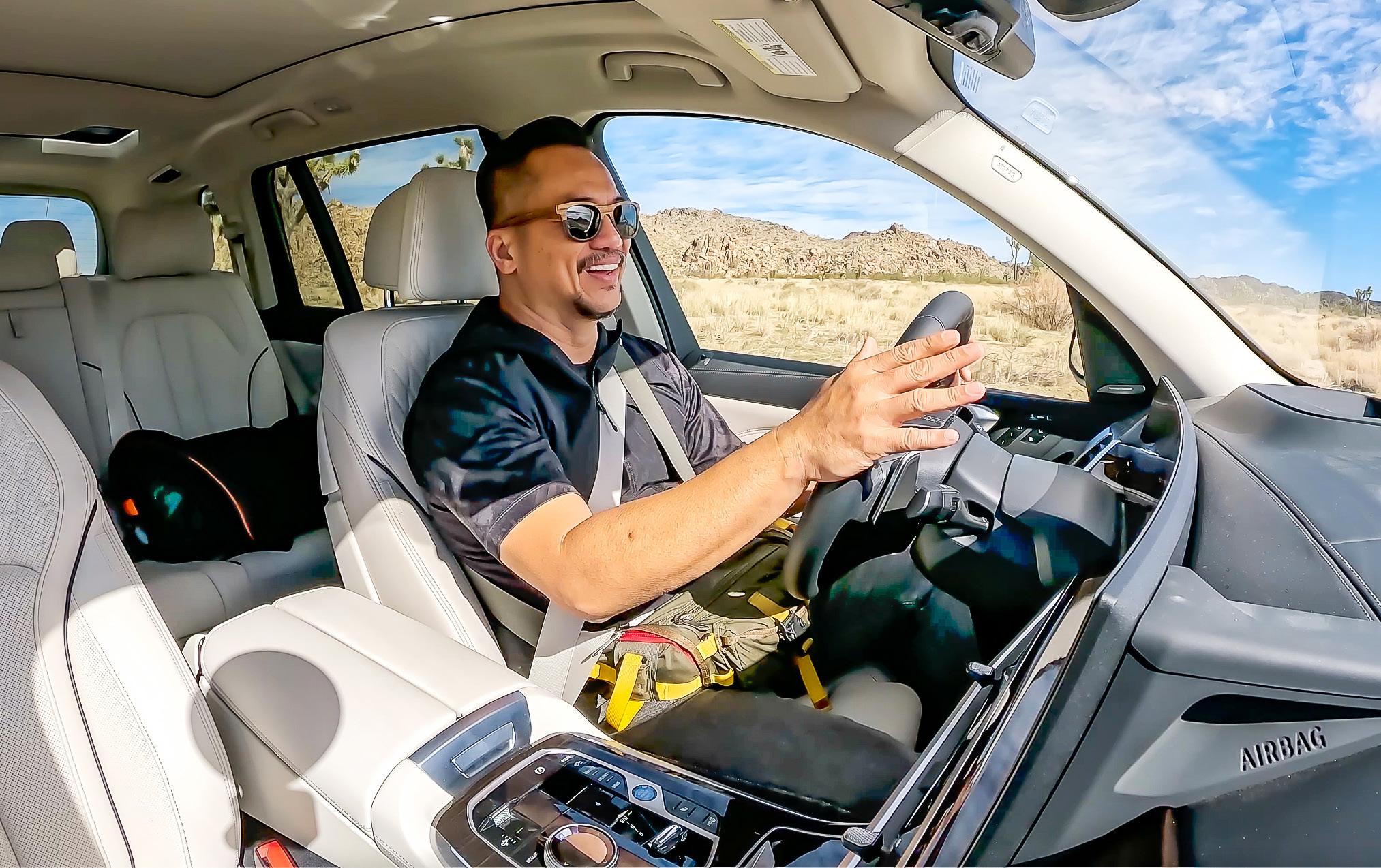
“It leaves me wondering, when will the continuous advancement of these vehicles’ tech and performance ultimately render us and our human limitations to obsolescence?”
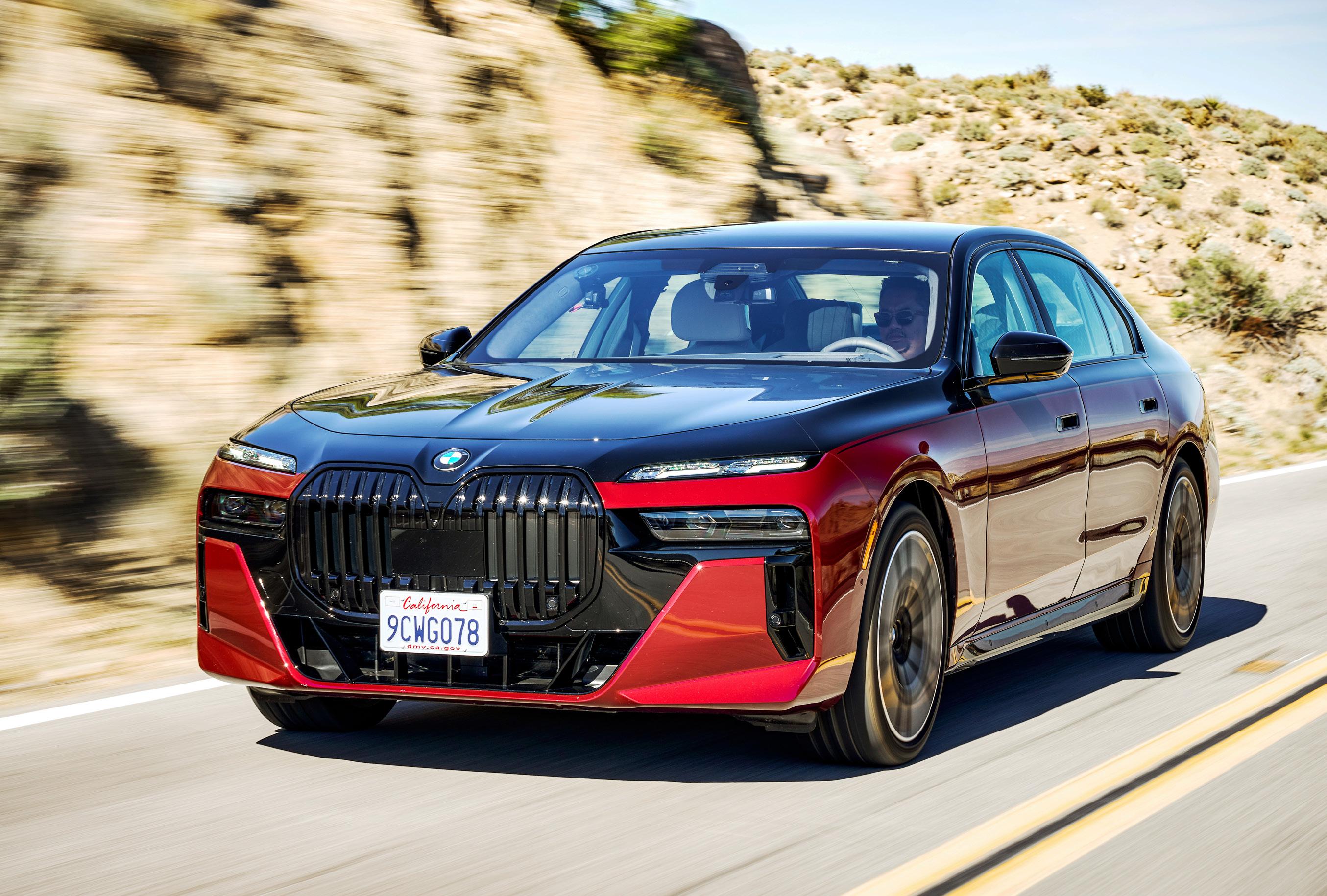

It’s no token test drive given three days of logging in a few hundred miles of seat time in three of BMW’s top tier nameplates namely the i7 xDrive60, the 760i xDrive, and the X7 xDrive40d, but I’d say that’s not nearly enough time with this tremendous trio. I covered the most ground with the fully electric i7 (our C! January-February cover car) and it felt like what it probably would, cruising around in a car that was teleported in from 3 years in the future. It of course felt premium, but it was thoroughly engaging to drive, with a handling feel devoid of detachment despite it teeming with technology. The mild hybrid 760i was like being in control of an alloy alpha stallion — compliant and reserved but obviously ready and capable of unleashing as much immense power as you can handle. With a V8 engine developed with M technology, and paired with a highly efficient 48V Hybrid electric drive system, it has a total output of 544 hp and 750 Nm/553 lb-ft of torque encased in a light and


aerodynamically superior body, I feel merely describing it as sleek and fast is doing it a disservice. It leaves me wondering, when will the continuous advancement of these vehicles’ tech and performance ultimately render us and our human limitations to obsolescence?
Getting behind the wheel of the BMW X7 xDrive40i did not involve any kind of pressure, as with it I opted to get to know it on a lifestyle perspective. Of course, in its full-sized 7-seater SAV (Sports Activity Vehicle, as BMW prefers it to be classified as) configuration, it is plenty and all sorts of capable. Also a 48V mild hybrid, it’s equipped with a 3.0L In-line 6 cylinder gasoline engine with BMW TwinPower Turbo technology, pushing out 380hp and 540 Nm/398 lb-ft of torque, sprinting through the long straights flanked by Palm Springs’ turbine farms, the experience was exhilarating, all the way to feeling its calm and exceedingly quiet demeanor as I slowly (due to the strict speed limit) drove
through the Joshua Tree National Park and just soaked-in the breathtakingly surreal landscapes of megalithic rock formations. Parking the X7 along the road as I hiked towards the nearest rock mountain, fired a few dozen shots with my phone then as much as I could, imprinted to memory what I saw with my own eyes. Sigh, and they call this work?

I am aware that I’ve been gushing freely about what BMW has accomplished with their thrust to achieve and excel through dynamic efficiency on all areas of automotive design, engineering and production that have resulted in the three exceptional nameplates they’ve launched during this event, and by doing so I believe I’ve been fairly objective — It’s inspiring how they’ve hinged so heavily on a characteristic that it became a virtue, and by relentlessly pursuing it, they came up with the blueprint for automobiles that are nothing less than monumental. So who says we only learn about cars on these trips?

“I ponder about how much of this can cascade to the majority of automobiles from the premium luxury level, as what’s been achieved on this 7th generation of the 7, with the i7 at the forefront is nothing short of tremendous — it’s pivotal.”


THERE IS MORE TO LIFE THAN JUST CARS, SO WE'VE GOT YOU COVERED ON THE OTHER THINGS THAT MIGHT INTEREST YOU.



Words and photos:
ARDIE O. LOPEZTTHESE DAYS, anyone with a smartphone and a little bit of self-confidence can be a content creator — what with social media being most everyone’s favorite outlet of expression, and also the default main source of entertainment and quick (though not always reliable) information, us journalists have to level up. With any type of content that’s pushed out and ingested, it’ll always have to be accompanied by vivid visuals. We’re not always sent out there to craft our stories with a photographer and a full video production team in tow — a lot more often than not, we’re team solo. You know, when you alone would have to be the photographer, videographer, the script writer, on-camera presenter, and interviewer rolled into one. Oh, and in the motoring beat, that’s on top of being a participant as either a test driver on foreign roads, or even a race competitor. Don’t forget you’ll also have to write about it when you’re done with all that.
The work is challenging, daunting, definitely not for the shy and timid, but exhilarating and rewarding for the experience you get to absorb,
immerse in, document, and share for all to enjoy. News gathering and content acquisition would be the industry terms you’d want to call it if you want to sound professional (especially if you are one), but literally in this respect, you’d just wanna “take it all in.” So for assignments like that, your oneman team would have to be properly equipped.



When I was still teaching in university, I unintentionally carbon-dated myself several times by starting out my lessons with “back in the day…”. Sigh, but back in the day, you really couldn't be a one-man team even if you had state-of-the-art equipment at your disposal, for the simple reason that you only had two arms and a load-bearing capacity that’s only within human limits. Imagine that era when a news camera was almost the size of a microwave, and you had to lug it on your shoulder all day, and a late 90’s Nokia phone shoots better quality video compared to it. But technology in just a couple of decades has seemingly advanced by light years, and thankfully it has miniaturized costly, bulky, and heavy equipment, and turned them literally into pocketable gadgets. Best of all, video and photo quality have improved by roughly 500% — in terms of pixels that is, and it certainly shows. For reference, video resolution for Television was 720 x 480 pixels. Today most smartphones can shoot 4K video, and that’s equivalent to 3840 x 2160 pixels at even double the frame rate at 60fps. (Pro tip: it’d be useful to understand video specs and
 The world-famous Manila Bay sunset captured in ultra-wide and extreme Telephoto views, using a Huawei phone, 2 successive shots taken just seconds apart
The world-famous Manila Bay sunset captured in ultra-wide and extreme Telephoto views, using a Huawei phone, 2 successive shots taken just seconds apart
“...TECHNOLOGY
Phones, drones, 360 degree and action cams — all incredibly powerful portable imaging gear that have advanced so much, the possibilities of expressing your vision are near limitless.

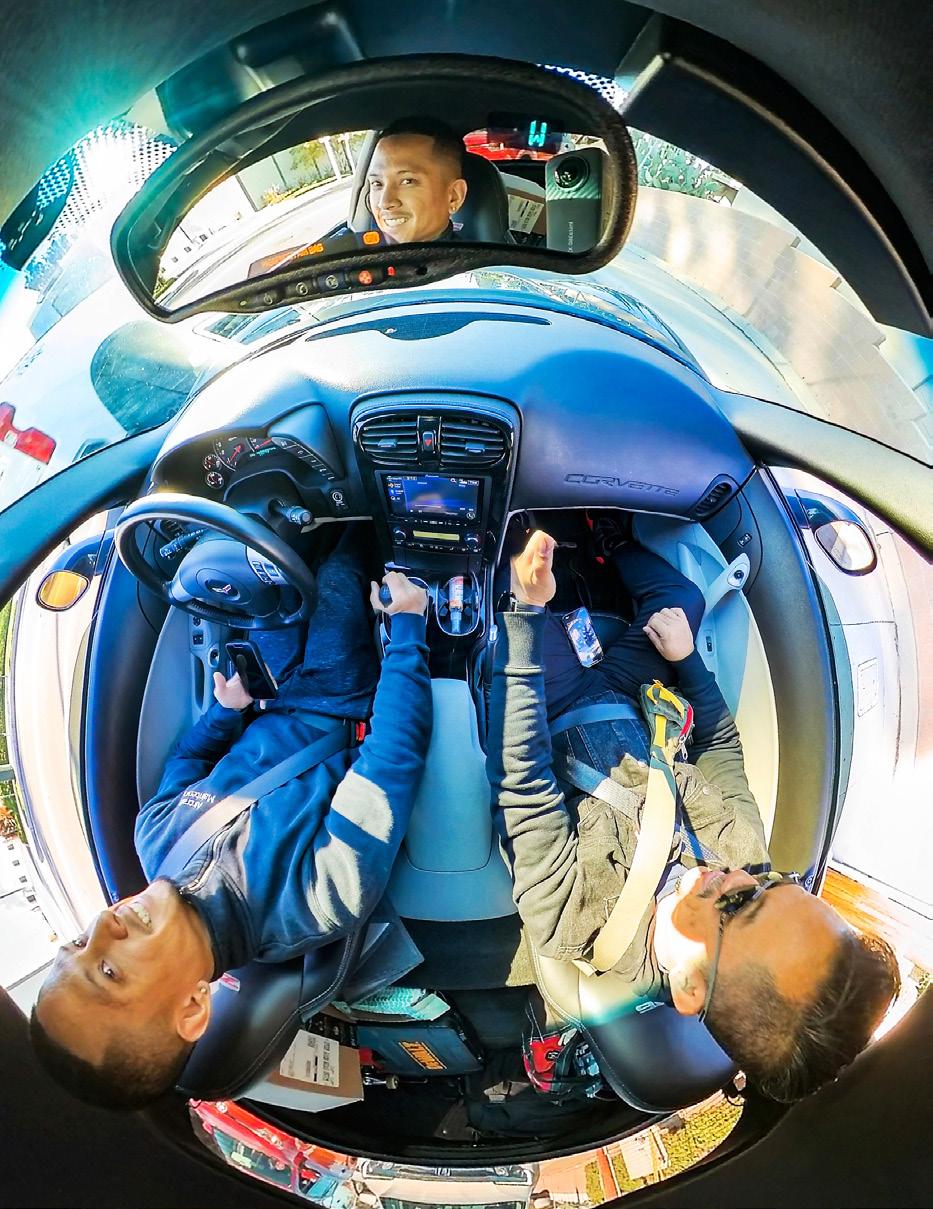
terminology, as it’d really come in handy when buying smartphones and flat screen TVs)
With what we do, action cameras are super useful, especially since they’ve also advanced by so much just in the last 5 years. Back in the… er, I used to literally hang out of a speeding car, sitting dangerously on its window sill with one arm outstretched holding a $3,000 sizable video camera (that shot at a maximum 1920 x 1080 resolution), squinting at its flipped 2-inch screen, framing my subject while praying it doesn’t fall off and break into a hundred pieces in the process. Now we just stick a GoPro via a suction mount on any smooth surface of the car, inside or out.

GoPro (no I am not an endorser) is the inventor of the modern mountable, miniature action camera, and to date their GoPro Hero 11 Black variant churns out the best video quality in terms of sharpness, resolution, dynamic range and flexibility. It can shoot video at up to 5.3K at 60fps (frames per second), and 4k at 120 fps and 2k at 240 fps (awesome for slowmo shots). You can even set it to shoot in vertical video format in full HD, as your Facebook Reels or Tiktok require. It also has the best built-in image stabilization for video. You can mount it on your helmet and blast through a dirt trail on a Motocross bike, and the resulting footage would look like you were sitting on a blanket being pulled across a frozen lake in terms of smoothness.
I use mine mainly for my in-car commentary, particularly because I don’t have to use a wireless mic system attached to it via an adaptor cable.
I bought its Media Mod accessory cage that has a built-in mini-shotgun mic that records my speaking audio quite well, on top of giving it more connectivity via micro-HDMI, USB Type C ports and an audio input. Some people even mount it on a monopod and use it as a stabilized, 5k main video camera… but enough about GoPros, shoot the world in 360°!
Now a 360° camera literally shoots in all directions all the time, via two 180° cameras mounted on it back to back, and the images are seamlessly stitched together via its app. Models of it on the prosumer level only became usable on a professional level roughly a couple of years back. I use mine (an Insta360 One X3) to shoot stills and videos of car interiors, mock drone shots via an extended “invisible” pole, trippy miniature globe shots and a whole lot more. Via its dedicated app on either mobile or desktop, you decide which angle to focus on, zoom-in or out, rotate, pan and tilt, at any point within a 360° space after you shoot. It’s like bringing a virtual videographer with an ultra-wide coverage camera with you that you can demand incredibly dynamic shots from, after you cover an event! And in places where drones aren’t allowed or impossible to fly in, a 360° camera to a certain degree can be a great option. Then of course, there are tiny drones now like the DJI Mini 3 that are specifically designed to be so small and light, you won’t need a CAAP license to fly it (flying larger, non-toy drones do), yet it provides professionalgrade aerial 4k 60fps video footage and sharp still images. Don’t even get me started with the latest Smartphones now that shoot video and stills with jaw-dropping quality. I use an iPhone 13 Pro Max for a lot of my media work (the 14 Pro Max doesn’t really have any significant improvement on its camera, so I won’t upgrade just yet) for several reasons on top of the obvious.


All of this gear I mentioned can comfortably fit in a backpack, including wireless mics, a mini tripod and mounts, spare batteries, etc., with space to spare. All you really need to add to make the most of them are your big ideas, and that hunger to create. It’s definitely a great time to be a content creator with the tools and the opportunities available, and you won’t have to sell a kidney to acquire them. — Aw shoot, just shoot!

“ALL OF THIS GEAR I MENTIONED CAN COMFORTABLY FIT IN A BACKPACK... ALL YOU REALLY NEED TO ADD TO MAKE THE MOST OF THEM ARE YOUR BIG IDEAS, AND THAT HUNGER TO CREATE.”



hile the Americans and, to some extent, the British had their car-making facilities up and running, Japan as a whole was completely decimated by the war, geographically and financially. Early vehicles like the Toyopet SF, the Datsun DS, and the Ohta PA closely resembled makes from Nash, Austin, and Sunbeam-Talbot, respectively. In the entirety of the 1950s and throughout the 60s, virtually every automaker in Japan was busy playing catch-up with the manufacturers in the west.




Fast forward three quarters of a century later, and unsurprisingly, the Japanese have perfected the craft of automobile design and mastered both its art and science. No longer were they making copycat versions of American and European cars like they did in the 60s, and gone were the misguided days of half-hearted attempts at emulating Western luxury like they did in the 80s and 90s. When it comes to cars that espouse quality, durability, precision, and luxury, Japanese vehicles have undoubtedly secured a seat at the table. Nowhere is this more evident than with the strides Mazda has taken over the years with its design philosophy, which it has constantly reinvented throughout the decades.

When the Japanese first started making vehicles following the Second World War, the assignment was to be able to create cars that could compare with products the western countries were already putting out. To say that they were at a disadvantage would be a total understatement.
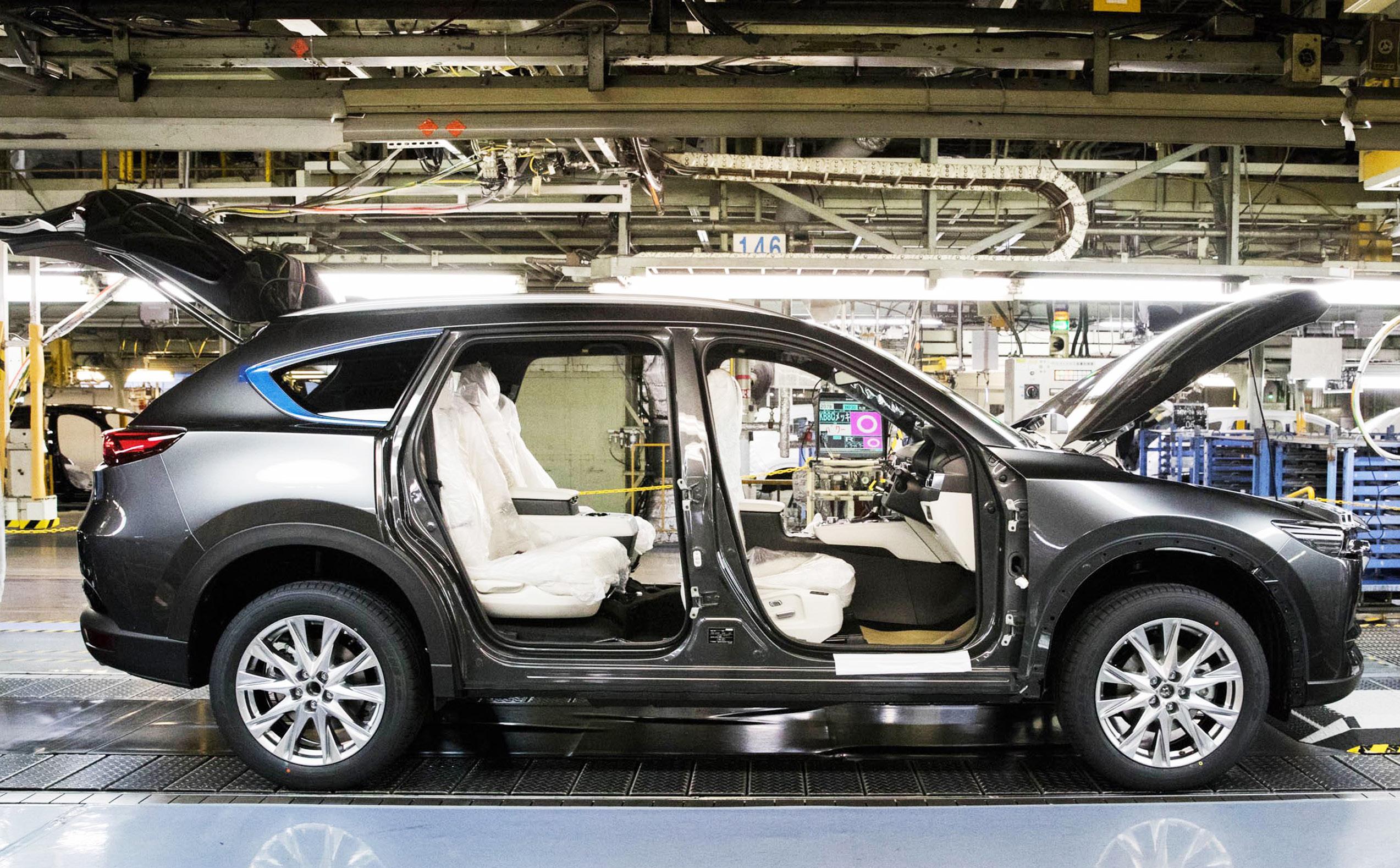
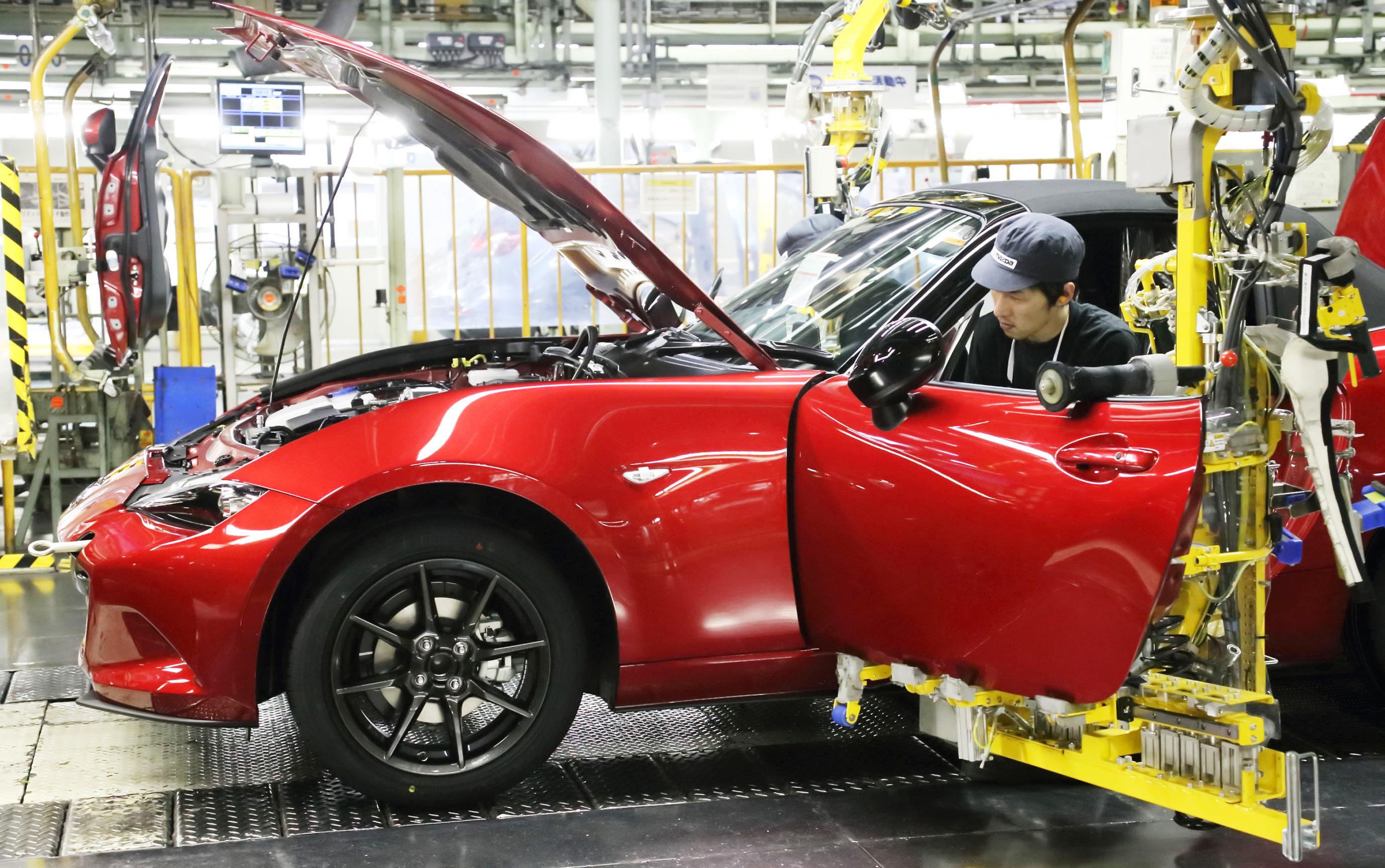

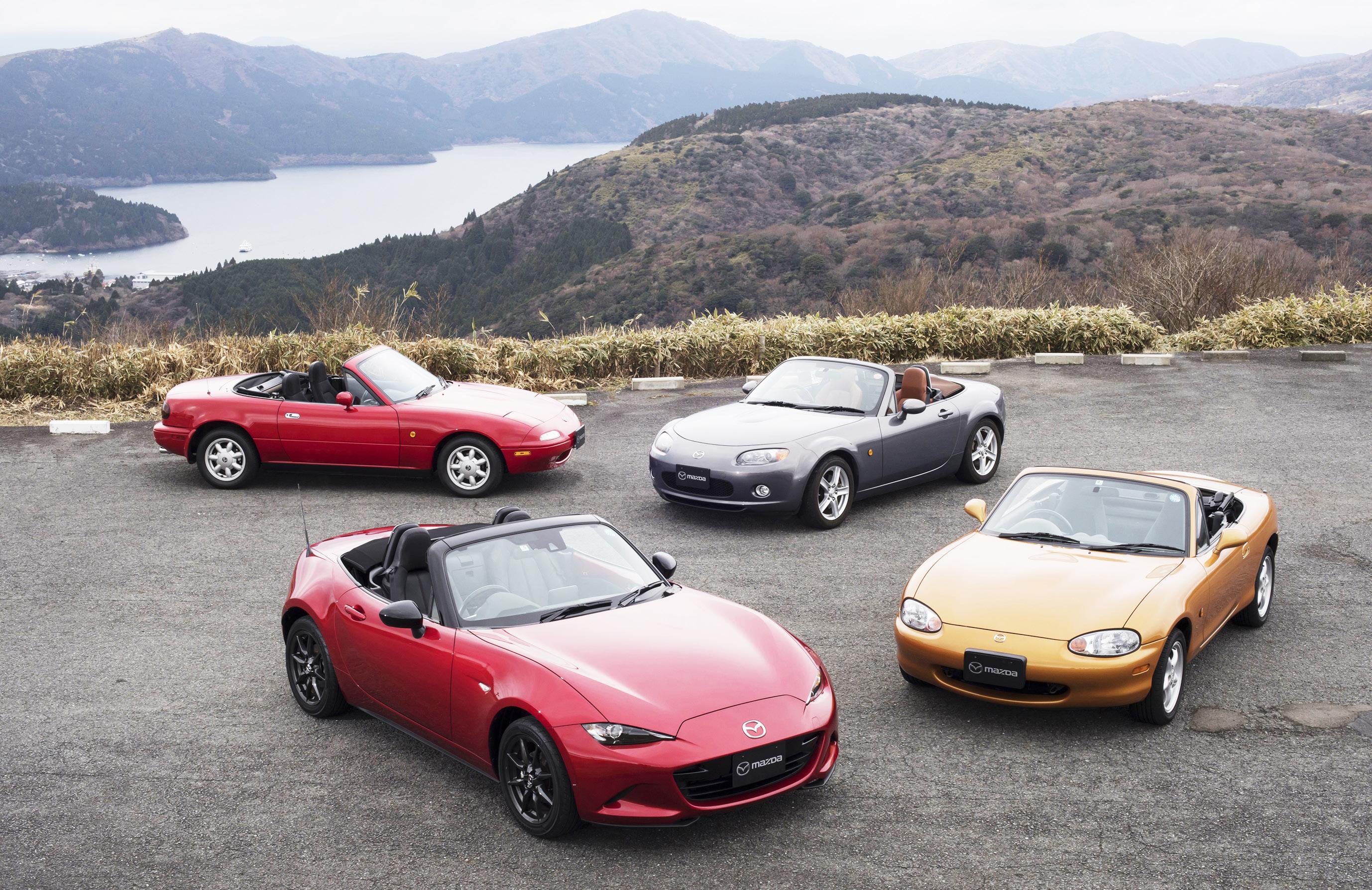 1st-Gen, 2nd-Gen, 3rd-Gen and 4th-Gen. MX-5s
Mazda BT-50
1st-Gen, 2nd-Gen, 3rd-Gen and 4th-Gen. MX-5s
Mazda BT-50
The Hiroshima-based automaker has never been one to shy away from innovation. In fact, the company is perhaps best known for being one of the first to use Wankel rotary engines on its production vehicles. This was done in an effort to make itself unique to its contemporaries who themselves were also securing a foothold in the world stage. To date, Mazda has been the only automaker to ever introduce a rotary-powered bus, wagon, or pickup truck to the market. The engines provided excellent acceleration and came in a compact design which made them wildly popular to consumers in the years leading up to the oil crisis of the 1970s. What’s more, the characteristics of their engines meant that they were perfect for vehicles designed for spiriteddriving. Mazda was very much aware of this, which is why their early models like the Cosmo and the RX-7 were made to be the perfect vessels for cruising along long stretches of open roads. Renowned and iconic as these models would be, Mazda would unveil something in the late 1980s that would undoubtedly shape the direction the company would take for years to come. This of course would be none other than the Mazda Miata.


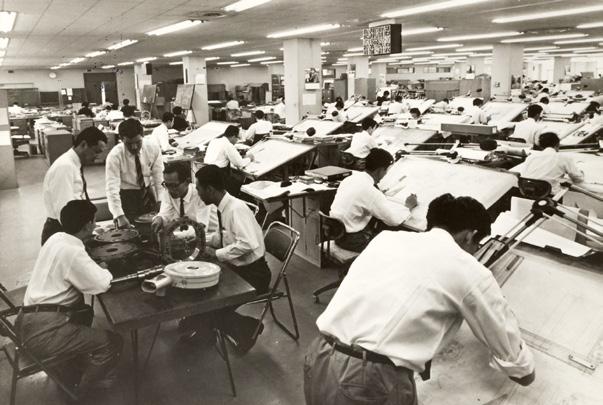
The best-selling two-seat convertible sports car in automotive history, the Miata or the MX-5 in North America, was a project conceptualized by the team at Mazda from as far back as the early 1980s. The vehicle was created in an effort to revive the, by then non-existent, culture of the open-top roadsters like the Triumph Spitfire or the MG B. A smash hit among automotive journalists and consumers alike when it debuted in February 1989, what it truly brought to the table, design-wise, is the philosophy the team used to get their ideas off the ground; a thing the engineers over at Mazda referred to as jinba ittai Roughly translated from Japanese, the phrase means “person and horse as one body.” Originally used in Japanese archery, jinba ittai simply means that the rider and the horse share a special connection to one another and that the rider should feel that the horse is an extension of oneself whenever they get on. Every weight being shifted, every contraction of the muscle, and every change in emotion can and should be felt by both parties when jinba ittai is achieved. With this in mind, the engineers at Mazda designed the NA body MX-5 to be as responsive to driver input as possible. The result was a roadster that was truly a driver's car: it’s lightweight, extremely surefooted, and designed with driving optimization in mind. Thanks to the philosophy, not a single space on the vehicle was wasted.

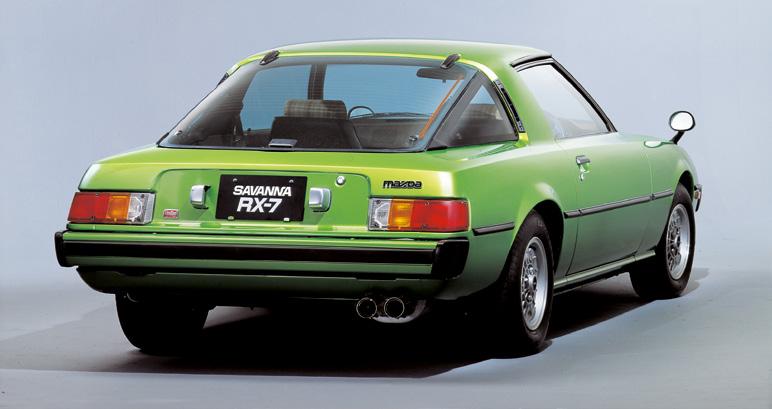
Perhaps Mazda designed the MX-5 a little too well. Its extreme popularity when it was introduced really did spur a revival of the small sports car. However, while there would be stiff competition from the likes of the Toyota MR-S and the Honda S2000 through the years, the MX-5 would continue to outsell everyone in its class by a wide margin. Today’s iteration of the roadster, though far removed from its original form, still retains most of the design philosophies from 30 years ago, not before adding several twists along the way.
 Rotary engine development
Cosmo Sport, 1967
RX-7 (1st gen. model, 1978)
Mazda MX-5 RF
Mazda Museum, Hiroshima
Wankel Rotary Engine
Rotary engine development
Cosmo Sport, 1967
RX-7 (1st gen. model, 1978)
Mazda MX-5 RF
Mazda Museum, Hiroshima
Wankel Rotary Engine
The Hiroshimabased automaker has never been one to shy away from innovation.
The years that followed their success in the early 1990s though didn’t exactly translate well for the company as a whole. Since the 1970s, Mazda had been owned partially by Ford, owing to its financial woes the decade prior. And beginning in the 1980s, Mazda started sharing vehicles from the Dearborn-based company for use on their own line not just abroad but domestically as well. Cars like the Ford Laser and the Ford Telstar could also be seen with the Mazda badge as the Mazda 323 and the Mazda Protege. The Mazda B-Series pickups at the time were also rebadged versions of the Ford Ranger, a complete 180 from their original 1970s agreement when Mazda built vehicles for them. Things came to a head in 1996 when Ford had as much as a 33% controlling interest in the company. It was at this point in Mazda’s history that it would kill off its stalwart RX-7 and Cosmo nameplates. Another decade would pass before the company would be profitable and Ford finally divested itself from Mazda, giving the company complete autonomy to pursue growth, and by then a new look for the company was well underway.

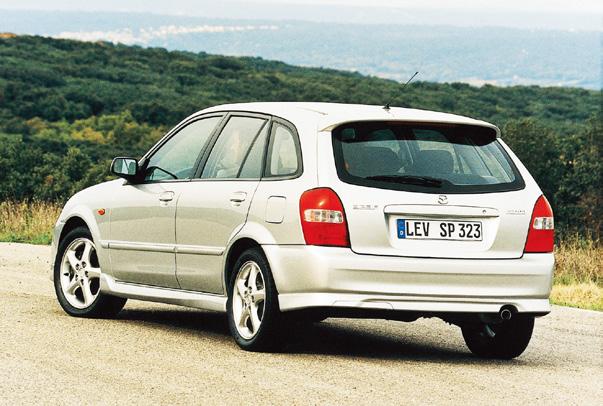
In 2006, in need of a refresh, Mazda unveiled the Nagare, a concept car named after the




new design philosophy that espoused a more streamlined approach. Spearheaded by Mazda’s then-head of design Franz von Holzhausen, who would eventually go on to design the Tesla line of vehicles, the concept car was made using a set of rules that once again took cues from our bond with nature. Inspired by the flow of wind and water, the Nagare concept followed the idea of “emotion in motion” which placed a lot of focus on the sheer enjoyment of driving. It would be seen in several other concept vehicles in the succeeding years such as the Furai, the Taiki, and the Ryuga, and the design language could be seen on production vehicles such as the second-generation Mazda3 and Mazda6. Alas, the Nagare concept wasn’t long for this world as the philosophy would be abandoned just four years later, being replaced by Mazda’s current design philosophy, Kodo.
The world first caught a glimpse of this new direction back in 2010 at the Milano Monza OpenAir Motor Show (MIMO), with the Mazda Shinari. Taking the idea of “expressing emotion through motion” to a whole new level, the name itself, Kodo, literally translates to “Soul of motion.” The Shinari, much like the Nagare before it, utilized a lot of dynamic and flowing lines. And similar to the original MX-5’s philosophy of jinba ittai, a lot of the concept car’s design was based on the close relationship between the car and its driver. And with Kodo, the goal was for the final product to look like it was meticulously crafted by skilled craftsmen, paying close attention to every little crevice. Indeed, the Shinari was designed to be something that’s uniquely Mazda.
Mazda 323 Familia (5th gen. model, 1980) Mazda Furai Mazda Ryuga Mazda Taiki




The first practical use of this new philosophy was with the release of the CX-5 in 2012. The basis of its design was taken from the Mazda Minagi concept car, one of the first to espouse both the Kodo design language and feature Mazda’s SkyActiv, a series of technologies meant to increase fuel efficiency and engine output. The crossover SUV became an instant hit, selling over 3.5 million units through two generations in the decade since its release. Because of the popularity of its design, Mazda would continue to use the tenets of Kodo on the rest of its vehicles, from the Mazda2 all the way to the very latest version of the MX-5 Kodo is indeed a fitting culmination of everything Mazda has learned over the years. While it would be easy in a practical sense to simply take another automaker’s design, make minor alterations like the grille and tail lights, swap the badges, and call it a day, Mazda has never been about convenience. The brand has always been true to its pioneering ways and time and time again has always underscored the connection of the driver with their cars. To drive a Mazda today would be to drive a work of art. Art that was done by an artist that has gone through hell and high water to master the craft it plies to this day.




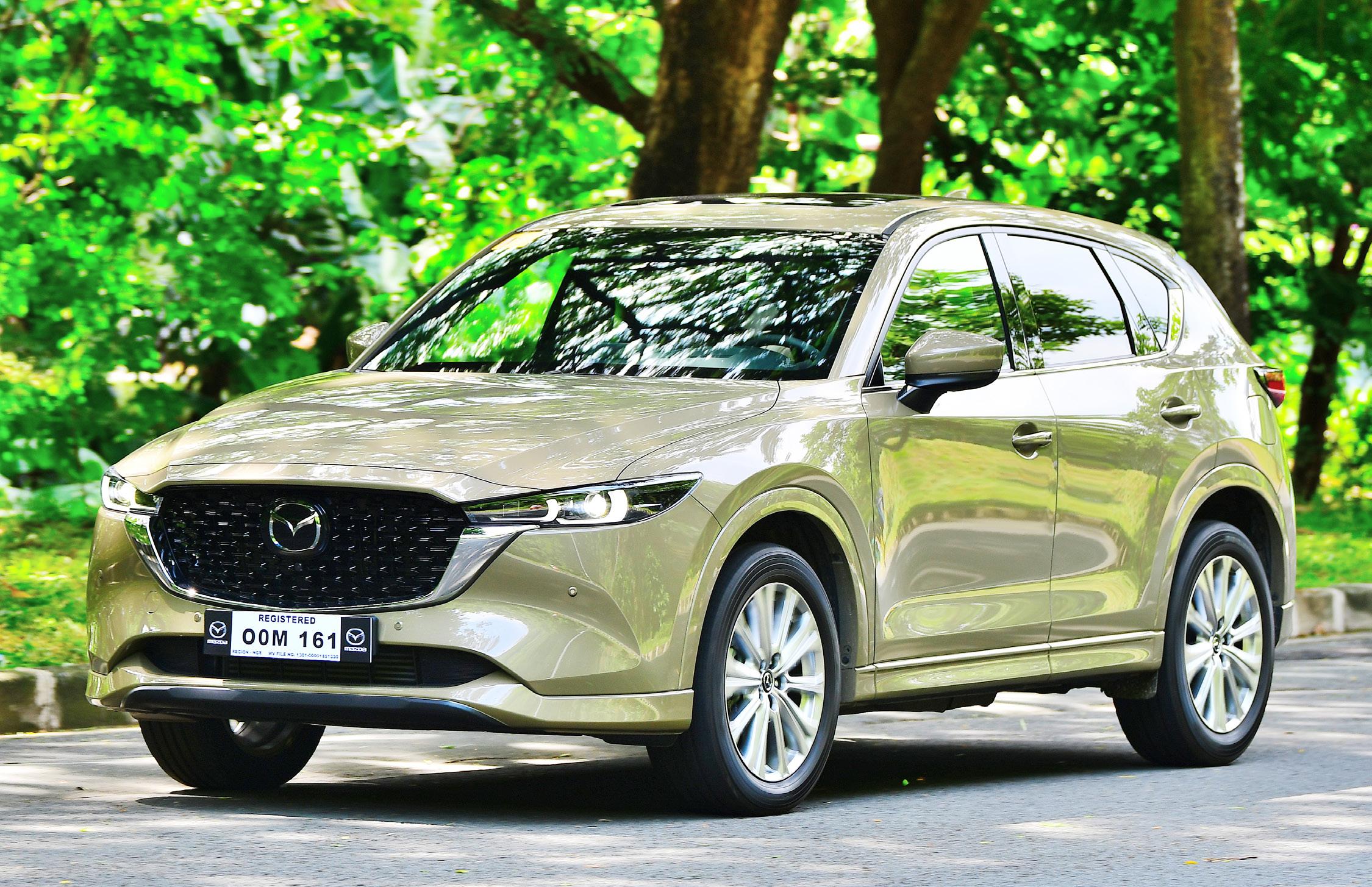
 Mazda CX-5 2.5T AWD
Skeleton of Mazda CX-5
Sketches of Mazda Minagi
Mazda Minagi
Mazda CX-5 SKYACTIV-D
Mazda CX-5 2.5T AWD
Skeleton of Mazda CX-5
Sketches of Mazda Minagi
Mazda Minagi
Mazda CX-5 SKYACTIV-D
If Ferrari’s design philosophy hinges on continual evolution, Keith Bryan Haw of Importhookup prefers a radical evolution when it comes to customizing his personal Ferrari 488 GTB.

By definition, art cars are special vehicles that have been modified in the quest of enhancing its appearance and as an act of artistic expression. Knowing fully well that art is highly subjective, art cars can also take on many forms. Narrowing it down entails identifying what kind of work has been done. For starters, it can be an elaborate painting done on the exterior just like the famous BMW art cars. It was conceptualized in 1975 when French racecar driver and auctioneer Hervé Poulain commissioned American artist and friend Alexander Calder to paint the first BMW Art Car. This first example would be a BMW 3.0 CSL which Poulain himself would race in the 1975 24 Hours of Le Mans endurance race. Other BMW art cars followed soon after with renowned artists such as Andy Warhol, Roy Lichtenstein and more. A tradition that has found its way onto our shores as BMW Cars Philippines has tapped some of the country’s renowned artists such as, Ramon Orlina, Ivan Acuña, George Yulo and others to design and execute their artistic vision on several BMW scale models.
Art cars may also take form in its overall exterior shape, fashioned from pre-war era coach builders such as Zagato, Figoni et Falaschi, Bertone, Saoutchik and more that have produced wonderfully crafted automobiles. Or take for example highly crafted builds from modern day American car customizers such as Chip Foose, Jim and Mike Ring of The Ringbrothers, Dave Kindig and more that continue to build amazing rides. The car as an art form could even be a professionally composed picture shot by a seasoned photographer. Whatever form it may take, it has to evoke an emotional response

and communicate a particular idea or design language to whoever lays their eyes on it.
But these past few years, new car artisans have made their mark in the car customization scene as they regularly unveil their acclaimed builds at SEMA and other leading shows around the globe. I’m referring to automotive-driven, highly creative souls such as Akira Nakai of RAUH-Welt
BEGRIFF (RWB), Wataru Kato of Liberty Walk, Magnus Walker of Urban Outlaw and Rob Dickenson of Singer Vehicle Design. These modern-day car artisans have amassed a huge following that can be attributed to their designs that are purely charismatic. I say charismatic because even though they seamlessly incorporate signature touches on each build, they see to it that each one has its own character and more importantly, slightly different from one another. Each custom build incorporates a signature look that when you see one, you’ll immediately know who’s responsible for it. Just like the trademark brush strokes of great artists, which depict their own individual styles.
G. Pallarco TUNER EDITORFrom the flowing over fenders of RWB Porsches to the aggressively sculpted wide flares by Liberty Walk, the finely shaped door handles of Urban Outlaw Porsches to the neatly tapered exterior body lines of the Singer Porsches, these individuals represent the new wave of artisan car builds that are gaining ground on a global scale. If you ask me, this is actually good for the entire automotive hobby as it presents another avenue as to how we can simply have fun with cars. I mean, who knows, it might even actually appreciate in value someday. Just like the artful custom cars done by past car customizers such as the late George Barris, Boyd Coddington and more that have become highly prized collector cars. My only hope is that such cars don’t end up as ‘garage queens’ or prized sculptures that won’t be driven enthusiastically and with gusto. If you think about it, the automobile can really be looked upon as a sculpture in motion. Meaning there’s really no harm in re-sculpting it for the sake of making it look better. Provided it be done properly and most importantly in good taste.
“Each custom build incorporates a signature look that when you see one, you’ll immediately know who’s responsible for it. Just like the trademark brush strokes of great artists, depicting their own individual styles.”




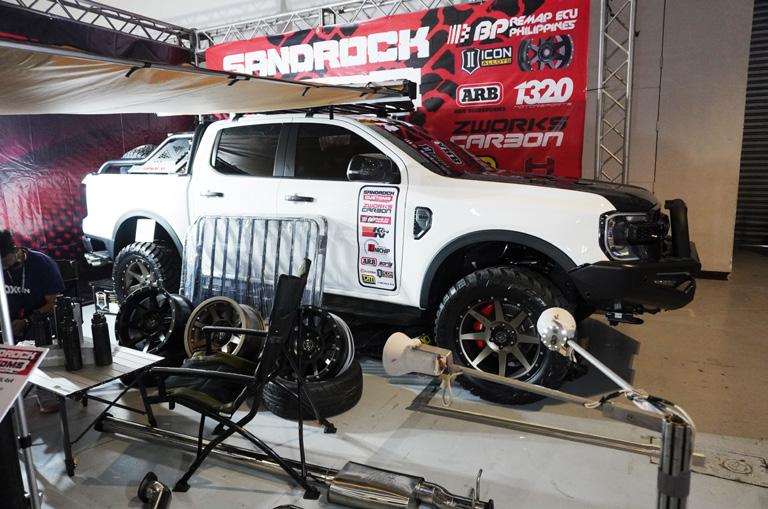
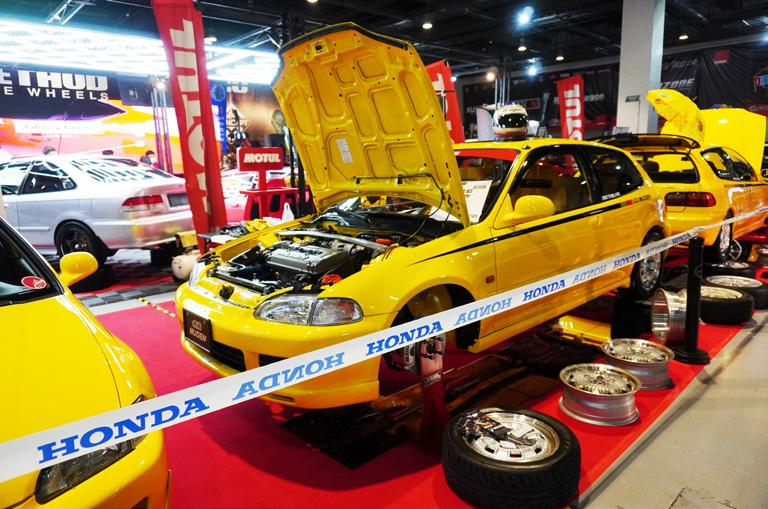


 Words: Francis G. Pallarco Photos: Gian T. Pallarco
Words: Francis G. Pallarco Photos: Gian T. Pallarco
Showcasing the ultimate expression of automotive customization and modification, the 14th ManilaAutoSalon and 27th SportTruckShow 2022 was recently held at the SMX Convention Center. Organized by Ms. Sophie Delos Santos of Tradeshow International, Inc. in partnership with Motul Philippine distributor Infiniteserv International. This year’s exciting show saw a huge turnout that holds true for both the number of vehicles that entered and the number of showgoers that trooped to see the show as Ms. Sophie sums up this year’s successful event, “The recently concluded ManilaAutoSalon and SportTruckShow was the best to date in so many aspects - quality of entries, new products launched, quality and number of attendees and most of all the positive feedback we have been receiving from both local and international fans. I can safely say that we have successfully attained an ideal level of normalcy in car show organizing - post pandemic. It is indeed a relief that we are all back in business — a truly positive note for the Philippine automotive aftermarket industry.”
The ManilaAutoSalon and SportTruckShow is all about custom vehicle customization and modification, where all the best tuner shops take part to showcase their latest builds that includes, supercars, hyper cars, tuner cars and of course, off road and outdoor lifestyle rigs. Aside from the show stopping vehicles, showgoers can also look around and shop for the latest automotive accessories, parts and products from the leading aftermarket brands with numerous booths to check
out. During the 4-day event there were also live demos and other promotional events held that made it a must-see for any kind of car enthusiast.
As expected, the exciting show successfully brought together some of the Philippines’ finest builds from tuners, exotic supercars, sport utility vehicles, and rugged 4x4 rigs under one roof. Whether it’s a high horsepower twin turbo engine setup, or an elaborate off-road suspension, the show certainly had a lot to offer for every type of gearhead. What’s more, the quality of the entries continues to improve and surprise as they come up with unique booth designs and how they present their builds.








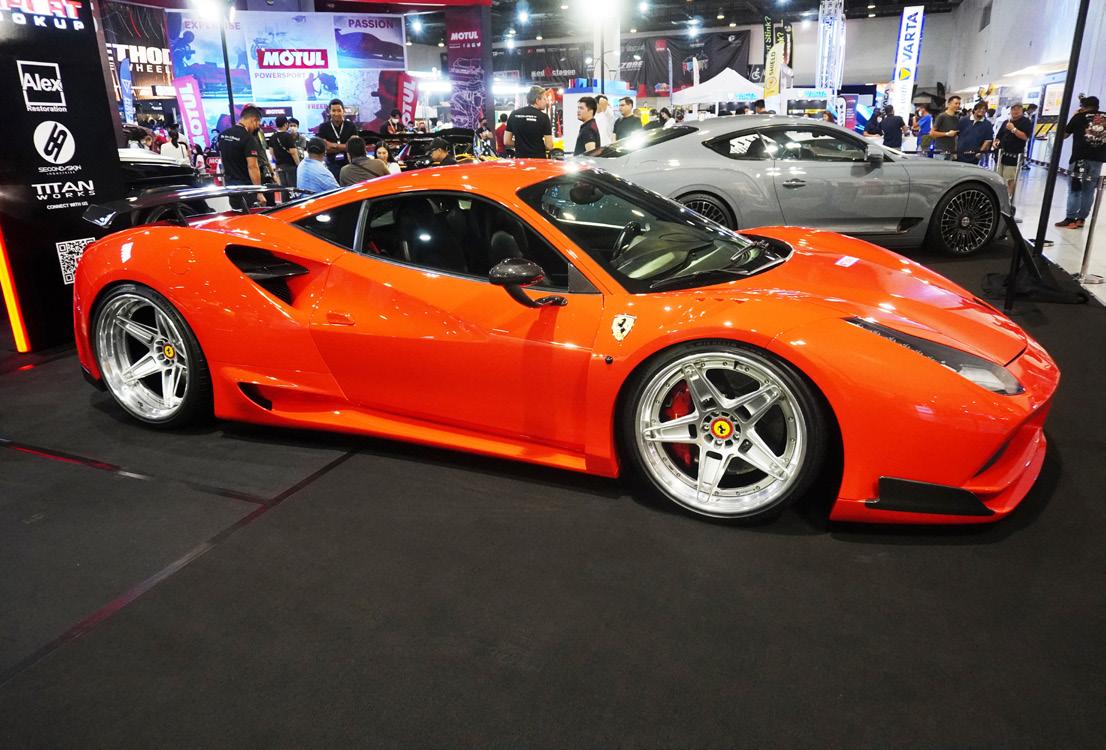

 Best of Show Custom
Best of Show Extreme
Best of Show Sedan
Best Racecar
Best Display
Best EVO
Best of Show Custom
Best of Show Extreme
Best of Show Sedan
Best Racecar
Best Display
Best EVO


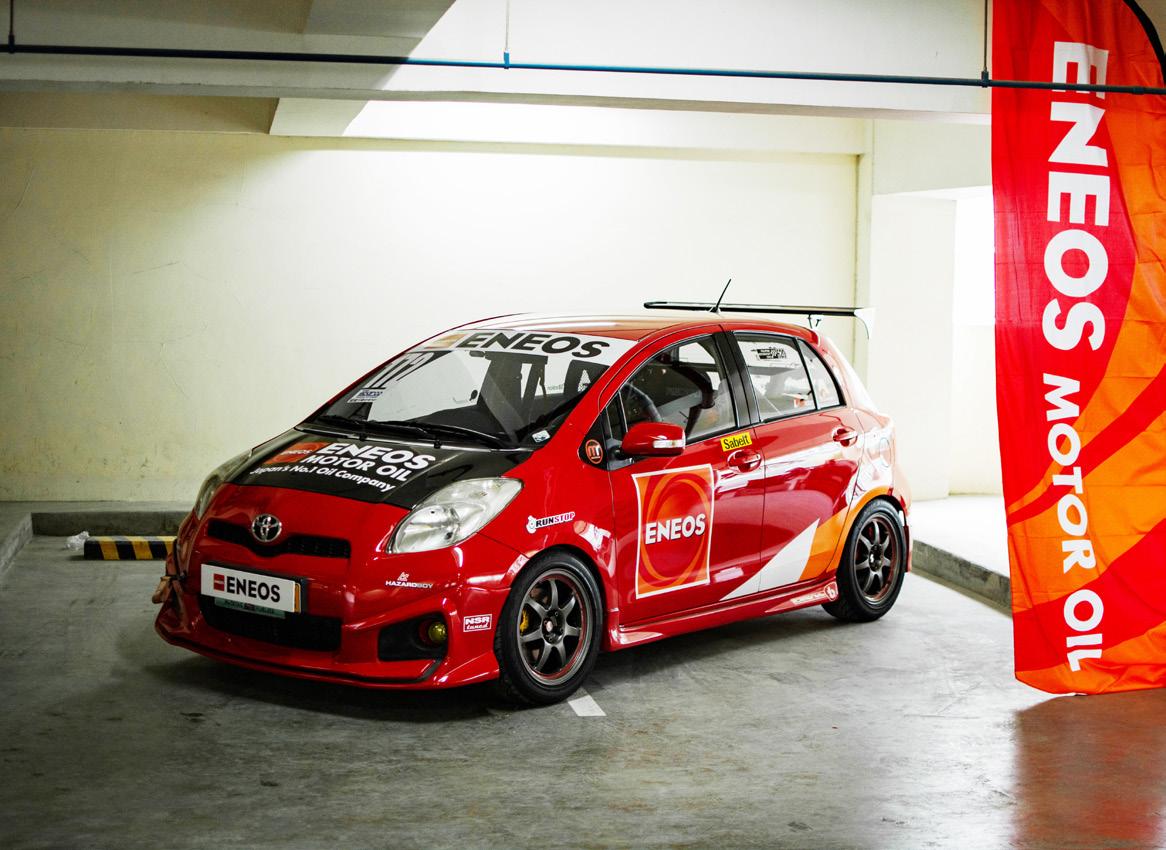

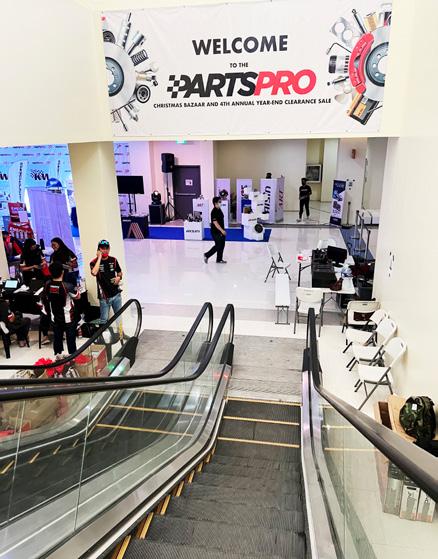




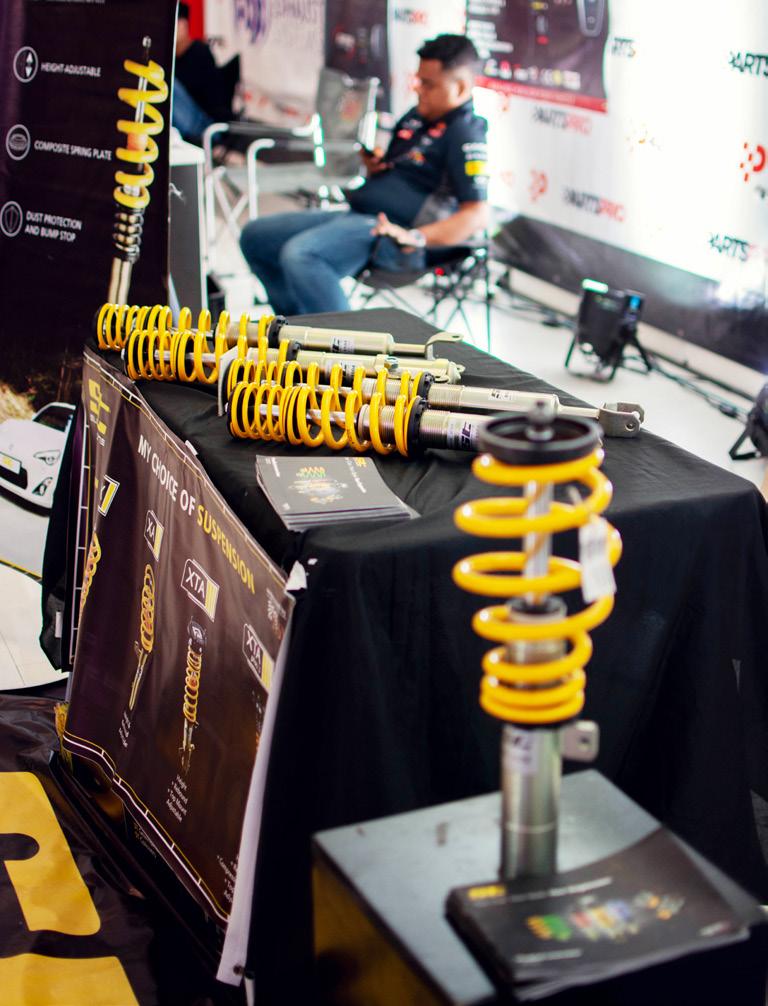



PartsPro held the very first InterClub Meet & Shop last December 4, at Met Live Mall in Pasay City.

The meet spanned 3 levels of Met Live’s Parking Building and present were Altis Club, Toyota Auto Club Philippines, Nissan Kicks Club of the Philippines, 86 and BRZ Club of the Philippines, Civic Club, Suzuki Jimny 4x4 Club of the Philippines, Mazdatech/Protégé Tech Philippines, Montero Sport Pilipinas, Grupo Toyota and Navara Nation Philippines. Car club members had a chance to have their own meet and greets as well as interact with other clubs.
The Met Live was filled with a variety of lightly and heavily modified sedans, sport coupes, hatchbacks, SUVs, AUVs, and even the latest hybrids. Another exciting first was the PartsPro Show & Go section wherein the car clubs paraded some of their most awesome rides akin to a model strutting down the runway. This event is something club members will surely look forward to at the next PartsPro event.
This was actually the 4th annual, but the very first in-person Christmas Clearance Sale of PartsPro. It was a busy, fun-filled day with truly amazing deals from PartsPro vendors and brands. There were very few shoppers who managed to resist the incredible prices and walk away empty-handed. Shoppers feasted on goodies from Eneos, Chemical Guys, Primal, Amsoil, Imprint, Partshub, Gyro, GW2, Aisin, KW Suspensions, ST, DTE, Fox, Brembo, Runstop, Fabrix, Motul, Waido, and Rota.
Adding to the excitement was the presence of Stregawo and Simagic with 3 custom sim rigs where attendees had a chance to test their racing skills. Emerging victorious for the day were Luis Moreno and Russel Reyes.
Despite the hub of activity with the Clearance Sale, Car Meet, Sim Competition, and Show & Go, the day had a relaxed vibe that made attendees just want to stay and hang out. The PartsPro Meet & Shop event was a true celebration of the automotive lifestyle and offered a unique venue for enthusiasts to gather, shop, and enjoy.

This event combines the kind of activities any car enthusiast wouldn’t want to missEVENTS Words: Jill Elicano-Tan Photos: Jordan Aparicio


Straight up, the Z06 emblem on the fender hints at what this sixth-generation, or C6 Corvette is capable of doing on a two-lane blacktop. It’s got a 505-horsepower, hand-built, LS7 V8 engine, mounted on an aluminum chassis that’s 136 pounds lighter than the steel one found on standard Corvette models, upgraded brakes and more. Factory mods to make the Z06 accelerate faster, grip better and stop shorter than most so-called sports cars. With 0-60 mph in 3.6 seconds, 10.98-second quarter-mile time and 198 mph on the top end, the Z06 isn’t what you would refer to as slow. After going through some of the extensive performance features of the Z06, it’s really an engineering marvel where
▼
The
Chevrolet engineers explored every bit of performance advantage possible. So much, that the Z06 even employs a specially made engine cradle constructed out of magnesium. This mounted the engine lower and to the rear to achieve optimum weight distribution for better overall handling. Furthermore, the Z06 only came with a 6-speed manual transmission, making it a true driver’s car and sought after by those who know. Someone like Rob Duran who works as an aircraft maintenance mechanic for United Airlines as he recalls, “I found this in mint condition with only 30,000 miles in 2019 and got lucky with the price and everything. What’s more, it was bone stock.”
From the get-go, the LS7 that propels the Z06 is already a stout


small-block engine. It features racederived technologies such as, titanium connecting rods, a dry-sump oiling system and more. Simply put, it was the largest engine offered in the Corvette in more than 30 years and the most powerful engine in Corvette’s history until the supercharged ZR-1 came along. I can imagine driving along the busy I-405 Freeway with this much horsepower might be too much for some to handle. So the thought of adding some more might sound overkill. But from an enthusiasts’ point of view, the opportunity to add more power is always a good thing as Rob explains, “This amazing engine is already good enough. But with me being an adrenaline junkie, I wanted more power. In the summer of 2020, I
— ROB DURAN“I am very proud of my car and I love telling people that I built it. It for sure hits differently when you say built not bought.”
Z06 is really an engineering marvel where Chevrolet engineers explored every bit of performance advantage possible.
▲
finally had the time to start my engine build project. This was my first time doing major engine work and it just had to be a Corvette engine. It was all top end work since the bottom end of this particular GM LS7 engine was already made with bullet proof parts.” Steel liners, forged steel crank, titanium rods, flat top pistons. What more could you possibly ask? This explains why Rob concentered his efforts on swapping out the intake manifold along with a fully prepped cylinder head that’s able to
From the get-go, the LS7 that propels the Z06 is already a stout small-block engine that features race-derived technologies.

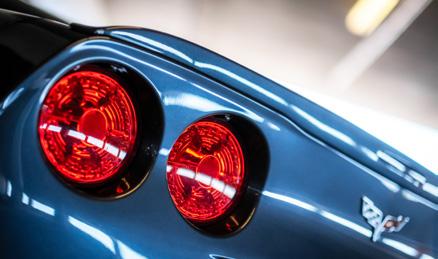







flow and expel gases much better. It also includes a camshaft with a better than stock cam profile that’s responsible for that killer rumpity-rump sounding idle. What’s great about these American aftermarket performance parts is that they’ve done exhaustive R&D so each part is guaranteed to give additional power gains. Provided they be installed properly.
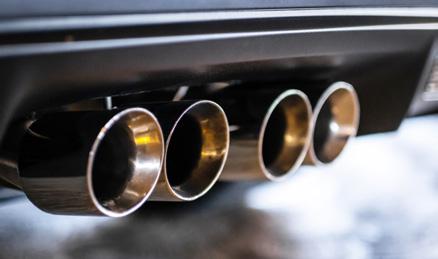
Being an aircraft maintenance mechanic, Rob saw this as a challenge to his skills as he recalls,
“This project took 3 days removing the old parts and 4 days to install the new goodies with 12-hour shifts every day. I was pretty much living in the garage at those times. It was a challenge due to the Corvette being very low to the ground and everything under the hood is all compact. However with extensive research through Corvette forums and YouTube videos, I knew it was possible to do in a garage with a jack and jack stands.” Armed with his mechanical skills, Rob was able to pull it off, and with a proper dyno tuning done at Church Automotive Testing they were able to achieve 580 whp and 538 lb-ft of torque. “The blood, sweat, and tears I put in was definitely worth everything! From start to finish, I always made sure to do everything right the first time and change whatever part was needed to withstand all the power I was going to add. The day I first started the car was the ultimate test and of course it started and sounded nothing but sweet victory! With me being a certified aircraft mechanic, it was a proud moment. It definitely boosted my confidence and knowledge as a mechanic.”
In order to gain more traction from the newfound power levels, Rob swapped the Z06 wheels for a larger diameter set of C7 Corvette wheels that are hard to come by and fitted with super sticky Toyo R888 intermediate tires. The sleeper look on the outside remains, save for a front chin that Rob painted and added. As far as horsepower goes, the quest for more is certainly far from over, as Rob’s future plans include upgrading the fuel injectors to run the engine on E85 fuel and get another tune to achieve 600 plus horsepower as he sums up his quest for more power, “I am very proud of my car and I love telling people that I built it. It for sure hits differently when you say built not bought.” I wholeheartedly agree.

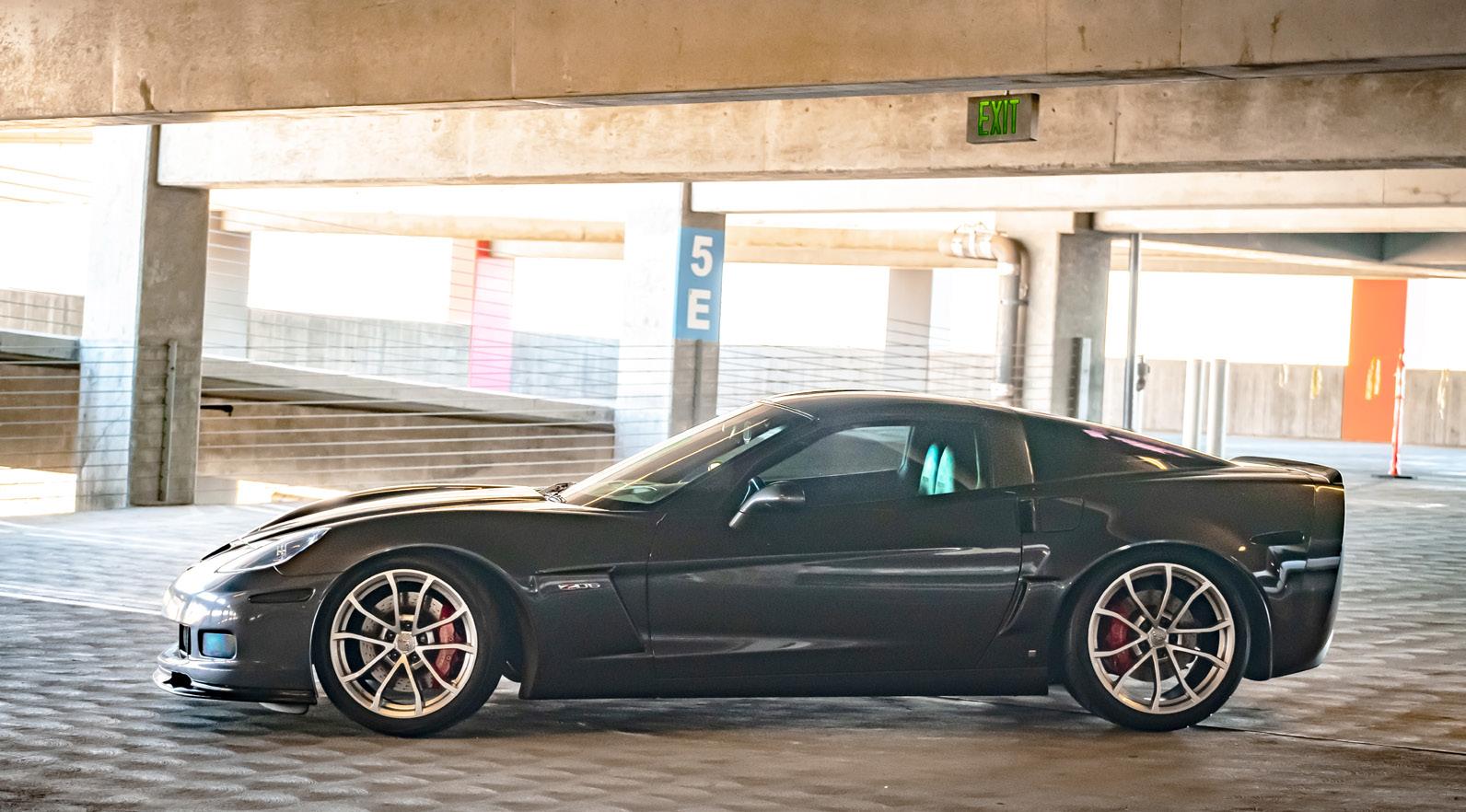
 Words: Francis G. Pallarco
Photos: Jun Vinluan
Words: Francis G. Pallarco
Photos: Jun Vinluan
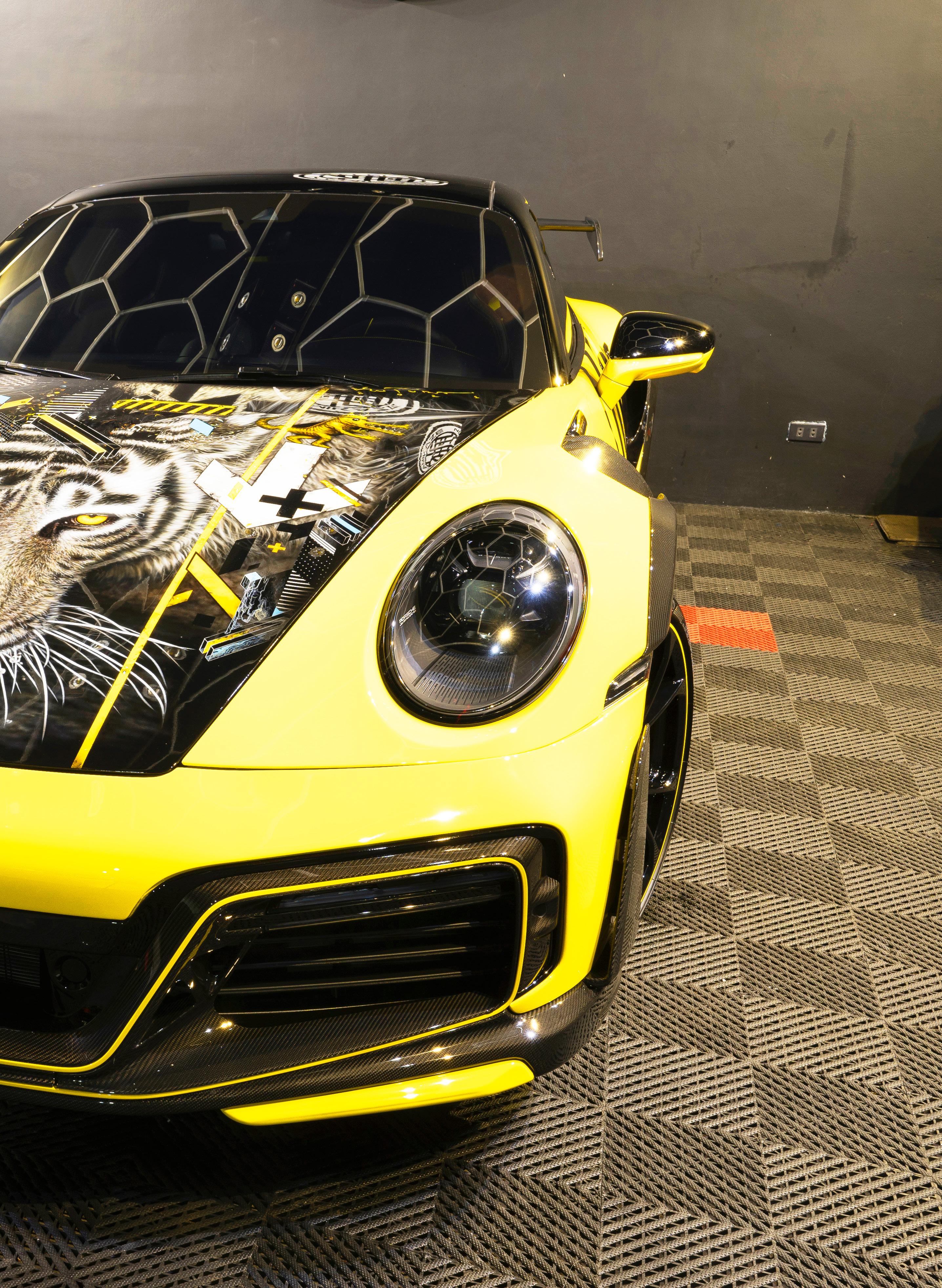
▲
To be able to execute a fine work of art, one of the most important elements would be a blank canvass. Something that could take the form of just about anything that an artist can use to convey their thoughts and ideas. In this case, it’s the current 8th generation, 911 Turbo S that’s propelled by a 3.7-liter twin-turbo flat-six engine, making 640 horsepower and sends it to all four wheels via an 8-speed PDK gearbox. With a 0-60 mph time in just 2.2 seconds, this makes it one of the quickest and gorgeous looking production car in the world. I must say, it’s pretty impressive for a blank canvass to begin with.
Our featured art car showcases the latest work of leading Filipino contemporary artist Ronald Ventura. Making its debut during the recent Manila Auto Salon, this rolling work of art is a collaborative effort between Ronald Ventura and Keith Bryan
Haw of Importhookup as he explains, “Ronald made his Porsche into an art car to showcase his work as he loves cars especially Porsche. Actually, he has several Porsches among other cars and his approach is totally different. That’s why it’s a privilege for me to team up with him and do a collaborative effort.” Having already done several artworks on Porsche and McLaren trunk lids, this is his latest. For this particular piece, his complex artwork depicts a detailed portrait of a tiger as the main focal point while being surrounded by different figures using various media and colors. His artistic expression also extends to the rest of the 911’s bodywork. Random black lines appear on the sides that convey a sense of dynamism and motion. It also creates a bold contrast that’s set against the Porsche racing yellow exterior color and Techart GTstreet R carbon fiber pieces.
Limited to just 87 Porsche refinement programs in the world, the Techart GTstreet R package for the 992
The combined artwork done by Ronald Ventura and the addition of the exclusive Techart GTstreet R program is nothing but extreme

series 911 Porsche is only for a select few as Keith adds, “Ronald wanted a very exclusive program that’s why we chose the GTstreet R. Techart offers the most complete full carbon aero kit and package that’s limited to just 87 kits. He picked kit number 73 as it is one of his favorite numbers and he was one of the first to purchase them. Right now there are only 15 programs left and he’s the only one to have this in the country.”
Techart’s exclusive modification program for Porsche started in 2001 and has since gained worldwide recognition for combining everyday use and uncompromised track performance.


Exclusively based around the 992-Series Porsche, a huge part of the Techart GTstreet R program are the wind tunnel tested, exterior enhancements that’s made from genuine carbon fiber. To highlight the select pieces, they chose an exposed carbon fiber look and limited their color palette to just black and yellow as Keith quips, “We wanted to bring back the Techart classic look of black with the yellow body color outline that’s also executed on the Techart GTstreet R wheels.” The interior of the 911 also underwent a complete GTstreet R transformation with new leather and interior pieces. But the best part about the GTstreet R program is that Techart thought of every small detail right down to the Techart emblems that replaces the iconic Porsche script on the engine bonnet. Performance-wise, the Techart GTstreet R program comes with a Techart Sport Exhaust System, Techart Downpipes and most importantly, an MC Chip ECU Tune. Collectively, these mods brutally bump up its power levels by as much as 750 horsepower according to Keith.
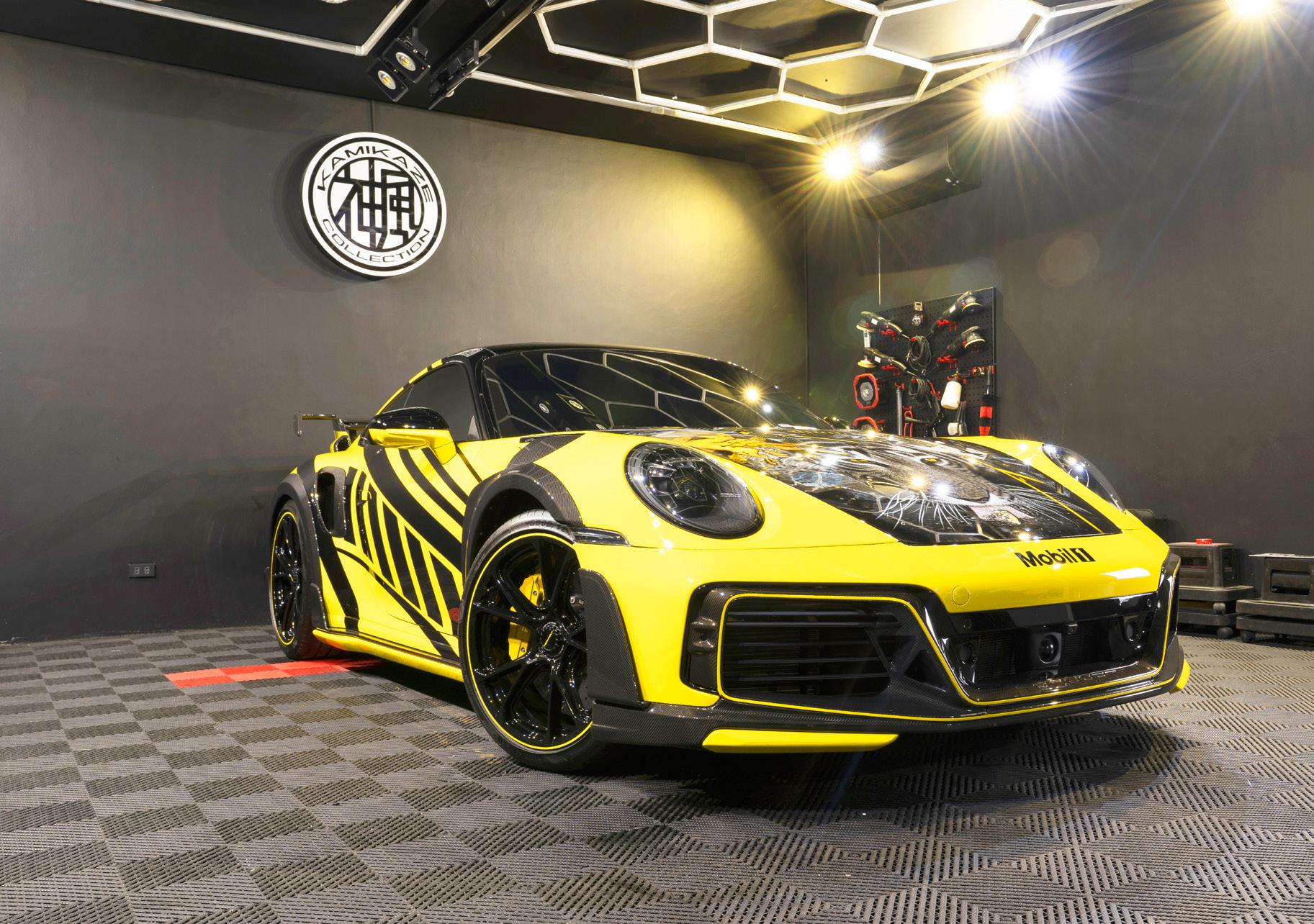

The combined artwork done by Ronald Ventura and the addition of the exclusive Techart GTstreet R program into this Porsche is nothing but extreme to say the least. More importantly, this is such a unique build that it's riddled with so many details and armed with so much horsepower. I highly doubt that we’ll be seeing something even remotely like it on the road or this world for that matter.


In terms of body kits, how do you conceptualize or come up with the design?

CP: All design and concept work is done by our seasoned designers and engineers, following the signature TECHART design and with technological benefit in mind.
TECHART was founded in 1987 initially focusing on supplying interior parts to Porsche. From there on, starting with the 911 range and expanding to other models such as Cayenne, TECHART became known in the industry regarding quality Porsche refinement. Two signature programs have been the MAGNUM for the Cayenne range as well as the GTstreet R for the 911 range, of which the 4th generation — based on 992 Turbo S — has been displayed recently at the Manila Auto Salon.
What are some of your latest and most popular TECHART aftermarket parts?
CP: The core product line for TECHART is the refinement program for the 911 range, where we offer individualization for all generations starting from 996. In particular our extensive program for the 992 range, with the GTstreet R being the pinnacle and the program for 992 GT3 upcoming. We also offer a range of refinement options for other Porsche models, be it Cayenne, Boxster, Cayman, Macan, Panamera or Taycan. For the new Porsche EV, the Taycan, we offer of a comprehensive carbon fiber aero kit as well as lightweight forged wheels and extensive interior refinements.
What makes a TECHART product different?
CP: TECHART develops and tests all new products following the most strict standards and guidelines to ensure safety, durability and benefit for all our products. This is backed up by the bulk of our portfolio being manufactured in Germany to the highest standards. Furthermore, the designers and engineers at TECHART strive for every product to have a benefit for the client such as improved performance, easier day-to-day use or increased longevity of the car.
Has it always been a practice of TECHART to limit the number GT Street R kits made and why?

CP: With the GTstreet R based on 992 Turbo S, we decided to limit the number of kits made to ensure desirability of the product for our loyal clients. Along with that, it allows TECHART to complete the project after the limit has been reached so as to dedicate resources to future projects.

What can we expect in the future for TECHART?
CP: With the transformation towards EV in full swing in the automotive industry, TECHART is very well prepared. The program for the Taycan shows the quality and design of upcoming projects.
Can you give us a brief background of TECHART?
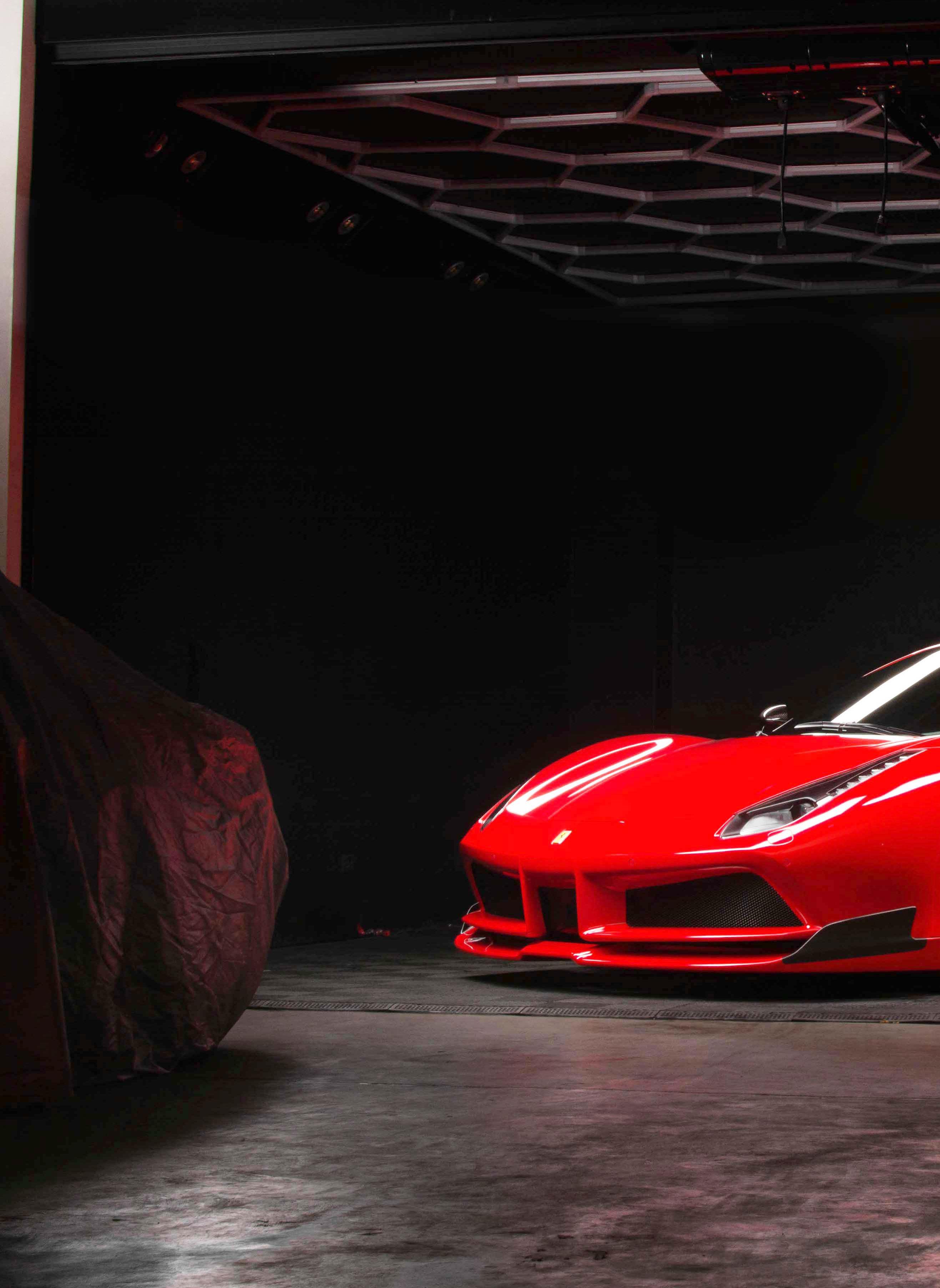 Words: Francis G. Pallarco
Words: Francis G. Pallarco

for high end cars such as Ferrari, Lamborghini, Maserati McLaren, Tesla and Rolls-Royce. So when Keith saw an opportunity to purchase one, he wasted no time in getting it as he quips, “It was my dream to own two Novitec N-Largo equipped cars so I immediately took it. I even got the body kit first and the car followed after a few months. I tried several looks before settling on a particular look because I like to see the evolution of my build.”
Underneath that stunningly gorgeous Novitec N-Largo body kit is what was once a stock bodied Ferrari 488 GTB. Conceptualized by Ferrari’s Styling Center, the sleek exterior of the 488 GTB is shaped by aerodynamics as much as it is by talented Italian designers. Now don’t get me wrong, there’s absolutely nothing wrong with it. The 488 GTB is a beautifully crafted Italian supercar from top to bottom. But if Ferrari’s design philosophy hinges on continual evolution, Keith Bryan
Haw of Importhookup prefers a radical evolution when it comes to customizing his personal Ferrari 488 GTB.
Radical in the sense that infusing the carbon fiber Novitec N-Largo widebody version not only alters how it looks significantly, but also entails swapping out and snipping away a huge portion of the Maranello crafted bodywork. With production numbers limited to just eleven kits worldwide, the N-Largo widebody version of the 488 GTB is very exclusive and highly sought after. Manufactured in Germany, Novitec is one of the leading refinement specialists


▼ The
culprit for making this 488 GTB crazy fast can be found right under the glass lid.
lot of carbon fiber parts meant paint prep work became a long and tedious effort, according to Alex Isip of Alex Car Restoration in order to achieve a flawless paint finish. But it paid off as it won the much coveted Best in Paint Award during the recent Manila Auto Salon.
Apart from the widebody kit, the next thing that anyone instantly takes notice of are the awesome looking wheels. Manufactured in the States by Brixton Wheels, these are one-off 20 and 22-inch forged wheels that Keith designed as he explains, “Retro modern is the theme as the Novitec N-Largo kit is reminiscent of a Ferrari F40. So I thought of a modern design based on a 5-spoke wheel pattern with floating spokes and lightening holes. It took me six months exactly to finish and conceptualize the wheels with Adam of Brixton. I even got the backspacing wrong for the rear so I ended up ordering another pair. So I now have a very expensive coffee table, but it was necessary in my pursuit of having the best fitment and stance for the Ferrari.” Another thing that makes this 488 GTB stand out is its killer lowered stance that just looks so proper. Largely responsible for that are the Novitec adjustable springs that allowed them to exactly lower the Ferrari down to the last centimeter. It also comes with a front lift system that allows the front end to be raised by as much as 40 mm to help it go over steep ramps.

The interior remains driver-focused with fine leather, suede, carbon fiber, and metal accents all around that’s dominantly black with red stitching. But that didn’t stop Keith from adding Ferrari carbon pieces here and there along with a red seat belt. But the centerpiece, in my opinion, would have to be the Ferrari carbon steering wheel containing the shift light, switches and buttons including the F1 derived Manettino switch. It’s all about the details and this widebody 488 GTB has them all around as Keith adds, “To match the exposed carbon fiber pieces, I added the 488 GT3 race car mirrors and had them rewrapped with same carbon fiber weave material.”
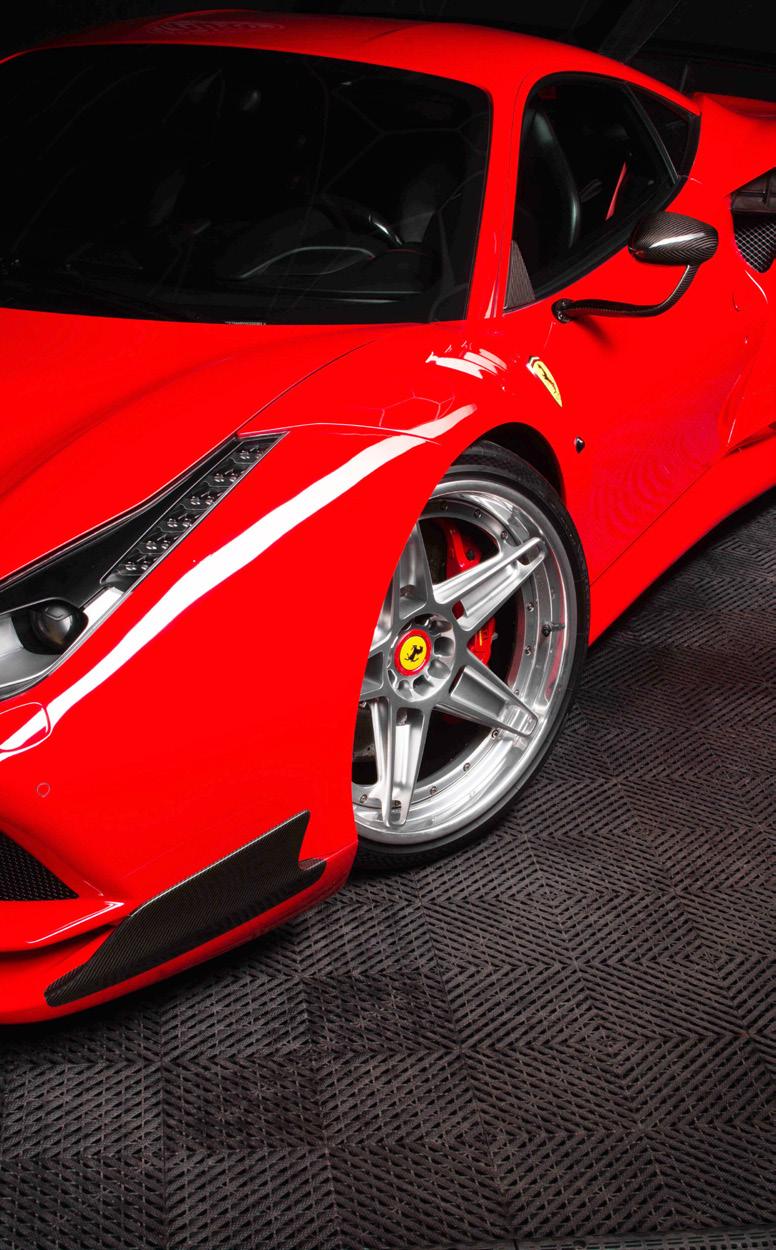

The culprit for making the 488 GTB crazy fast can be found right under the glass lid.

“From the prancing horse crest on the fender, the modular five-spoke wheels, to the gills and louvers, it really does look like a reimagined F40.”
It's none other than a 3.9-liter, V8 engine that puts a couple of IHI twin-scroll turbochargers to good use. Capable of over 600 horsepower on tap, the 488 GTB achieves supercar performance levels with considerable ease. 0-60 mph in 3 seconds with a top end of over 205 mph in stock form. The word stock doesn’t work well with Keith so he had a race-spec, down-pipe and titanium exhaust specially made as he adds, “The exhaust is one off too, made by Ryft in the States that took them around 5-6 months. They came up with a HF (high frequency) specific exhaust that a lot of people took notice for its high pitched sound. Most or almost all aftermarket 488 GTB exhaust systems have a low tone but this one’s pretty high.

Together with an Mcchip-DKR Software Performance Stage 2 tune, it should be making around 800 horsepower.” Now that should make it brutally fast. Taking home the Best of Show Extreme Custom Category in the recent Manila Auto Salon proves the amount and quality of work done to pull off such an extensive build as Keith sums it up, “My favorite part honestly is finishing it as it’s been almost two years of conceptualizing and building. I’m super excited to drive and enjoy it.” From the prancing horse crest on the fender, the modular five-spoke wheels, to the gills and louvers, it really does look like a reimagined F40. It’s just so visually appealing that I find it difficult to stop myself from simply staring at it.


In a world of digital wizardry and electronic rider aids, it is sometimes a pleasure to ride something simple and of pure nature. Nowadays, riders are so spoiled with electronic nannies saving our butts that we sometimes tend to forget some of the most basic things that used to be essential in mastering riding a motorcycle. Throttle input is no longer as delicate on powerful bikes as it used to be being that we now have traction control, anti-wheelie control, and launch control to soften our ham-fisted inputs on fueling. Braking inputs now have ABS and Cornering ABS to keep you from locking the tires even when abruptly grabbing a handful. Yes, bikes are now faster, and safer because of these things but then things like phone connectivity, GPS, communicators, and all other sorts of stuff sometimes distract us from the very reason we ride.
I don’t know about you, but I ride to detach myself from this world of instant access. I ride to clear my head of everything that troubles me which lets me refresh my mind and get back to things that need my attention with a better disposition.
While I do enjoy modern motorcycling just as much as anyone, sometimes, it's just better to ride without any electronic safeguards to mess with my every input. Where I am alone feeling the wind on my face without a care in the world. No need for stopping to check if my communication device is connected so I don’t miss any calls or emails.
John O. Mendoza WHEEL2WHEEL ASSOCIATE EDITOR
Where I am one with the motorcycle, making it do what I want it to do without any robots telling me otherwise, is pure luxury. It is the freedom I envisioned when I was younger. Just me and the open road, going wherever.
As I get older, I appreciate these things even more. Simple machines that get you where you need to be. All it needs are gas and air in the tires. Beat on it and ride it till the wheels fall off. Wring its neck and milk the throttle for everything it has got; stomp on the rear brake and slide out the back-end then bounce on the fork to pop a quick wheelie. Oh, the joys of my youth relived in just a few brash moments. Of all the analog bikes I’ve had, I miss my Honda NC30 VFR400R the most. That bike taught me everything. From rev matching to trail braking, it allowed me to develop a feel for what the tires are doing in relation to the road surface. It allowed me to learn how to search for tire edge grip and set suspension damping rates. It even made me understand carburation and the inner workings of the internal combustion engine as I worked on it myself.
Motorcycling back then was totally different. You had to know your bike inside and out, unlike these days where your laptop probably knows better than actual mechanics.
I guess what I’m trying to say is if you have the opportunity to own a classic motorcycle, do so. You’ll learn a lot from it especially if you’ve never had any experience living with one. Ride safe and keep you rubber side down. Cheers!
“While I do enjoy modern motorcycling just as much as anyone, sometimes, it's just better to ride without any electronic safeguards to mess with my every input.”
Share the road. Ride safe. Stay alive. Check your mirror for motorcyclist.

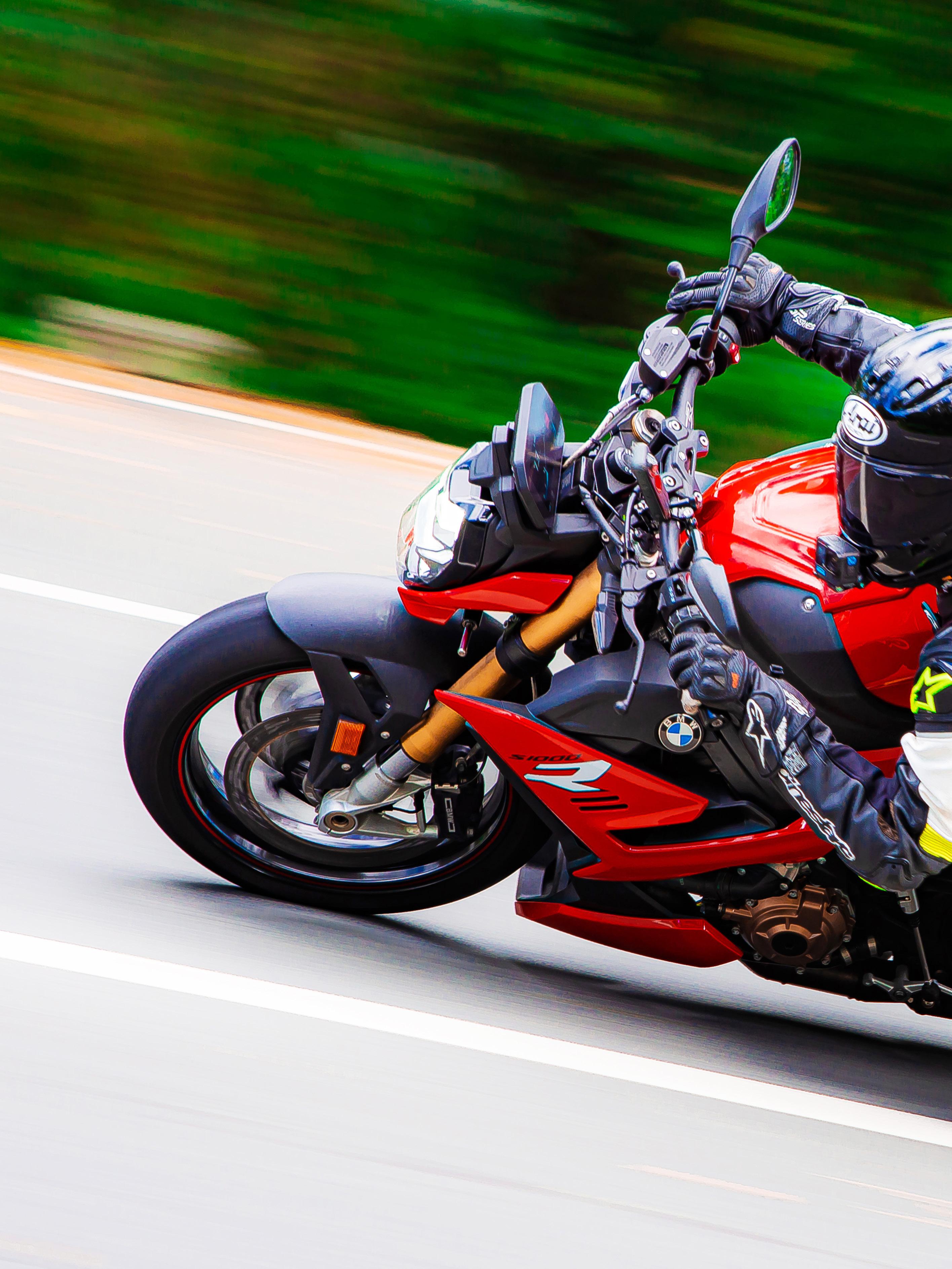
 Words: John O. Mendoza
Words: John O. Mendoza
Photos:
Jay Ochuco (Papa Chocks) John Pilar (Vicces Cronologie) Earl Samala (InfinitX) J.R. Villanueva (Ten-Ten Moto) Rommel Abkilan (Pilisap)Not so long ago, there was a heavily defined line between full-ontrack weapons and standard street machines. It was either you get achy wrists and a sore back to go with top-tier performance or you get a lazy yet comfortable mile muncher. Over the years, manufacturers have found a huge gap that needed to be filled when sports bike owners started ditching their fairings and clip-on bars for standard handlebars and round headlights.
Soon enough, the advent of the Super Naked category saw production versions of strippeddown flagship repli-racers with upright bars allowing riders to have the same performance of a full-on track machine without the aches and pains that go along with it.
The only bike I might ever need.
The BMW S1000R is one such beast having the same chassis, running gear, and engine as its more track-focused sibling the S1000RR in a naked and retuned package.

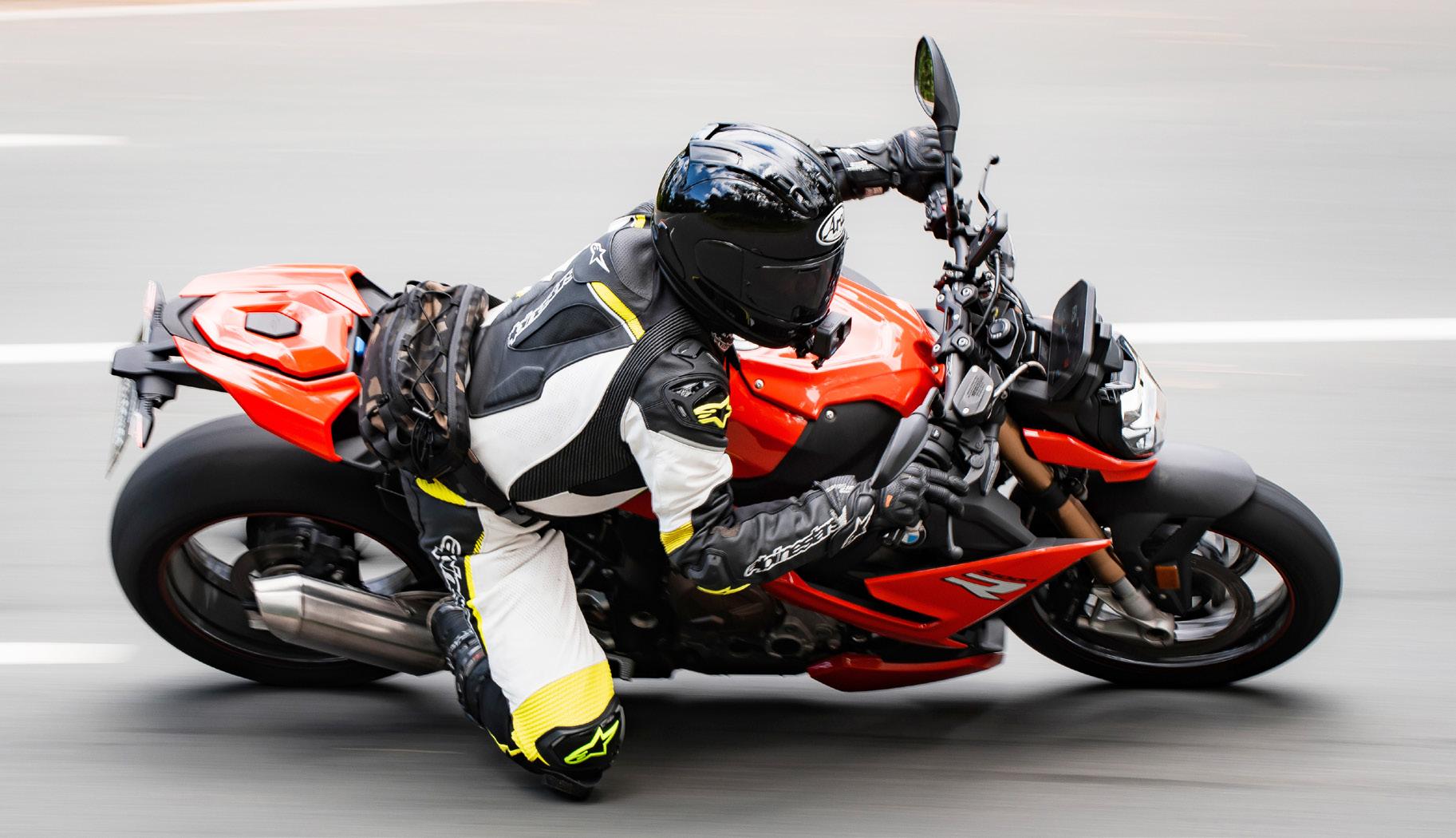
Unlike the S1000RR, the single R doesn’t have the shift-cam feature making the power significantly lower than on its fully faired sibling. A difference of about 40 HP may seem huge on paper but that 165 HP maximum output on the S1000R is more than enough to scare you out of your wits on public roads. Besides, who would want 205 HP on something that doesn’t have anything to shield you from the elements?

The S1000R however benefits from everything else in the double R’s arsenal. BMW’s DDC (Dynamic Damping Control) automatically adjusts the suspension’s damping rates to suit current road surface conditions for the best ride quality every time and at any time. Its 6.5-inch full TFT display dash is one of the best in the business showing all sorts of information while displaying the essentials very clearly, making them easy to read at a glance and in any lighting condition. The jog dial and buttons on the switchgear are very easy to use and get familiar with allowing for easy adjustments even while on the go. The switchgear of course feels premium as one would expect from the German brand.

The handlebar setup is aggressive for something in supposedly standard trim, making you feel like a proper hooligan ready to terrorize the streets. The reach to the bar is a little far for a guy with short limbs like me. Bar height is set low but not so extreme for it to deter you from making long trips. Both the seat and the bar are adjustable although I didn’t have time to mess about with them. The steering locks are quite narrow making the bike hard to turn in tight spaces, not that you’d commonly find yourself in such situations on a bike like the S1000R.
The bike feels very neutral and easy to ride, it wouldn’t scare off newer riders too much. The S1000R’s 831 mm seat height is very welcoming even to vertically challenged folks like me. My 5-foot 6-inch frame with a 31-inch

This roadster does everything so well that you easily forget it has more than enough power to rapidly get you into trouble.
“In typical Bavarian fashion, the BMW S1000R is a well-built, well-engineered bike. It does everything you ask of it and more, magnificently, without any drama.”
The quick-shifter and auto-blipper come as standard on the S1000R although, are some of the few features that BMW can improve on. Aside from the gear lever being a little too far to reach for my size 42 Euro boot, the quick-shifter can be a little hard to actuate needing a bit more muscle to shift gears compared to other systems on the market. It even gets stuck in 4th gear sometimes forcing me to use the clutch.
inseam could put both balls of my feet down on the ground at the same time.
Fueling is spot on, you won’t find any jerkiness here. The S1000R’s engine pulls strongly from the mid revs and delivers the power smoothly. In Road mode, it feels unintimidating as it fettles the power on the lower gears so as not to surprise you. Even in Dynamic mode it still feels friendly while letting you know it has enough brute force to blast you into oblivion. How BMW managed to find the perfect balance between usability and superbike power levels is simply astonishing.
On twisty roads, the S1000R handles superbly, readily laying down on its sides at my command. The steering feels neutral with a good feel for the front
▼
end giving the rider much confidence to dive into corners without much thought. The new chassis feels more agile than the previous generation, probably due to its new slimmer profile and 26-pound weight loss.
A complete and sophisticated array of rider aids managed by a 6-Axis IMU serve as a safety net against rider mistakes and shortcomings.
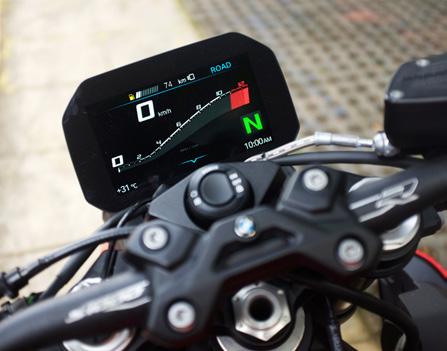
BMW is noted to have one of the best electronics packages in the industry.
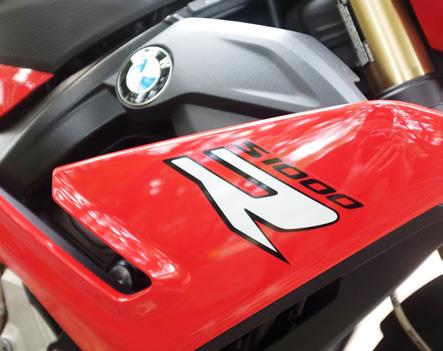
It so willingly obeys my every input, well except for that quick-shifter that sometimes has its own ideas.
The new BMW branded radially mounted brakes work superbly giving good feedback and immense stopping power with a strong initial bite. There’s really no need for a radially mounted front brake master but it would sure be better to look at.


One thing you must be careful with on the S1000R is its oil pan. Watch out for sharp tall humps or even bumpy roads as the oil pan sits quite low and has the tendency to get hit and damaged easily.
In the looks department, the S1000R is pretty good with simple and elegant lines although lacking in character when compared to its predecessor. I quite like the asymmetrical headlights of the old one better but that’s just me.
The BMW S1000R is so hard to fault. It scores high on everything you can throw at it. I just find it, as I’ve mentioned, lacking in character when compared to its rivals. It feels very clinical and sterile, very direct to the point, and easy without many quirks. Not that it’s a bad thing to be predictable, dependable, and reliable.

In typical Bavarian fashion, the BMW S1000R is a well-built, wellengineered bike. It does everything you ask of it and more, magnificently, without any drama. It is a marvelous piece of kit I wouldn’t mind keeping for a very long time. It may very well be the only bike I would ever need.
Plus Fast yet easy to ride. Has top-notch build quality with good electronics.
Minus Lacks a little bit of character, quick shifter is far from perfect.

▲
While it might be easy to dismiss anything that did not come out of the land of the rising sun or Europe, it would be hard to deny the fact that Chinese-branded motorcycles offer more for the buck than their Japanese or European counterparts. Yes, most of them are of questionable quality or so we would like to think, but what if I tell you that one brand from China has taken upon itself to stand out and raise the bar.
CF Moto, a brand that started relatively recently having been founded in 1989, has been striving to develop
and deliver world-challenging products. 540 registered patents in such a short span of time from the Chinese firm attest to its dedication to innovation and research in order to produce and deliver quality products in the power sports industry. Yes, that’s right, it’s not just motorcycles they’re into.
The brand has been in the country for about 4 years having been brought in by our friends over at Motostrada.
CF Moto is slowly eating up portions of the market away from the big 4 Japanese brands. It has consistently converted Japanese brand users into believers, enticing them with low prices to go along with huge performance.
The suspension is soft but performs well enough for the occasional trackday.

CF Moto has been borrowing engine designs from the likes of Kawasaki and KTM, employing these engines in their big displacement motorcycles like the NK650 and the 800MT. That alone is a sure-win formula as their customers get to enjoy Japanese reliability from a more affordable Chinese brand.
But as I’ve mentioned, CF Moto is not about being a copycat, those 540 registered patents are there for a reason. They do not just sit on their laurels contented with using engines from better-known brands.
About a year ago, CF Moto unveiled its SR-C21 concept bike which was designed by CF Moto R & D Europe’s Modena 40 design studio. It is such a beautiful design equipped with top rack race bike components such as Ohlins suspension and Brembo brakes. It features a single-sided swing arm and carbon fiber brake cooling ducts. It was a sight to behold as it looked fast while standing still. The styling was very aggressive and looked like a proper exotic superbike.
Fast forward to the Philippine release of the CF Moto 450SR at the Makina Moto Show early this year, and we were all dazzled and delighted by what we saw. The styling remained faithful to the concept bike despite having lost some of its top-shelf components like the single-sided swing-arm, Ohlins suspension, and top-of-the-line Brembo brakes, but this was to be expected of any concept vehicle coming into production. As soon as I saw it, I knew it was going to fly off the showroom floor like hotcakes at a festival.
With a sticker price of only PHP 299,900, the CF Moto 450SR is such a bargain on paper. Features like the 5-inch full TFT dash, Brembo front brake, USD fork, and multi-link rear suspension setup were enough to wet my pants.
To tell you the truth, I was quite eager to get the 450SR out on the track to see if it can perform as well as it looks. I was excited to hear and feel the power of CF Moto’s newly developed 270-degree 450cc twin engine. For those of you who aren’t familiar with this engine architecture,
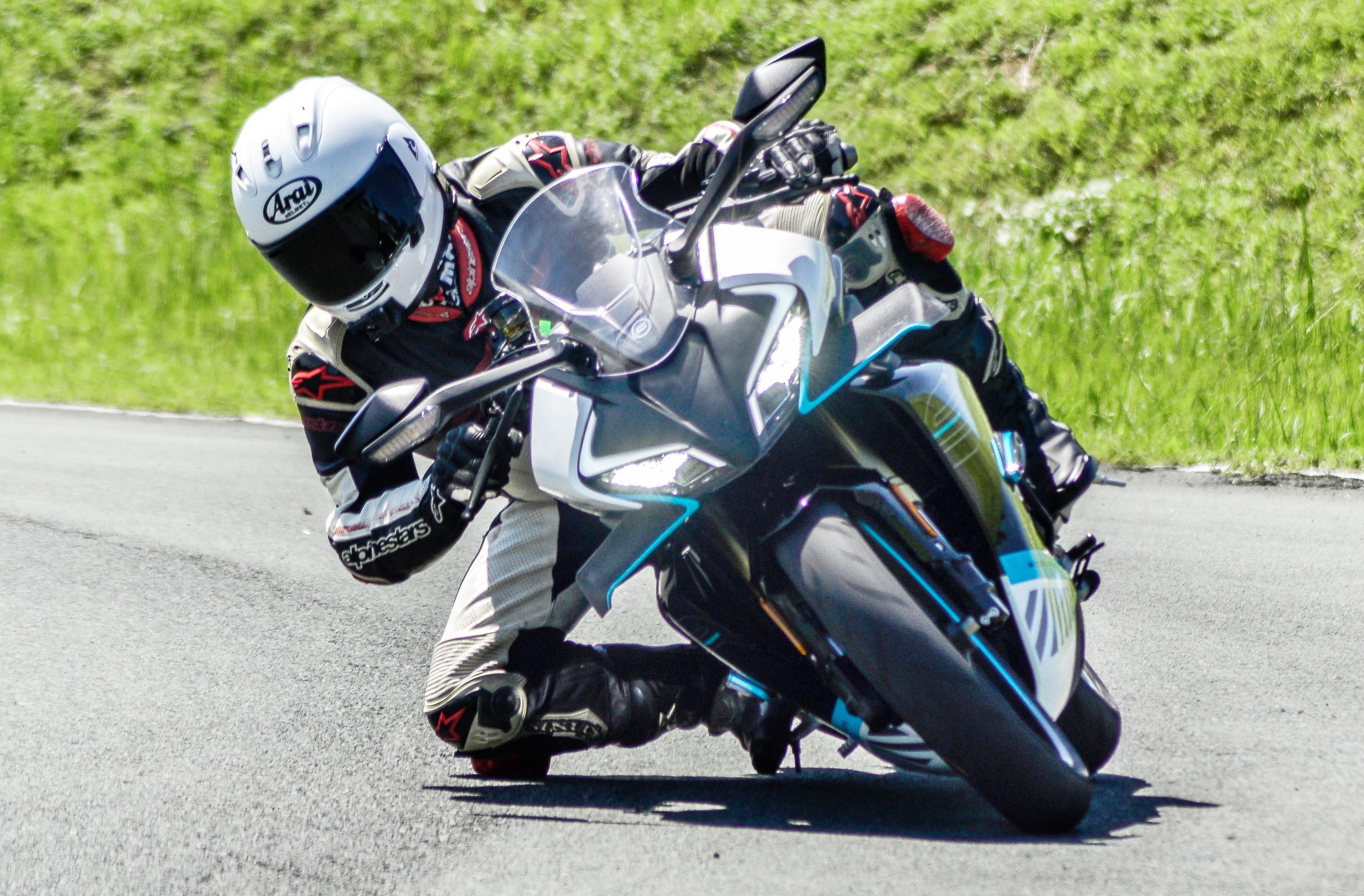

the 270-degree crank firing cadence mimics a V-Twin in a parallel twin platform. It is much like Yamaha’s Crossplane CP4 engine on the R1 emulating a V4 layout or an even closer comparison, the CP2 engine on the R7 and MT07.
Unlike other engines in the CF Moto lineup, the 450SR’s is of its own design. The advantage of the 270-degree crank over the more common 180 degree is the more linear power delivery and power pulse recovery for better traction under load.
Motostrada’s 4th-anniversary track day at the Batangas Racing Circuit was my first dance with the 450SR. Excited

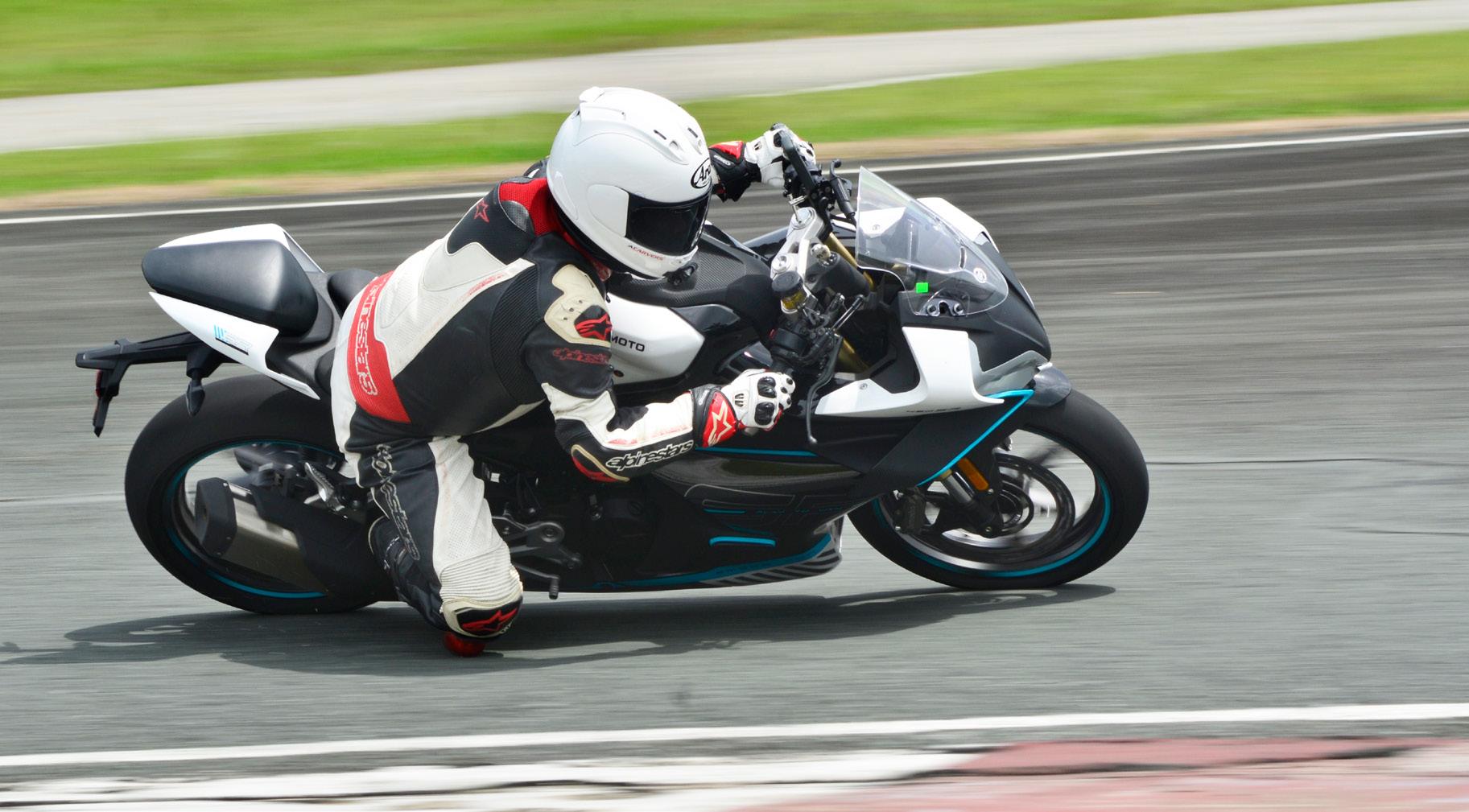
as I was, I waited in line for my turn to try out the bike. Finally, I was out on track heating up the 450SR’s tires when someone in front of me crashed. So we were flagged back into the paddocks to wait for the crew to clear up the track. Then, I had to sit out a session since there was another guy waiting to ride the bike. After all that drama it was at last, my time to stretch the 450SR’s legs and put it through its paces on the track. I soon found myself duking it out with modified Kawasaki Ninja 400 riders. There’s even video footage of one of the fun battles that took place between me on the 450SR and one Ninja 400.
▼ The 450SR has the potential to be a good track tool. Improve the suspension and tires, let the engine breath easier and you've got an absolute weapon.
On the straights, the modified Ninja 400 would catch up to me and even pass but then I would pass it on the corners. The 450SR despite its relatively soft suspension handled very well even at that pace. While everybody was saying that the suspension was too soft, I say it is spot on for guys who would use this on the road and will just do occasional track days with it. Of course, as with any other bike, the suspension will need some work if you plan on using the 450SR as a dedicated track bike.
For the bumpy tarmac of BRC, I say the 450SR’s suspenders did a pretty good job of keeping the rubber in contact with the track surface. I never felt it bottom out or skip, and I was absolutely ripping it.
Because I only had 1 full session on the 450SR in BRC, I decided to borrow it once more for a solo day of testing. The day I had it out, there was a storm brewing down south in the BRC area so I was forced to take the bike as far north as possible to avoid rain.
We brought it out to Tarlac Circuit Hill as it was the only track that day that had clear skies. Yes, Tarlac Circuit Hill is too small for the 450SR but I was desperate, and it had fast corners that were wide enough for the bike. There were only about 2 to 3 corners there that were tough to get through on the 450SR.
Being on a track that is more technical than BRC, the 450SR did not falter even on the OE tires. It was wearing a set of CST tires. That was the first time I noticed the tire brand. In BRC, the tires performed well enough that I didn’t even pay any attention to them but TCH is a whole different animal. There was less time for the tires to recover and I soon found myself overheating them a little bit. It was nothing dramatic, the tires started to slide controllably. There was no sudden loss of traction. It gently alerted me to the fact that it was nearing its maximum point of adhesion.
The Brembo brake caliper worked very well, able to bring the bike to an abrupt halt if needed. Although there was some air in the system making it feel a bit spongy, I was still able to have a good feel for the brakes.
That TFT display makes the package feel more premium over the 450SR's competition from more established brands.
That engine sound was glorious even on its stock can, it reminded me of my old Aprilia Mille R. Power delivery and fueling were also up to snuff as I found it very easy to control on the throttle. The 50 HP output from the 450SR is comparable to some 650 CC twins from other brands so it was full of pep in this 450 CC package.
The 450SR tracks well on its ears. It can confidently hold a line all the way through to the exit. Weighting the bars easily makes it yield to your chosen trajectory. It hides its 168 KG curb weight very well and paired with a relatively low seat height of just 795 MM, I find the 450SR quite easy to handle even in parking lot situations.
The 5-inch TFT dash looks premium and feels state of the art displaying essential information easily seen at a
glance. The switch gear looks decent and doesn’t feel cheap. The only thing I didn’t like about the bike is the use of faux carbon fiber. I mean come on, that stuff should’ve been left in the ‘90s or early 2000s. Oh, and it could have done away with the winglets as the 450SR is far from having superbike performance to merit the use of such, having a top speed of only 190 KPH.


Overall, the CF Moto 450SR is more than the sum of its parts. It is of great value and of good build quality. If there was ever an award for the best bang-forthe-buck motorcycle, this will definitely win it. I am amazed at how they can price this bike this low and still have this level of performance and quality.
With this kind of output, I can’t wait to see what CF Moto has in the works for us next.

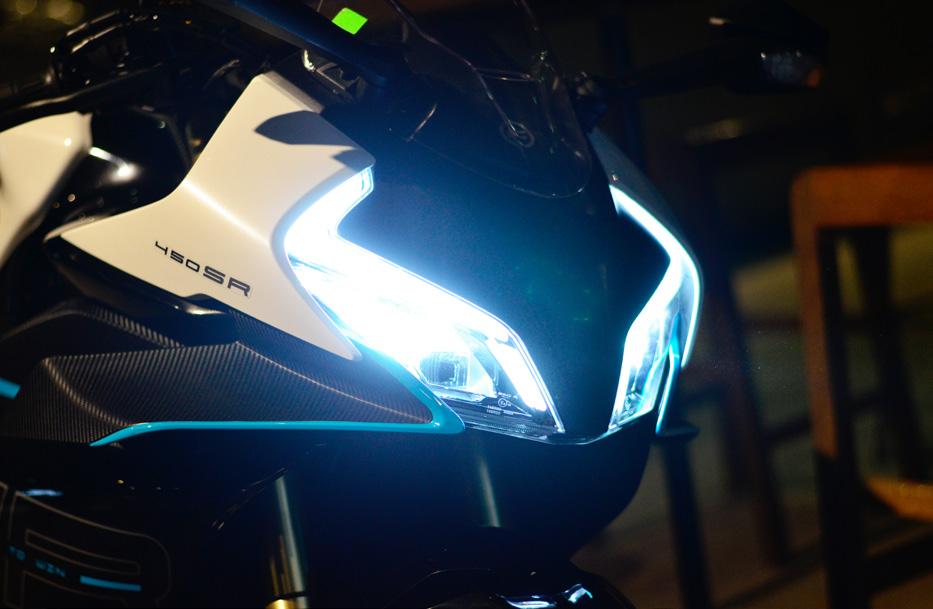

“The 450SR tracks well on its ears. It can confidently hold a line all the way through to the exit.”

Aplethora of choices combining style, performance, and comfort presented in different packages to suit every possible customer need and taste from the Yamaha Mio series of AT motorcycles have made it a powerhouse in the local small displacement market. Capturing the hearts of so many riders, it has now cultivated a culture within its own sub-groups, and has been recognized as the number one series in the segment.
Choosing between each model in the Yamaha Mio series lineup can leave those of us who are in the market for a cost-effective yet snazzy run-around in a quandary.


On paper, it has pretty much the same basic specifications as its pricier siblings the Mio Soul i ( PHP 79,900) and Mio Gravis ( PHP 89,900) under the skin. At PHP 77,400, the Mio Gear is not only more obtainable, but it also has features that aren’t available on the
more expensive Mio Soul i like the SMG (Smart Motor Generator) that does away with the conventional starter motor in place of one that doubles as the stator. The SMG system contributes to less weight which leads to better acceleration and fuel economy like in the Mio Gravis and Mio Aerox. It also has a built-in USB charger that dispenses the need for a separate cigarette lighter charger unlike in the Mio Soul i.
Compared to its bigger siblings, the Mio Gear is almost as compact as the Mio Sporty making it easy to maneuver in bar-end-to-door-skin situations saving you time and money by being able to freely filter through obstructing vehicles. With the same peppy 125 cc engine as the one in the bigger Mio Gravis, in the Mio Gear package, it feels even more alive and free to spin out power enabling you to make swift overtakes without much drama. A LED headlight as standard keeps night riding visibility at par with its more expensive siblings.

“The Mio Gear’s step-through flat floor design and rider side back step make it so practical allowing it to haul big loads, even a sack of rice if you really must.”
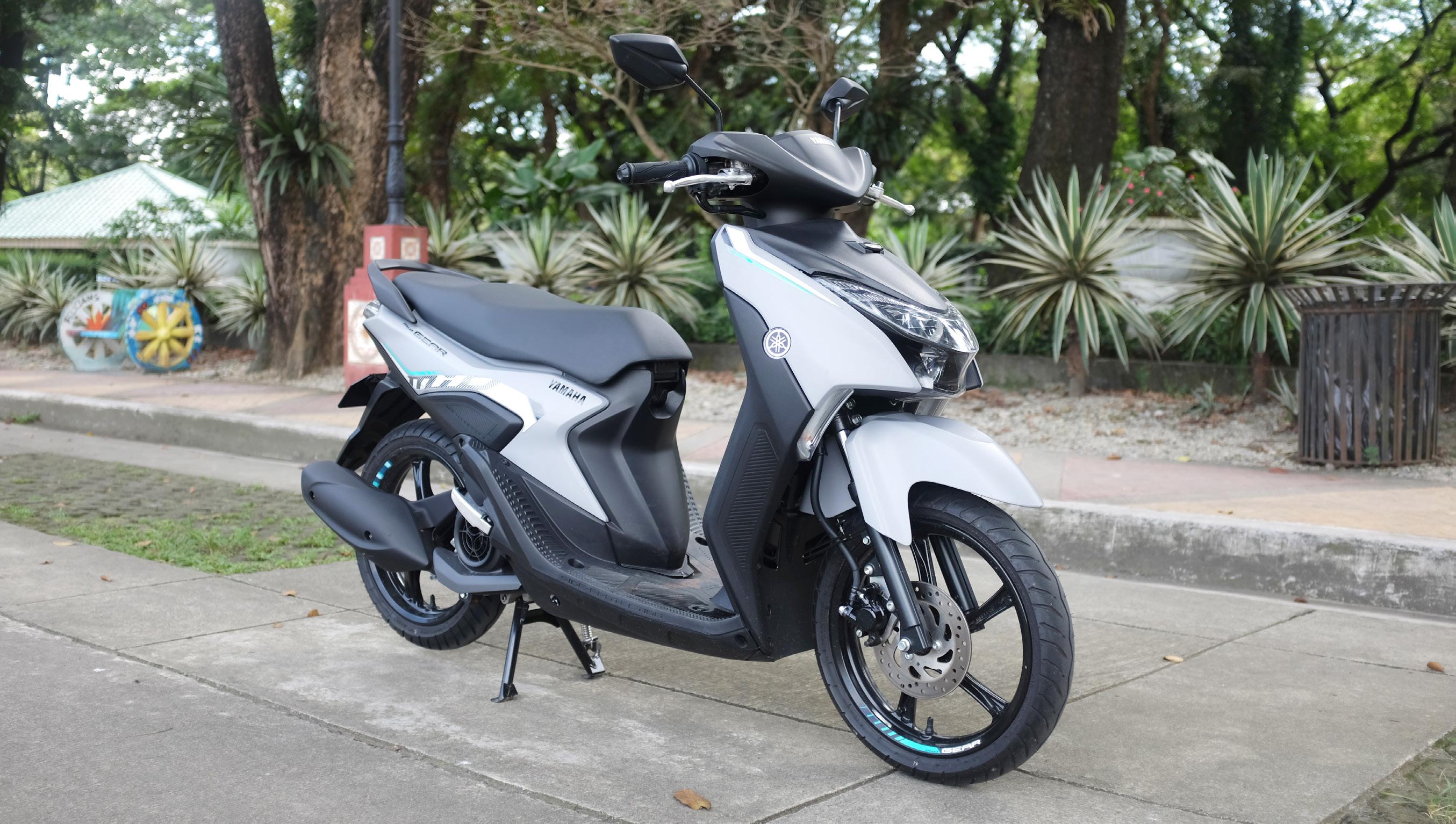
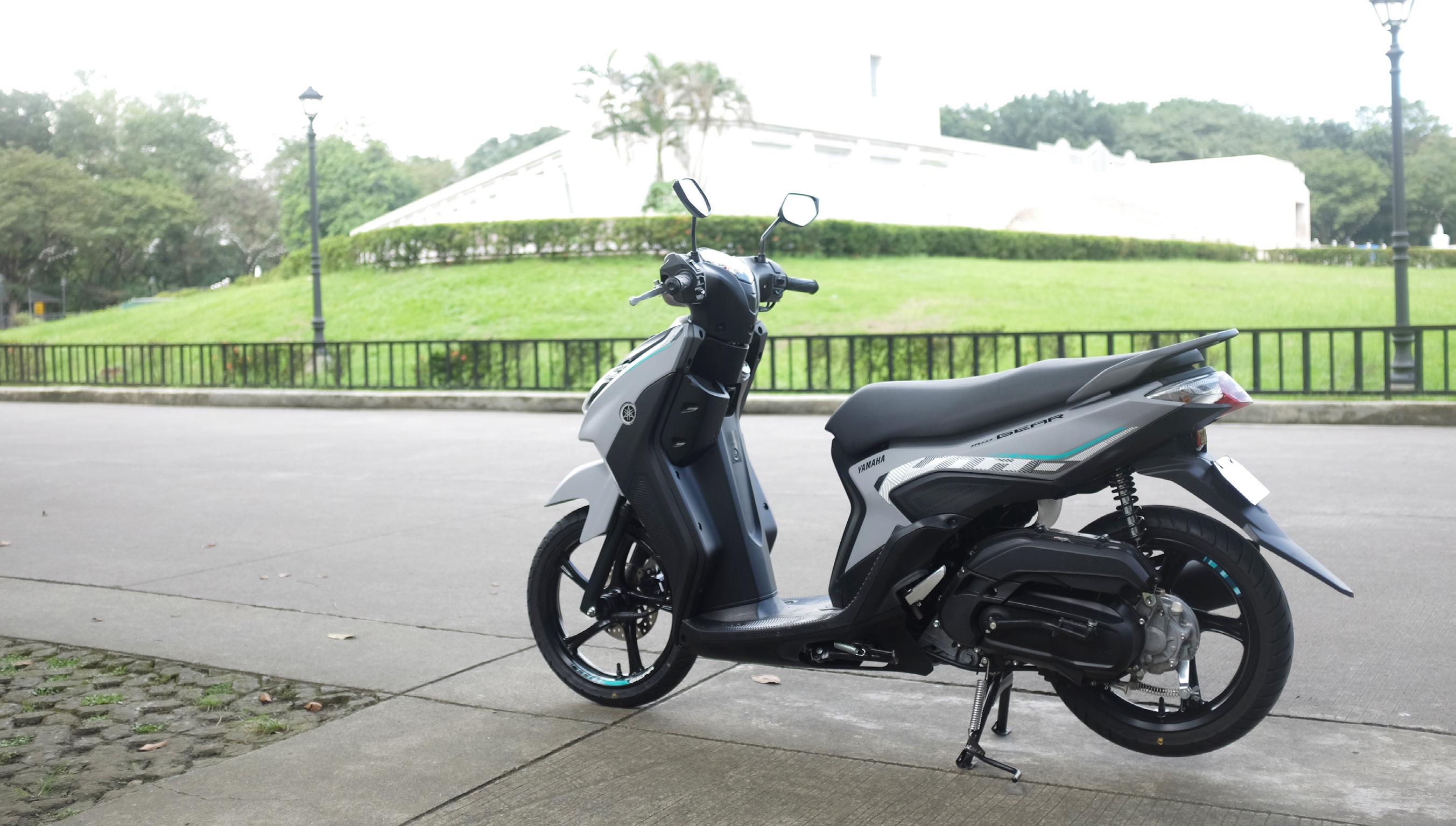
Having ridden the Yamaha Mio Gear around Cebu City and the northern half of the province, made me realize how much better its suspension damping is compared to the OE suspension on the Mio Aerox as it was able to cope with bumps at high speed even while cornering. The disc front and drum rear brake combination is at the spot between being just enough and needing a tad bit more bite if you like riding swiftly although enough to anchor the bike in normal riding situations. The rear brake lever lock is also a welcome feature when stopped or parked on an incline.
The Mio Gear’s step-through flat floor design and rider side back step make it so practical allowing it to haul big loads, even a sack of rice if you really must. The low seat height of 750 mm makes it very easy to handle even for
▲ Those hooks conveniently let you hang a variety of things while on the go.
the more vertically challenged among us. The upright riding position and well-padded seat make riding on it comfortable even for several hours on the saddle. Pillion riders will find the low yet wide-ish backseat very easy to perch on.
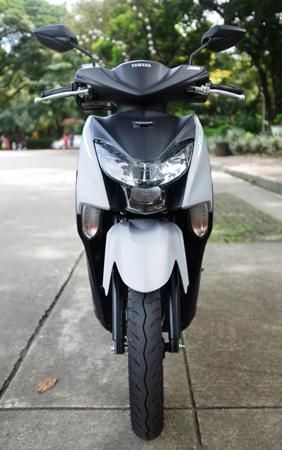




In the looks department, if you're one like me who's attracted to soft, subtle and smooth-flowing lines paired with a tough and rugged exterior, compared to its siblings the Mio i 125 and the Mio Soul i, the Mio Gear is the better choice as opposed to the heavier stylized variants that feature sharp jagged edges that look very busy.
The short wheelbase and 14-inch wheels paired with the well-damped suspension give the Mio Gear a very nimble and lively handling characteristic with enough poise through corners so as not to rob
you of your confidence while riding spiritedly. Riding from Cebu City to Durham White Beach with my Bluetooth communicator, GPS, and Music on would’ve drained my phone’s battery. Thankfully the built-in USB charger kept it going with the cubby hole keeping my phone secure even on rougher sections of the highway. As we rode through the Cebu Transcentral Highway and the twisty roads of Sogod then to the Cebu-Cordova Link Expressway I found myself thinking I couldn’t possibly need anything more than what the Mio Gear offers.
With a fuel economy of above 50 kilometers to a liter on a mix of city traffic, mountain twisties, and highway blasts, the Yamaha Mio Gear is just enough for any casual rider who would need something for daily commutes, weekend blasts, long-distance tours or even for use as a workhorse.

Yamaha Mio Gear is also available in an S variant. Mio Gear S is priced at PHP 82,400 and is equipped with additional features like the stop-start system which saves fuel by shutting off the engine while stopped on idle then seamlessly starts it back up once the throttle is actuated. It is also equipped with an answer-back remote to help you find your Mio Gear S in a sea of similar-looking scooters by sounding off and flashing hazard lights once the remote button is pressed.
The Mio Gear may be overshadowed by its more popular siblings, but the truth of the matter is that it performs just as well if not even better, and really just about covers all your essential daily rider needs without you having to break the bank.
Plus Feature packed entry level scooter with great fuel economy and versatility.
Minus Color choices may be a bit boring for some. Specification — Yamaha Mio Gear

otostrada, the country’s exclusive distributor of MV Agusta, CFMOTO, Peugeot, and Zontes motorcycles recently signed a partnership with motorcycle dealership giant Wheeltek Motor Sales Corporation lastNov 17, 2022at the Motostrada showroom in Caloocan City. This collaboration will initially bring CF Moto and MV Agusta into the Wheeltek fold. Under this partnership, CF Moto will be expanding its reach eventually to the entire nation bringing full-service showrooms closer to



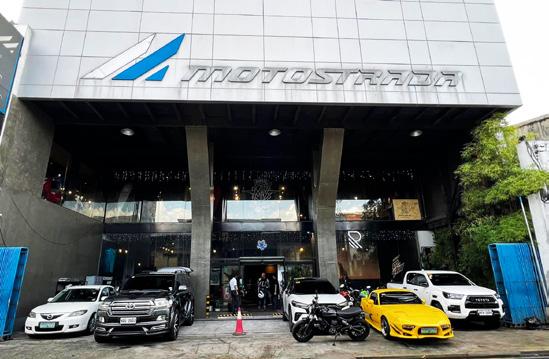
enthusiasts via the Wheeltek network. Gracing the joyous occasion were Motostrada CEO Emmanuel Lu, Michael Lu, Joanne Lu, and Camille Lu, and over on the Wheeltek side, Vice President for Sales and Marketing Roscoe Odulio, Big Bikes Division General Manager Bobby Orbe, and Big Bikes Division Regional Manager Elmer Olayon.
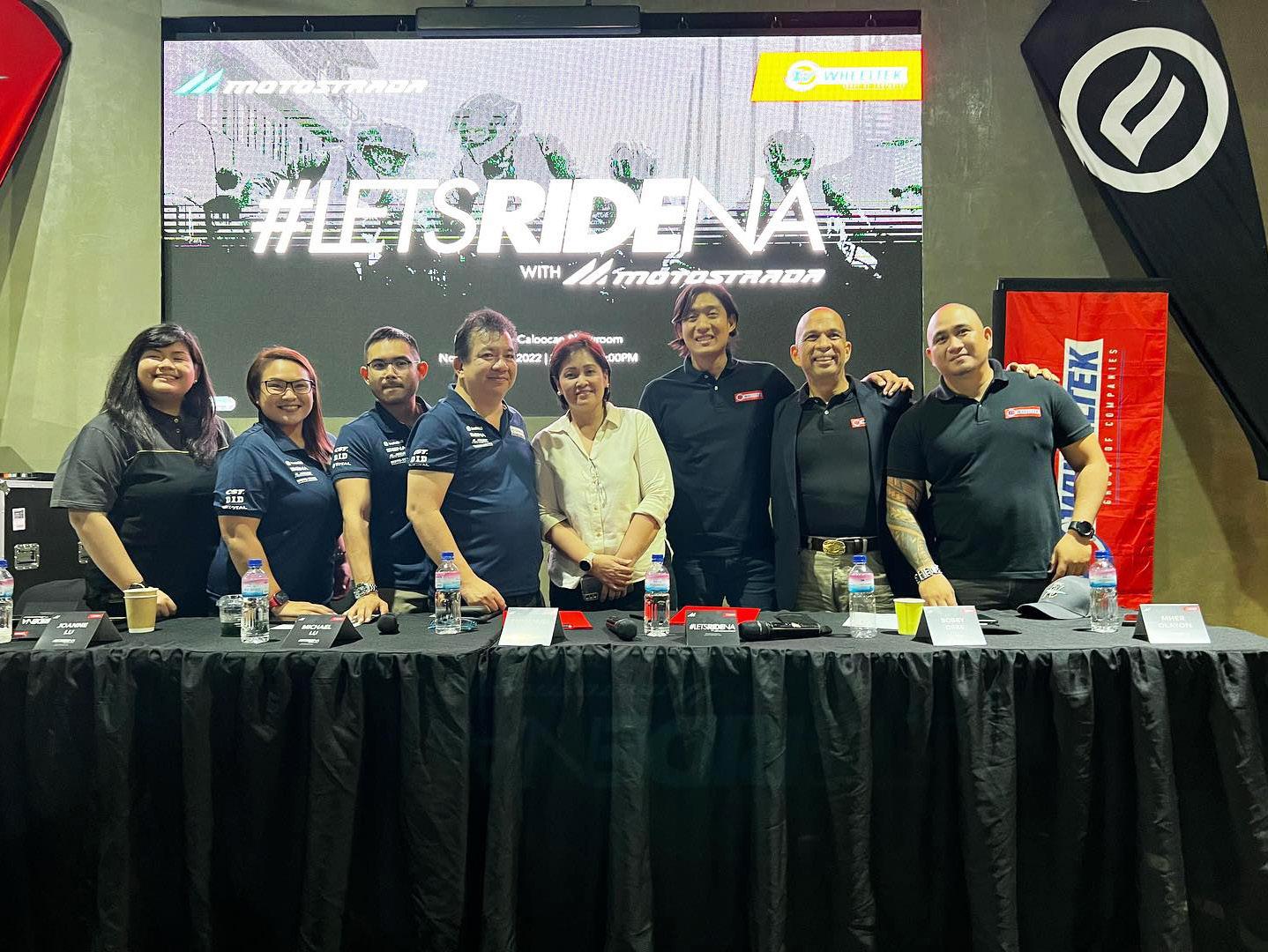
Wheeltek Motor Sales Corporation is inching its way to total market domination by carrying more and more brands spread into its showrooms. Wheeltek’s confidence in the CF Moto brand further cements CF Moto’s position in the


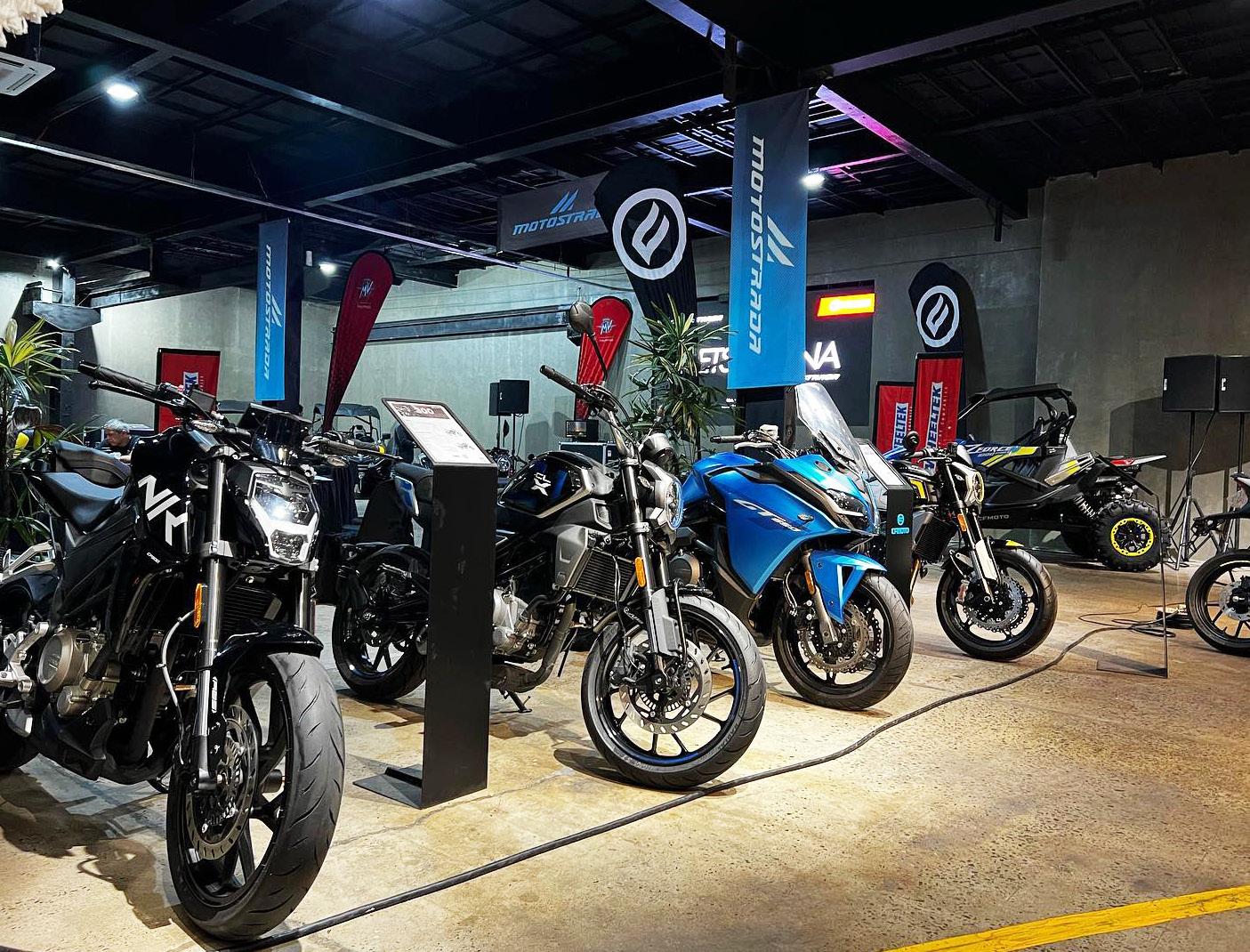
mainstream market competing against the more established Japanese brands. As the agreements were signed, exciting days for both companies await as we anticipate CF Moto’s expansion into new market territories previously untapped by such Motostrada products.
It was an inevitable match as the Lus and the Odulios have been doing business together since the 1980s as told by Motostrada CEO Emmanuel Lu in his opening speech. While it would seem that Motostrada is a new player in the industry having only 4 years under its belt, its history stretches as far back as the late 90s and early 2000s when it operated the Dreambikes Superstores. Dreambikes carried brands like MV Agusta, Cagiva, Malagutti, KTM, Husqvarna, Binelli and Beta. They were among the first to carry these European brands in the Philippines and are fondly remembered by long-time riders who used to gawk at bikes in their stores.
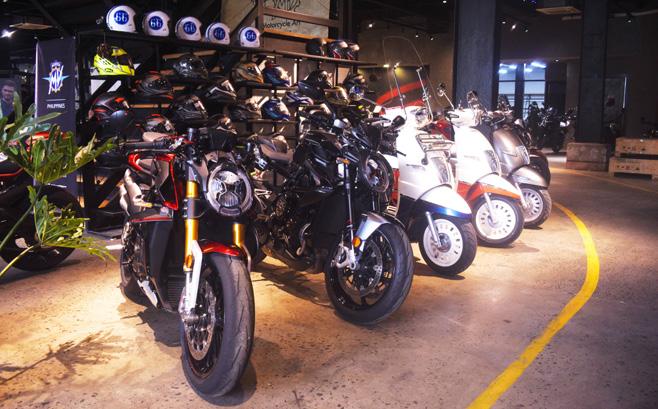
This is only the start as Motostrada will continue to bring in more and more exciting brands into the local market as its CEO divulged to us in a side discussion. Pure passion for motorcycles from the people behind both companies became evident in the stories they shared on the microphone of fun times from decades back of Bobby Orbe’s and Emmanuel Lu’s rich history in the local motorcycle industry together.
Wheeltek now sets the stage for MV Agusta as they set up a new store for the brand in the Makati area bringing it closer to folks down the southern half of the metro. This very niche market brand with high-performance rolling works of art can now be purchased and serviced closer to you through the soon-to-open Wheeltek dealerships.


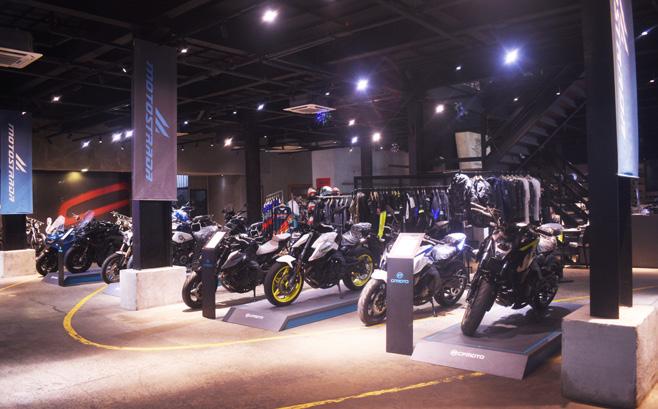


With exciting new products such as the 800MT, 450SR, and the 700CL-X, CF Moto is poised to take a huge chunk of the leisure bikes market out of the competition's hands. CF Moto’s very affordable pricing and good quality products now paired with Wheeltek’s vast sales network are a great treat to the motoring public having easy access to such great products.
Congratulations Motostrada and Wheeltek!



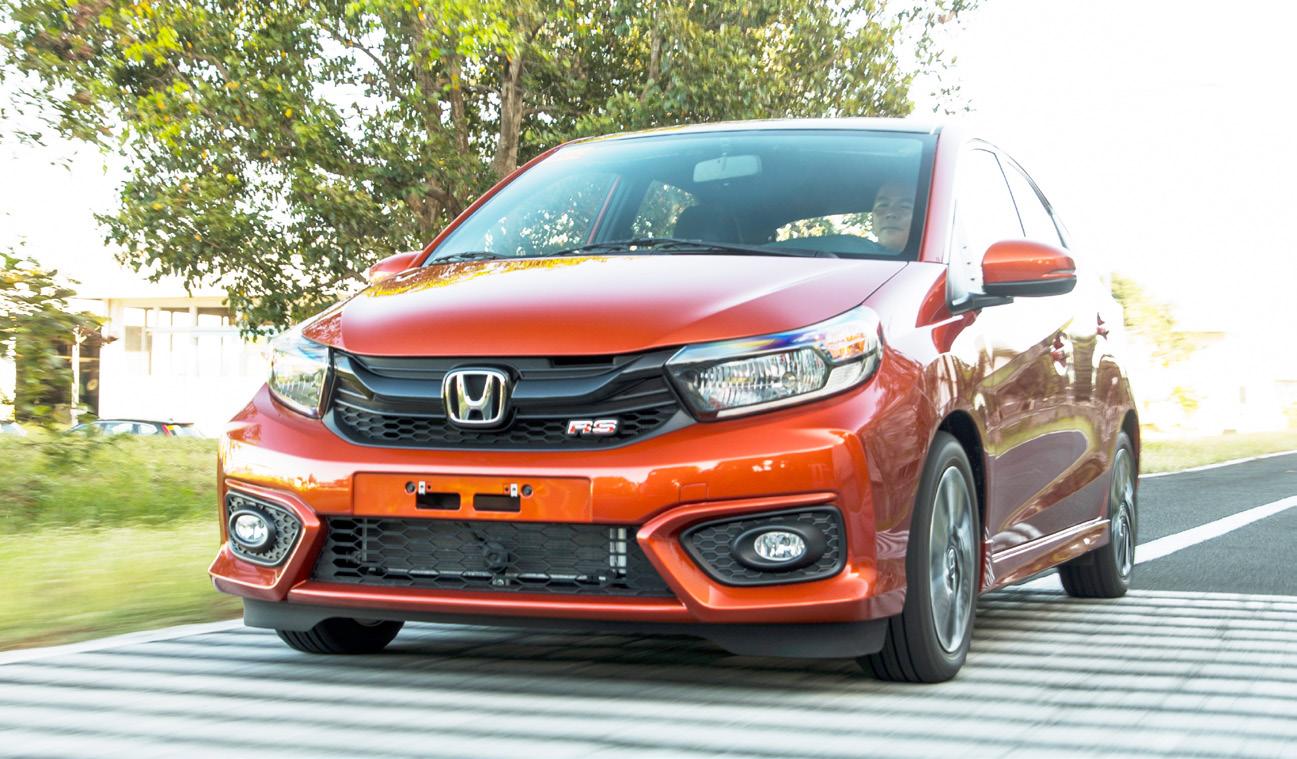

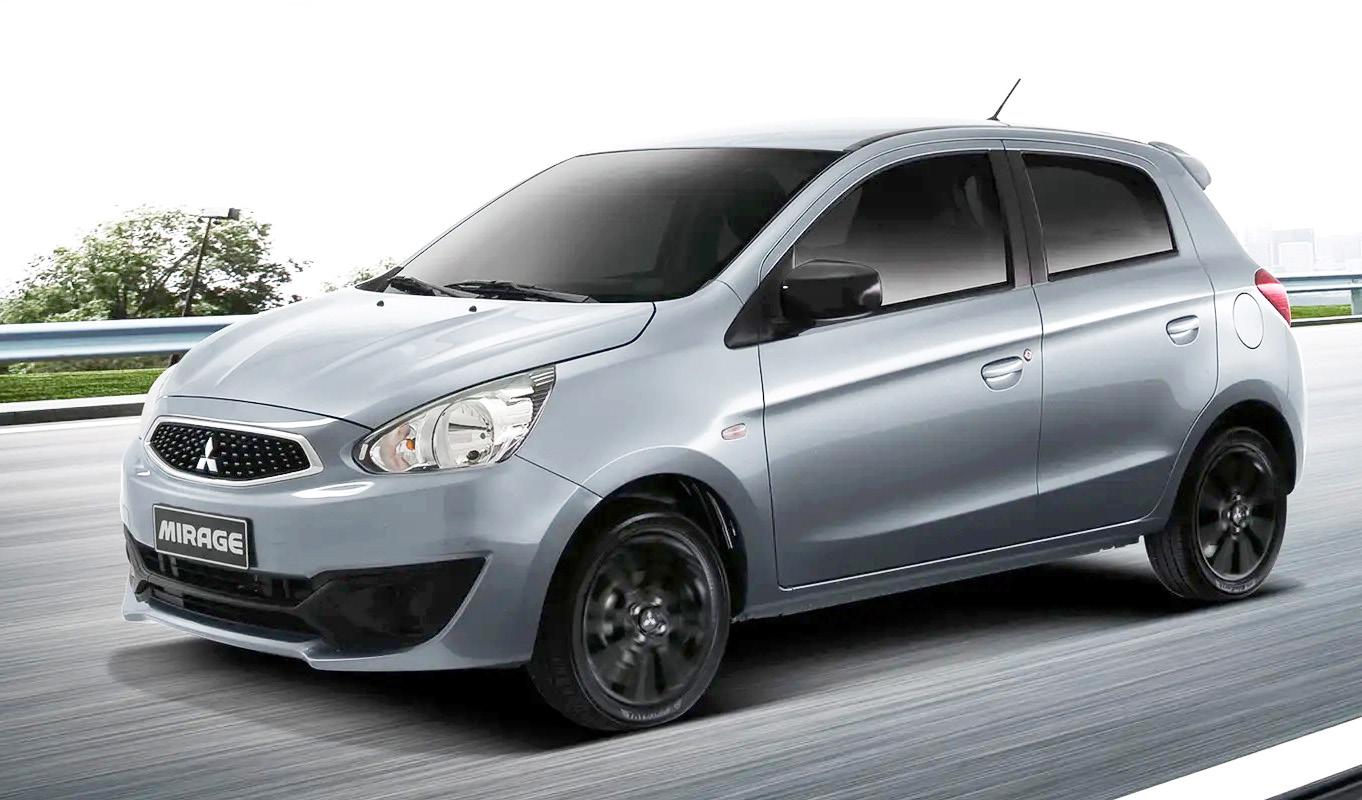







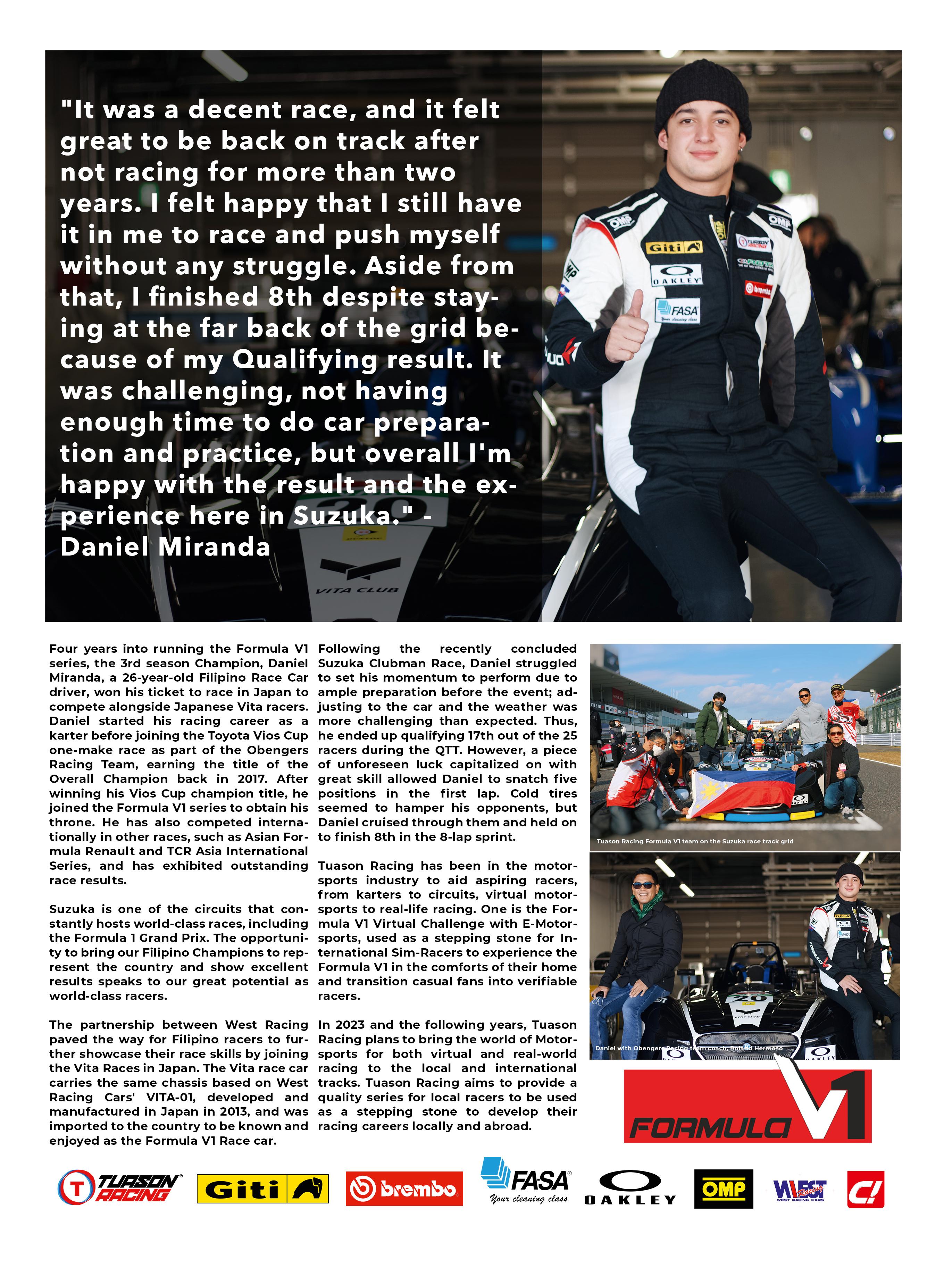
I will not go against the flow of traffic.
We know you don’t want to wait in line — no one ever does. So this year, fight that urge to leave it when you see the incoming lane is empty to try and slot yourself in closer. More often than not, it’s monkey-see-monkey-do. And when you set a precedent of making your own zipper lane, other kamotes will usually follow suit.

I will start using my turn signals before making a turn. A common cause of a lot of accidents at intersections is the miscommunication between drivers making a turn and drivers wanting to go straight. The next time you want to make a turn, remember that no one can read your mind. Switch your blinker on at least 100 feet before your turn and be mindful of incoming traffic. If your counterpart isn’t a kamote, they’ll likely slow down to let you through without incident.
I will follow the lines painted on parking lots.
The next time you think about parking your beloved car using more space than necessary to protect it, thinking the people around you will understand, stop yourself. We aren’t at a car show and we all want to take care of our cars too, which is why the lines are there in the first place. More people get to park and you keep your door from getting dinged-up; it’s a win-win!
I will not use my hazard lights in the rain.
Hazard lights were made to signal moving traffic that you’ve stopped, hence the name. Which is why it doesn’t serve you or your fellow motorists to use them while you’re moving fast in the middle of torrential rain. In 2023, ditch the misguided logic that it aids people in seeing you better on the road. They don’t see you in the darkness of night either but you don’t turn your flashers on then, right? That’s what your lights are for.
The turn of the new year also signifies the turning of a new leaf for most people. While most resolutions during the start of the year revolve around making changes to improve oneself such as losing weight or smoking less, how about resolutions to make our roads a better place?
like.
Hazards also don’t give you immunity to come to a halt in the middle of the road for however long you want, unless you’ve truly broken down. This year, be a better driver and stop in designated places to drop off or pick up passengers. And when you take longer than expected, give other motorists a chance to do their business on your spot. You can’t use your flashers as a forcefield against security guards making you go around.
I will not hog the inner lane. You see it mounted on overpasses along highways across the country: “Inner lane is for overtaking.” Let’s finally give this the attention and respect it deserves. Even when you’re driving at the speed limit, stay clear of the passing lane. If other kamotes want to overtake you by going past the speed limit, remember that it’s not your job to police them.
I will only use my high-beams when it’s necessary.
Thankfully, we’ve now been seeing newer vehicles that adapt beam strength automatically when there’s oncoming traffic. While these are slowly becoming standard, for now, always remember that you’re not the only one on the road that needs to see. If you find that your headlights are way too dim, maybe stop to think that it’s your car that has the problem.
I will not drive intoxicated. This one’s a no-brainer, yet we see these videos time and time again of kamote drivers plying the road totally sloshed getting into horrible accidents. Let’s try and lower this statistic this year. Remind yourself: When you drive drunk, you not only put yourself in danger, you put everyone else as well.
I will make my car road legal. Got non-LTO issued vanity plates or strobing brake lights mounted to your vehicle? Maybe you want to consider the start of the year to be the perfect time to chuck ‘em in the trash. While we’re certainly not against modifying cars (we have an entire section devoted to this, afterall), we also want to advocate abiding by the laws of our roads. Illegal modifications or accessories are not only tacky, they’re also dangerous. Trust us, it didn’t look cool last year, it certainly won’t look cool now.
I will practice restraint and avoid altercations.
Repeat after us: Road rage is not worth it. Not only might you be the next YouTube sensation, it’s hard to tell what the opposite person might do to you. For all you know that other kamote might just be packing heat stored in his glove compartment or tucked under his shirt. So think to yourself: Is it really worth losing my life over?
I will not use my hazard lights to stop anywhere I
